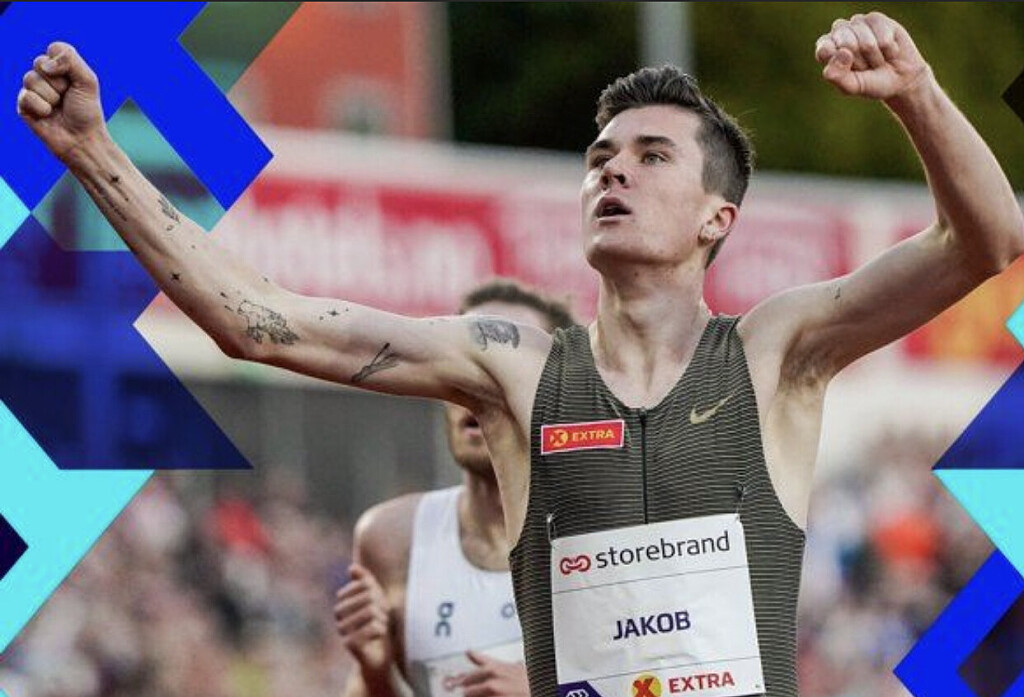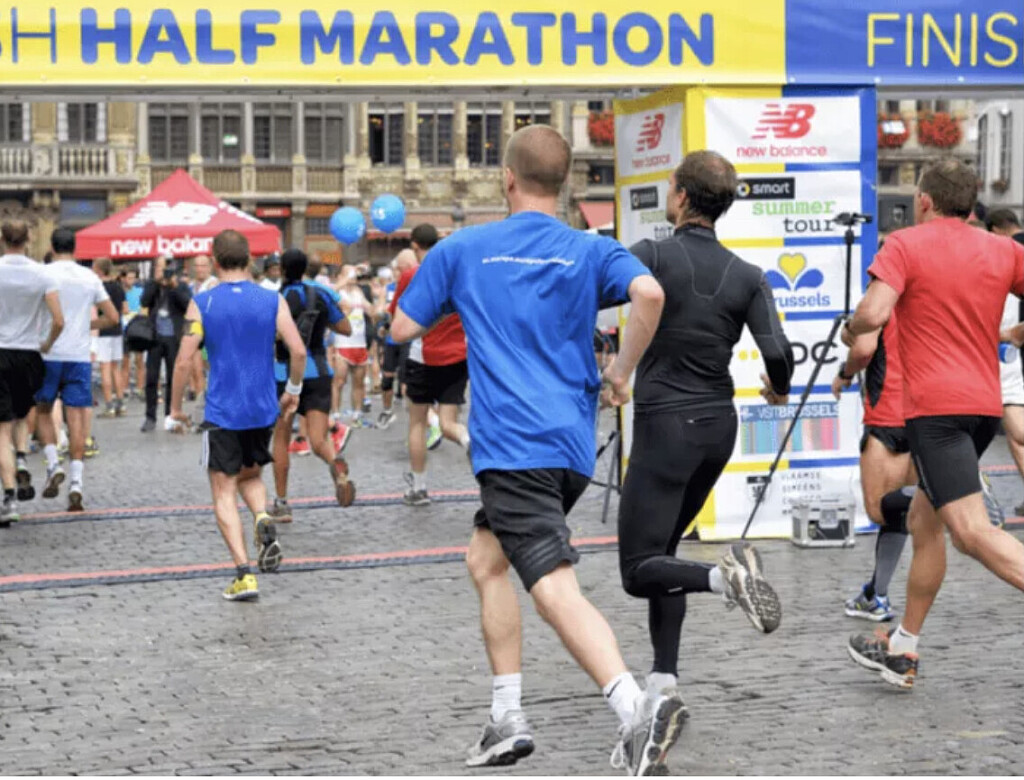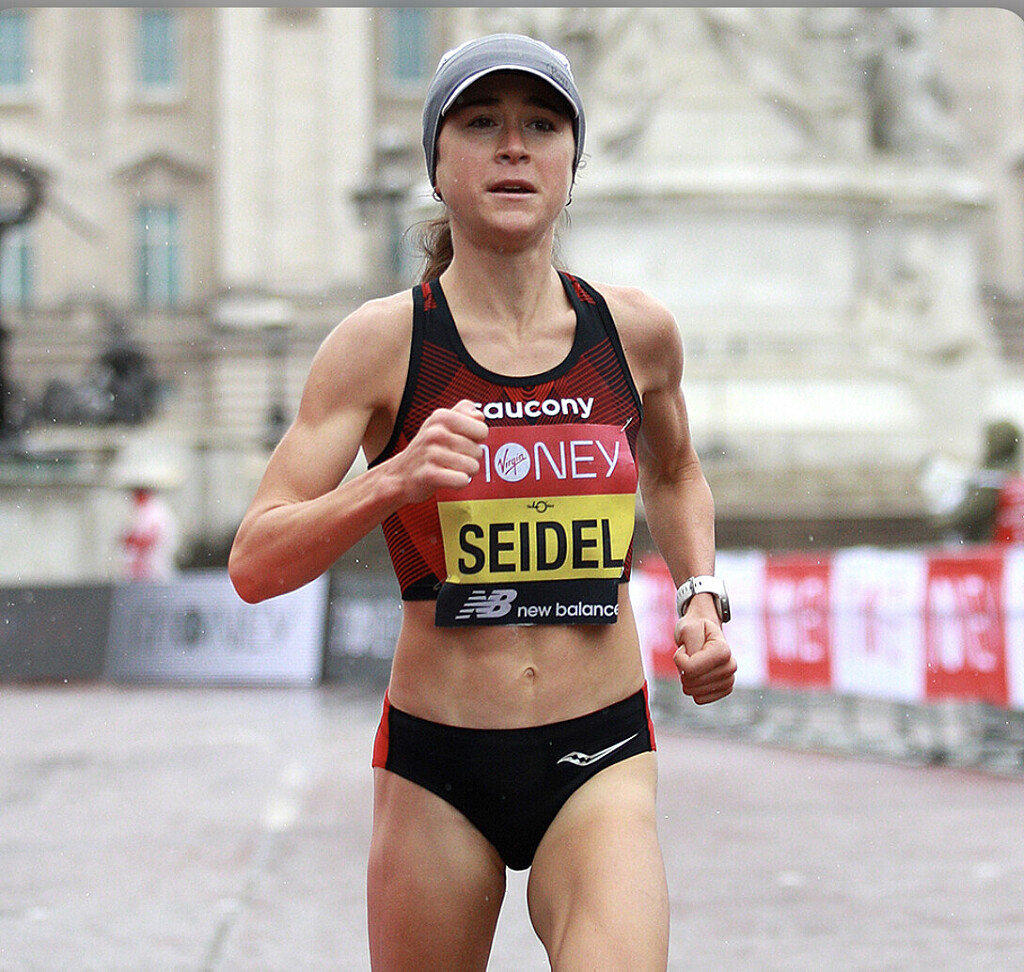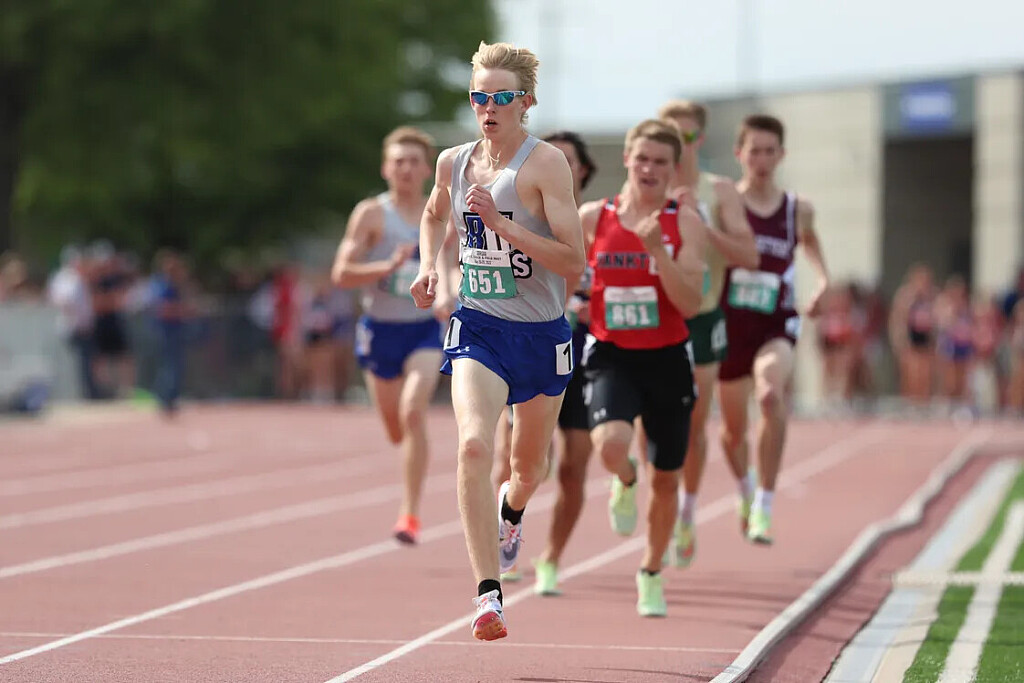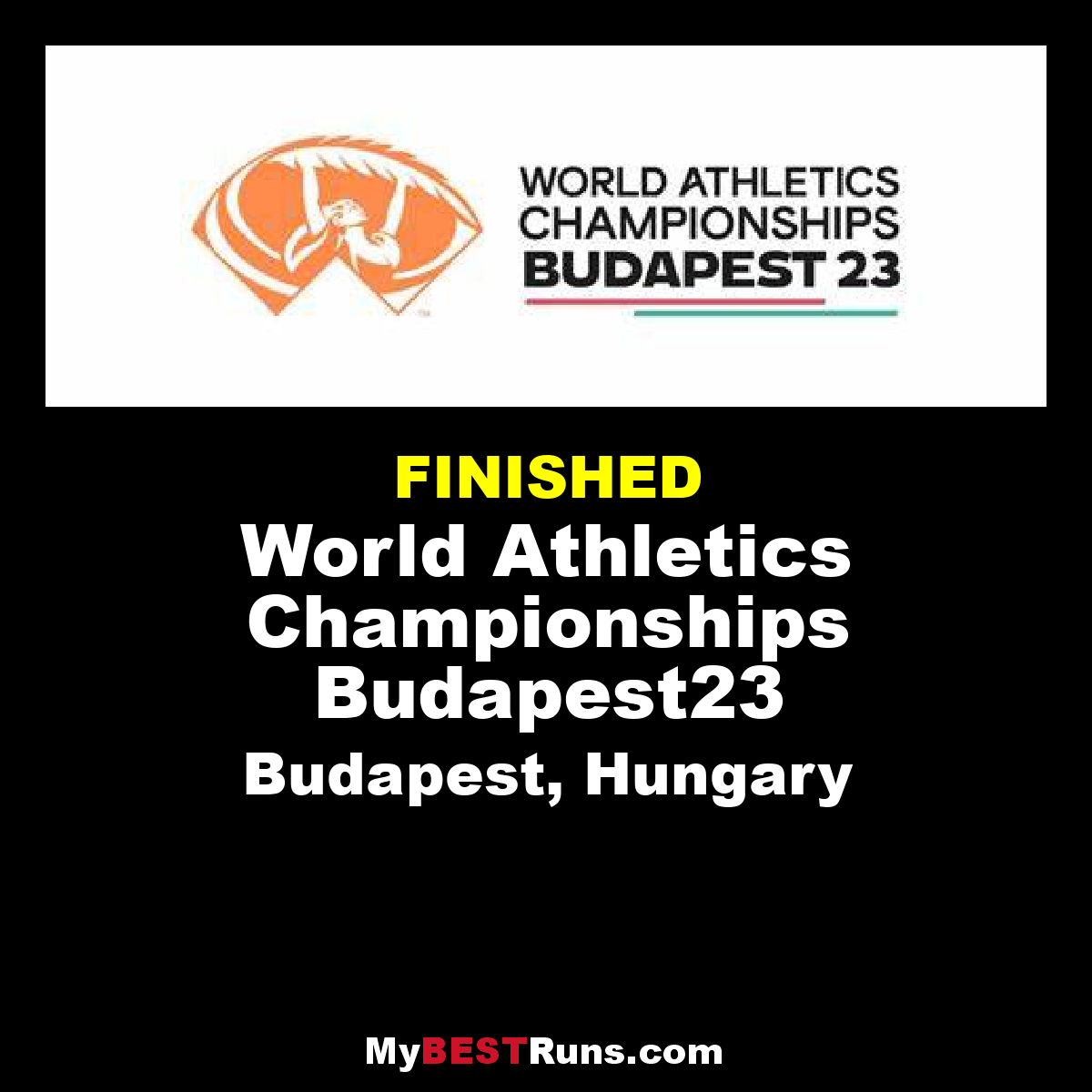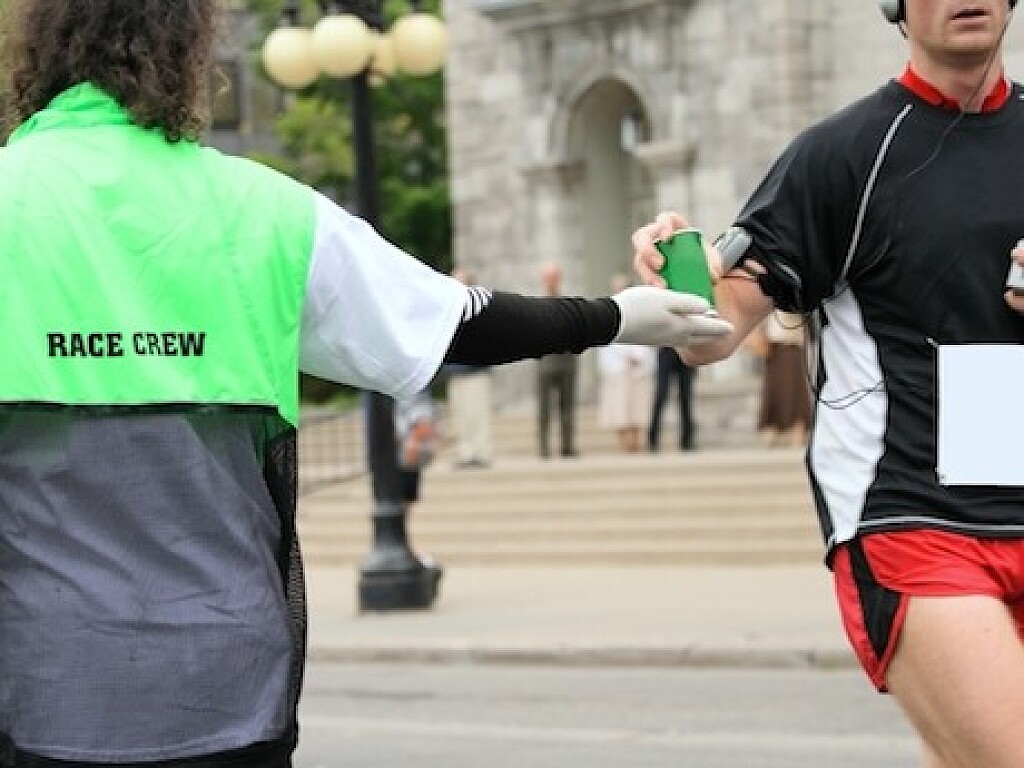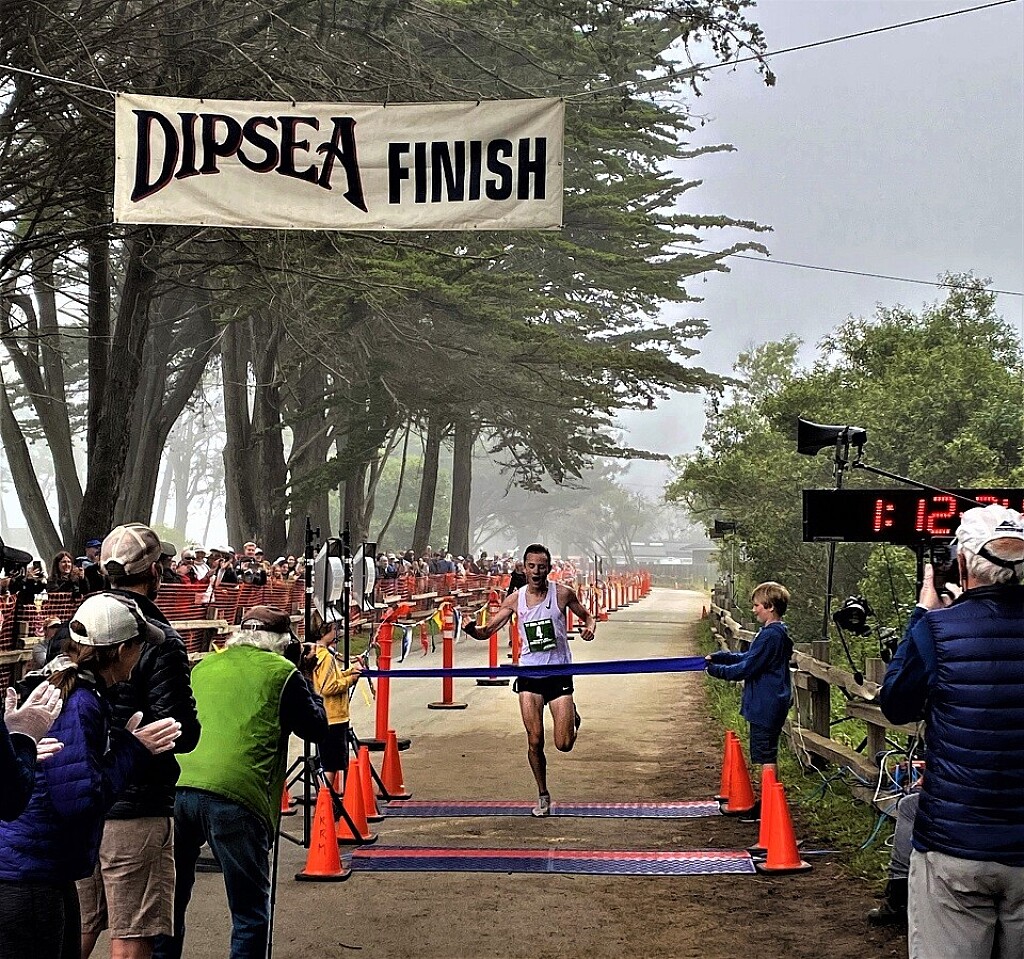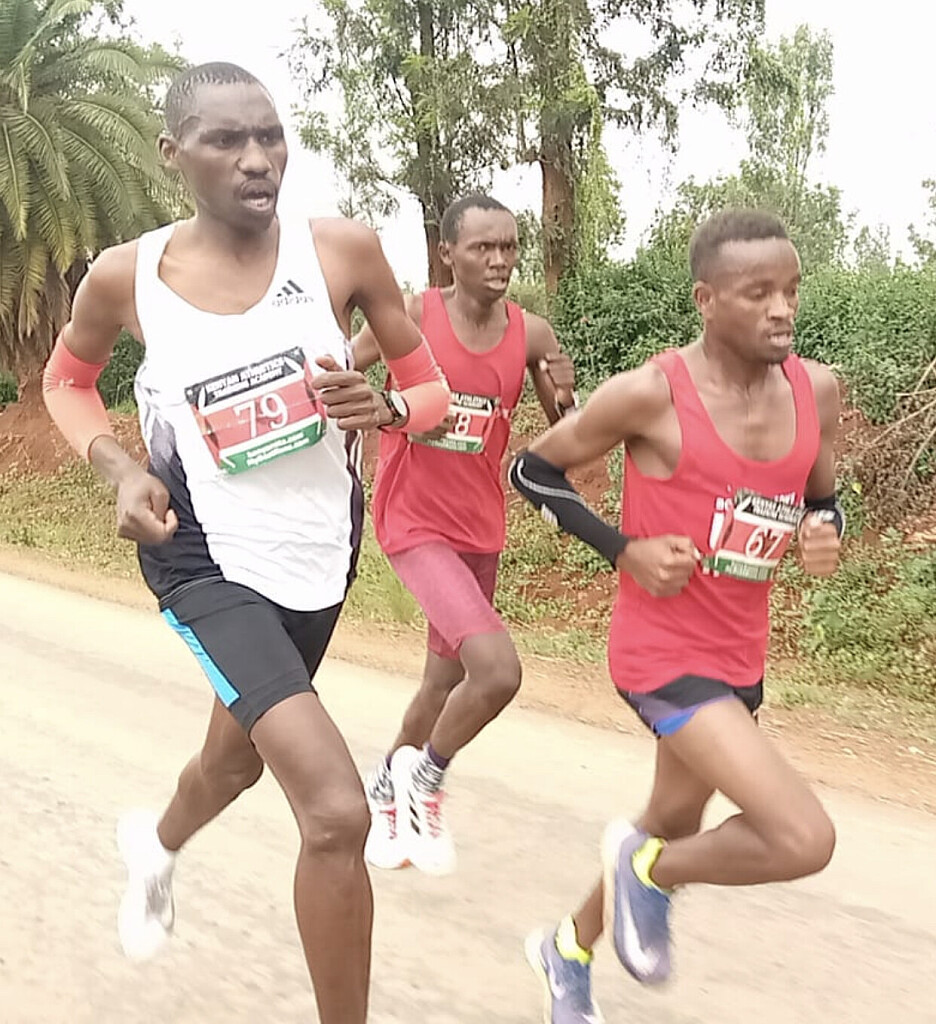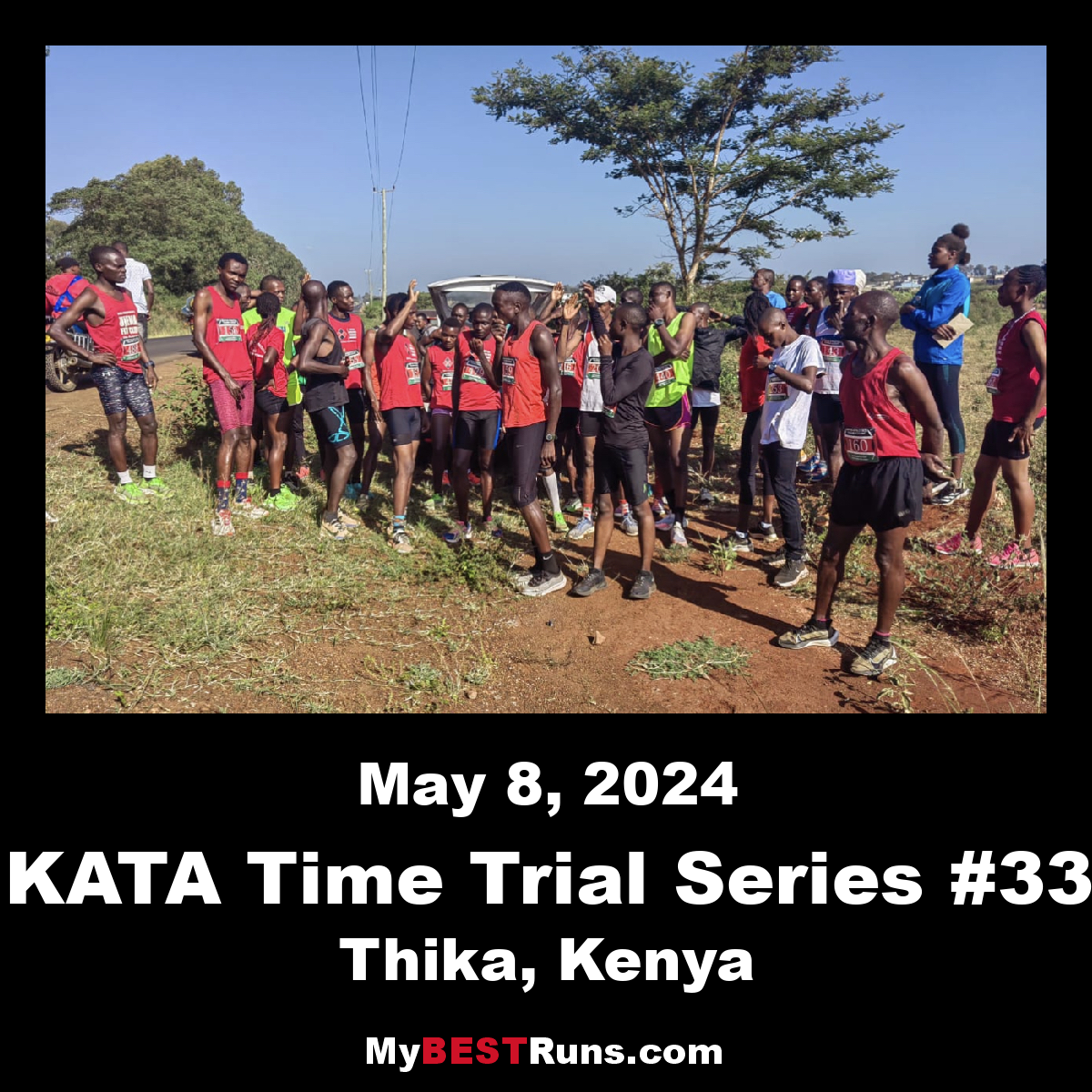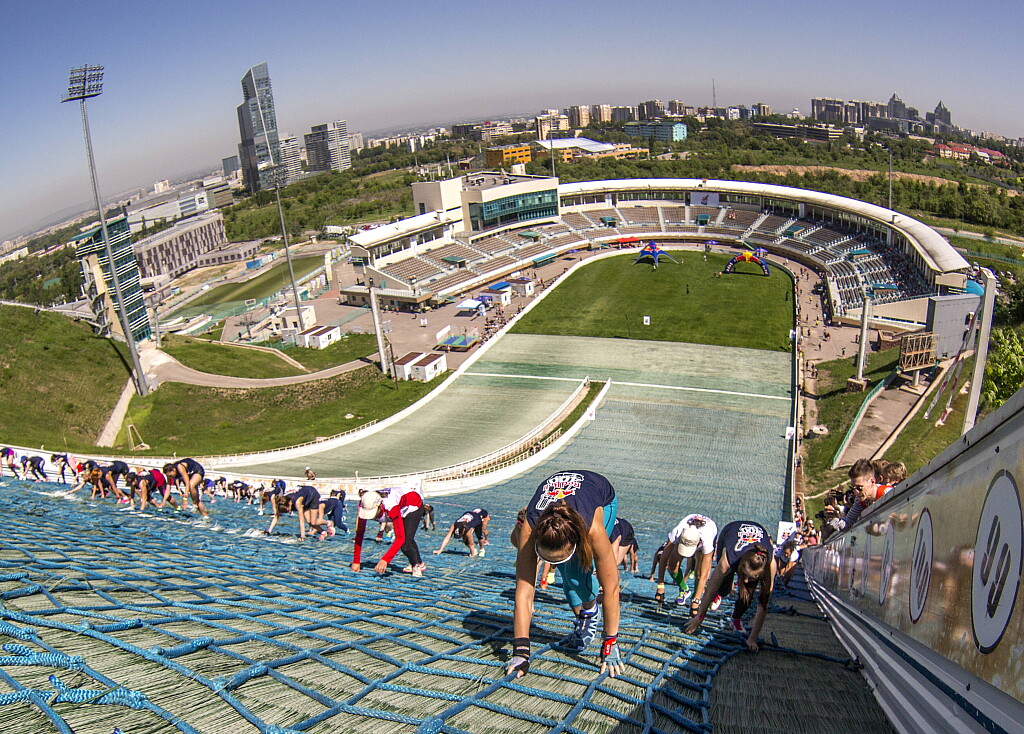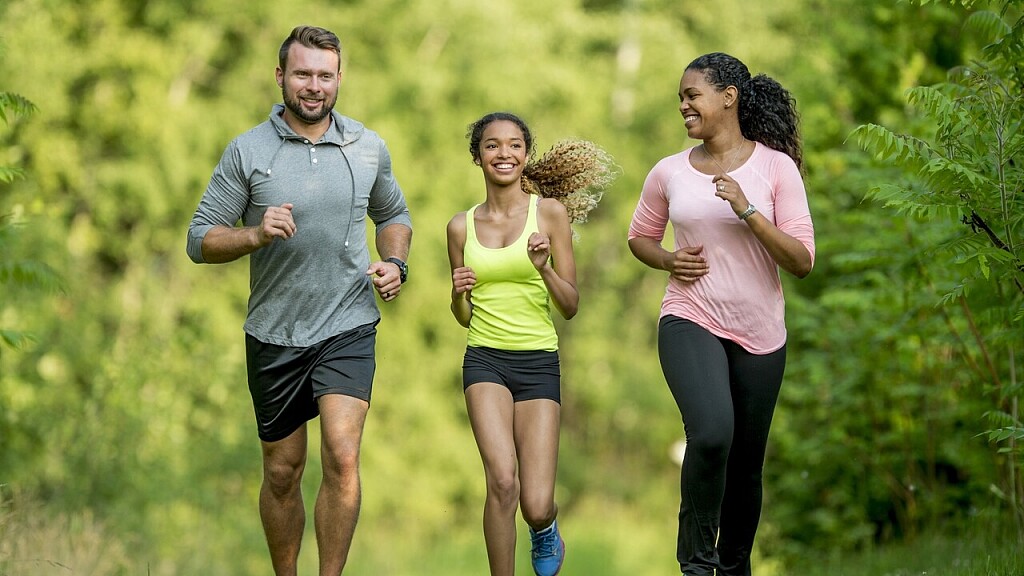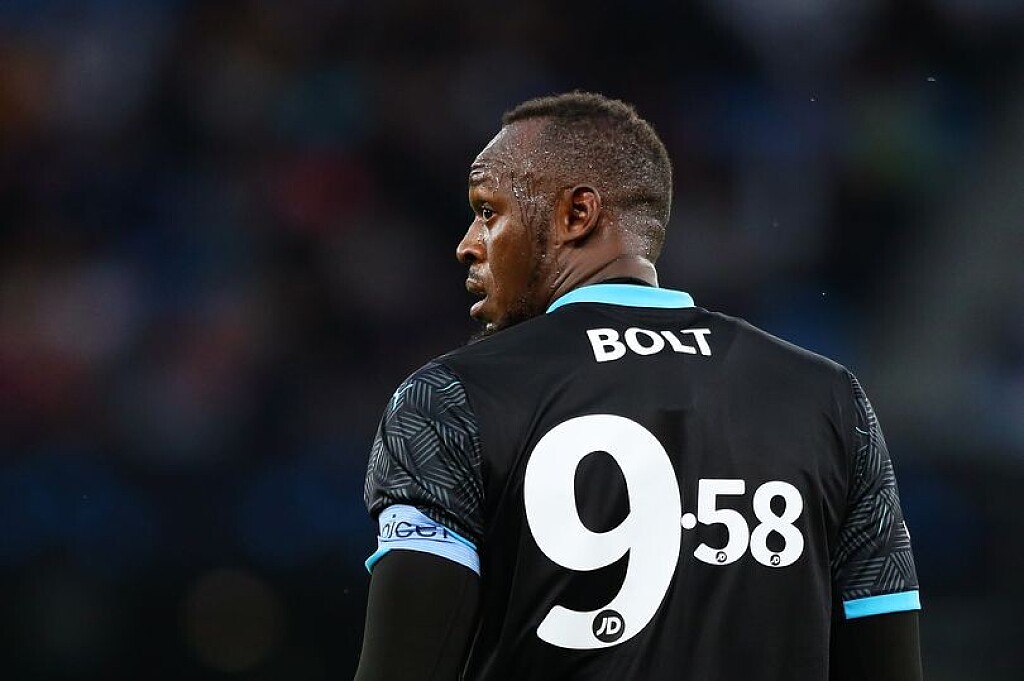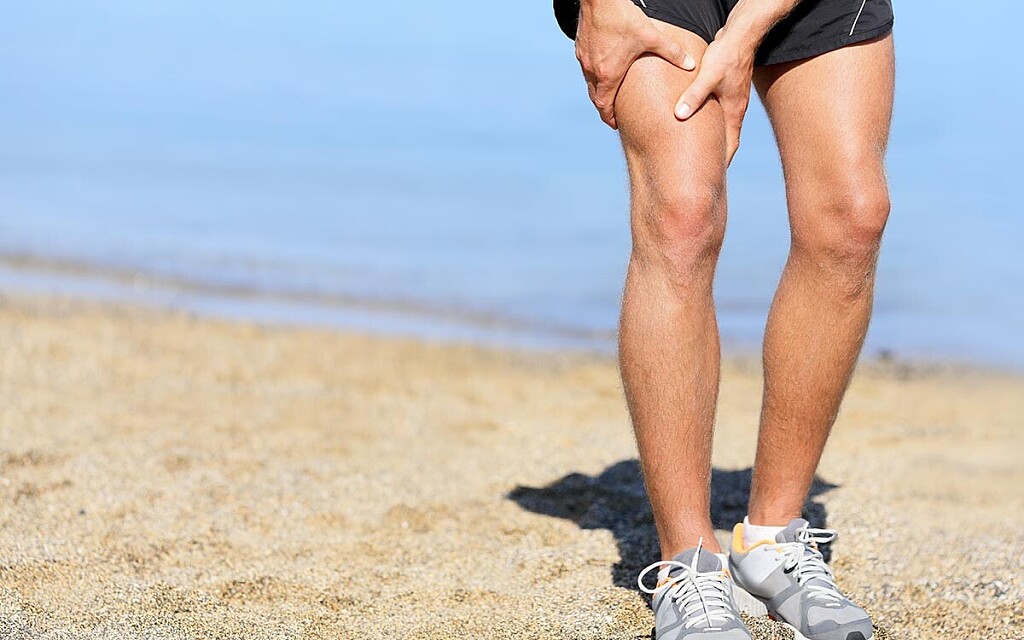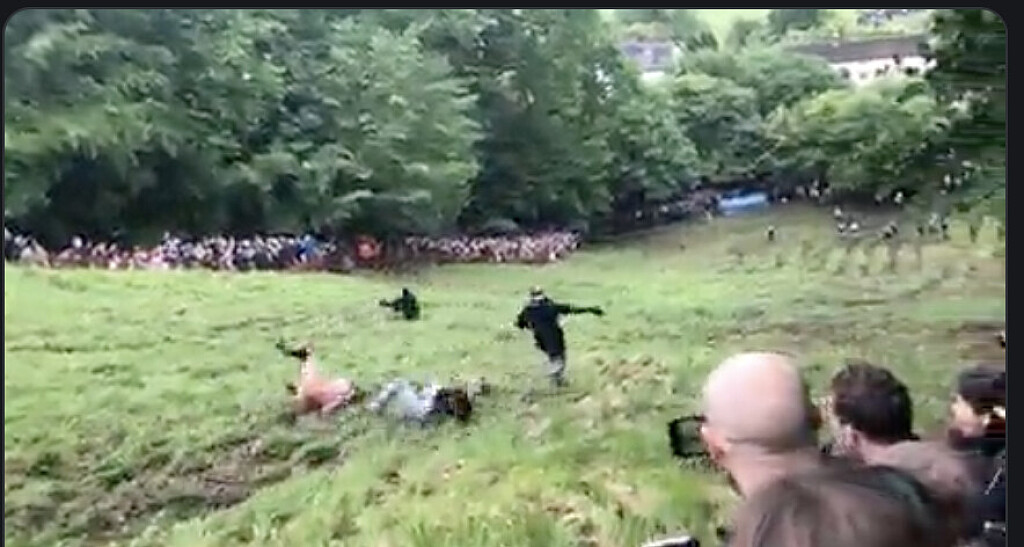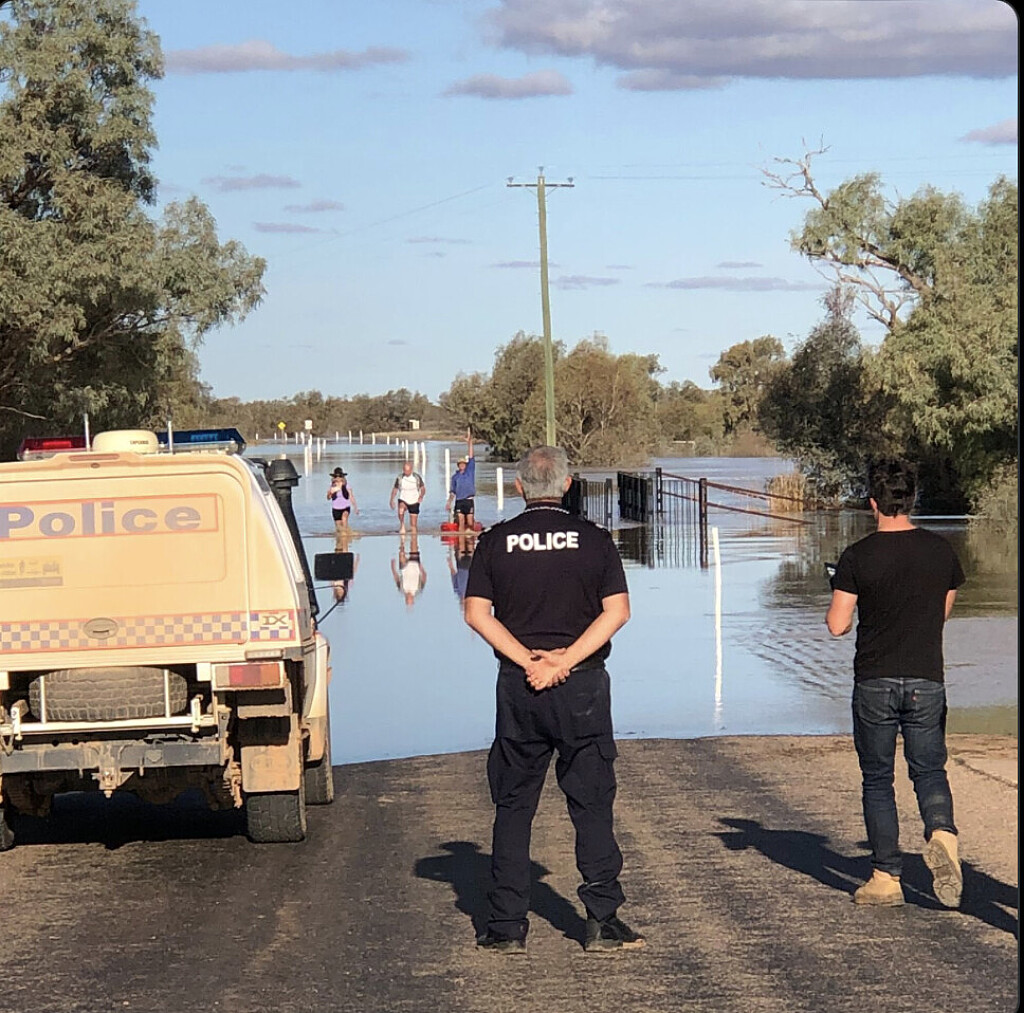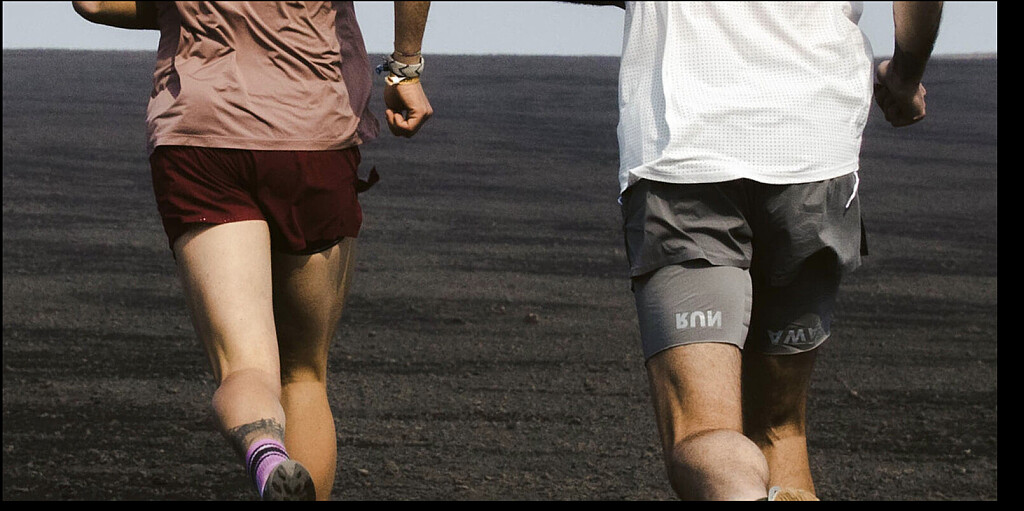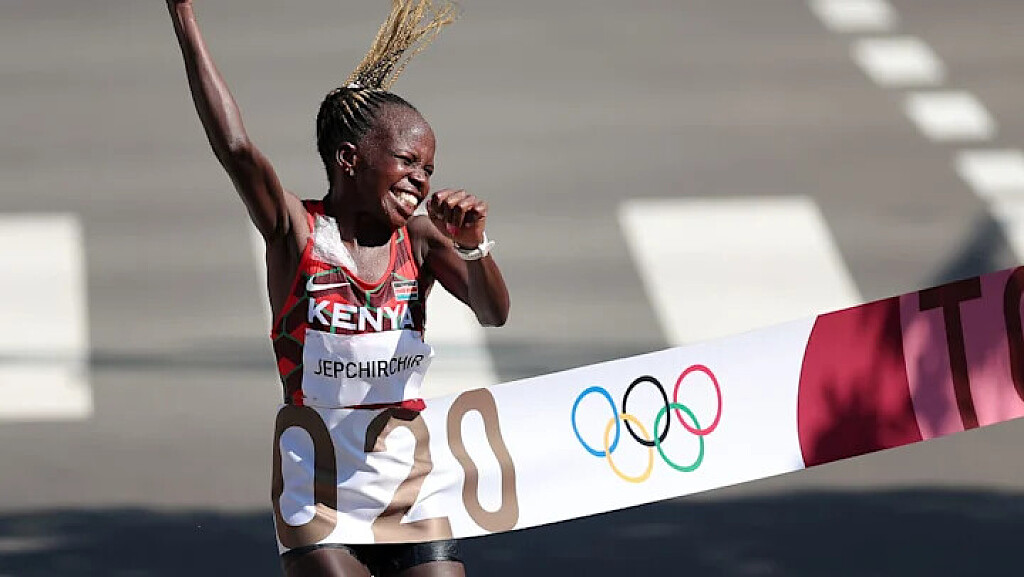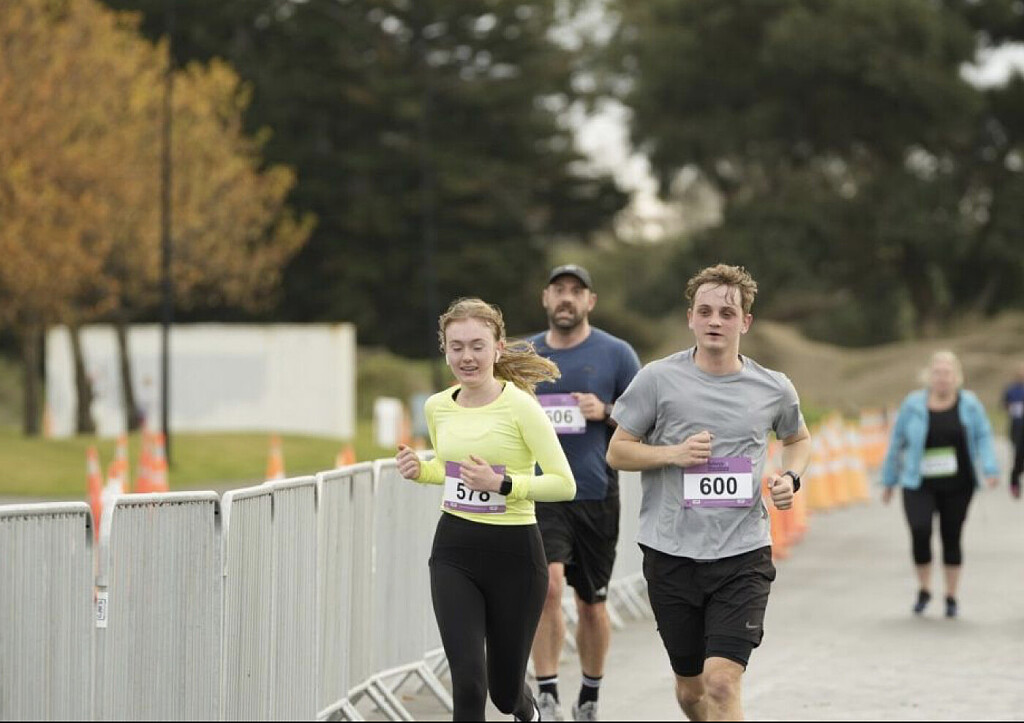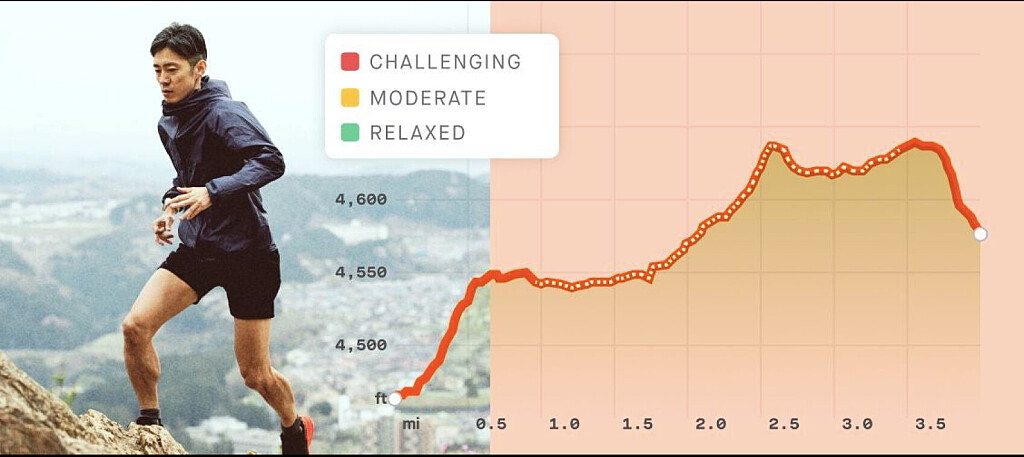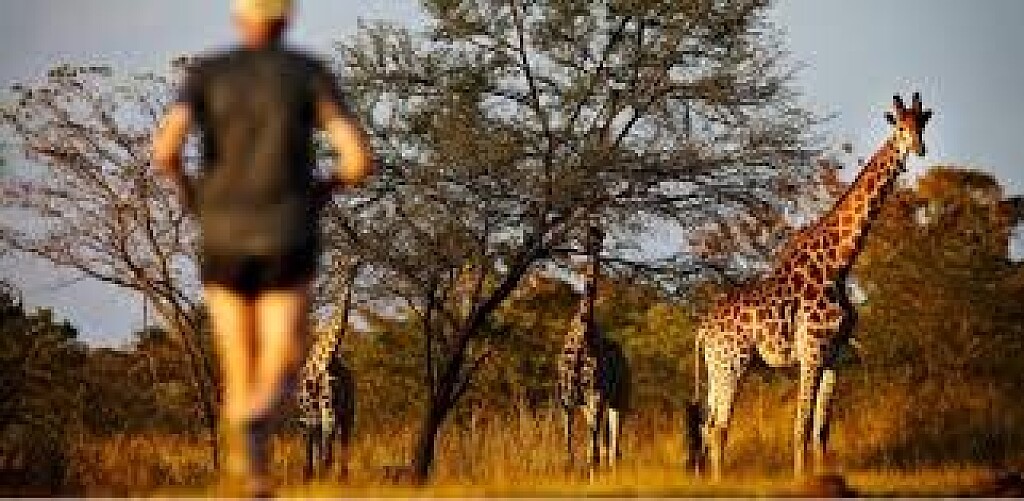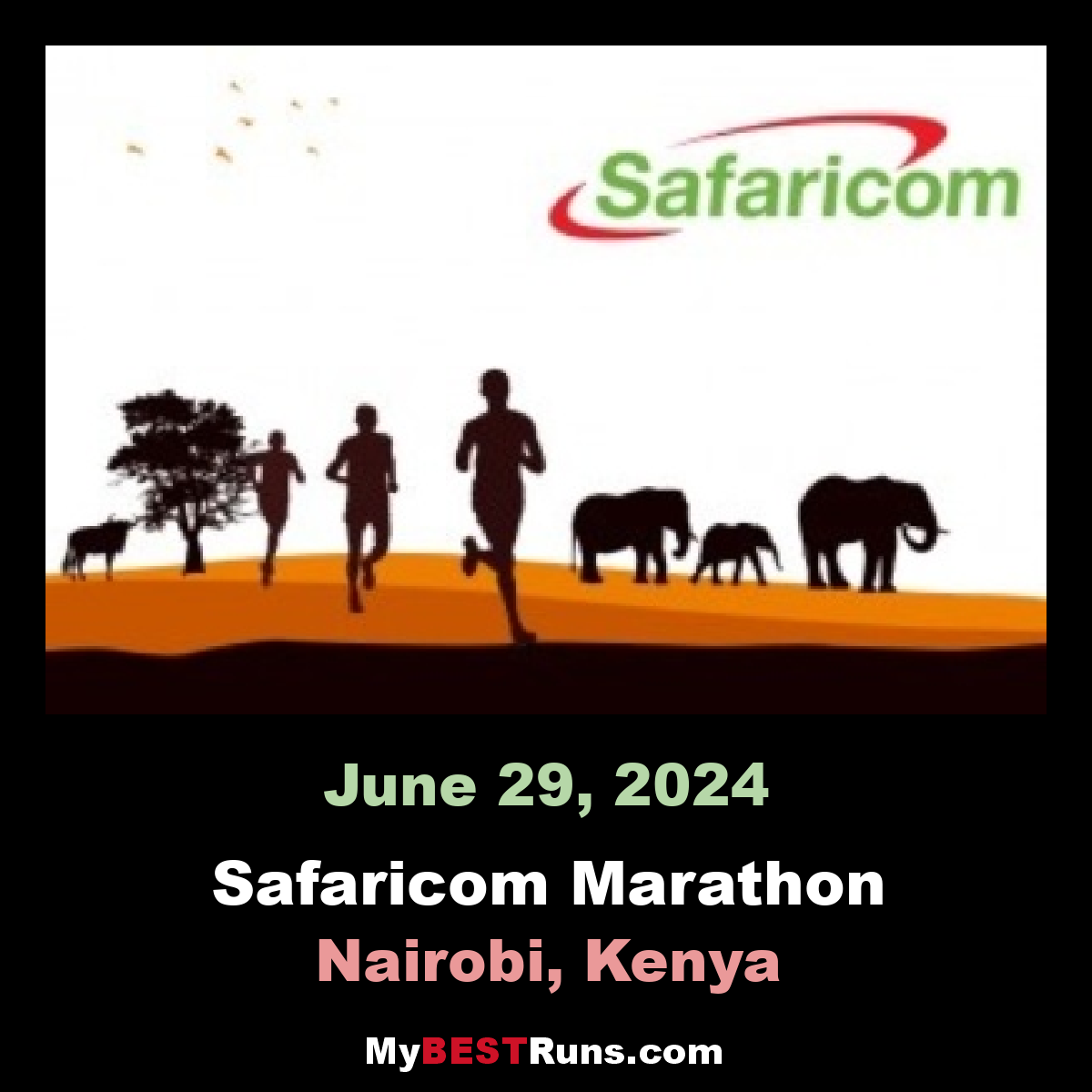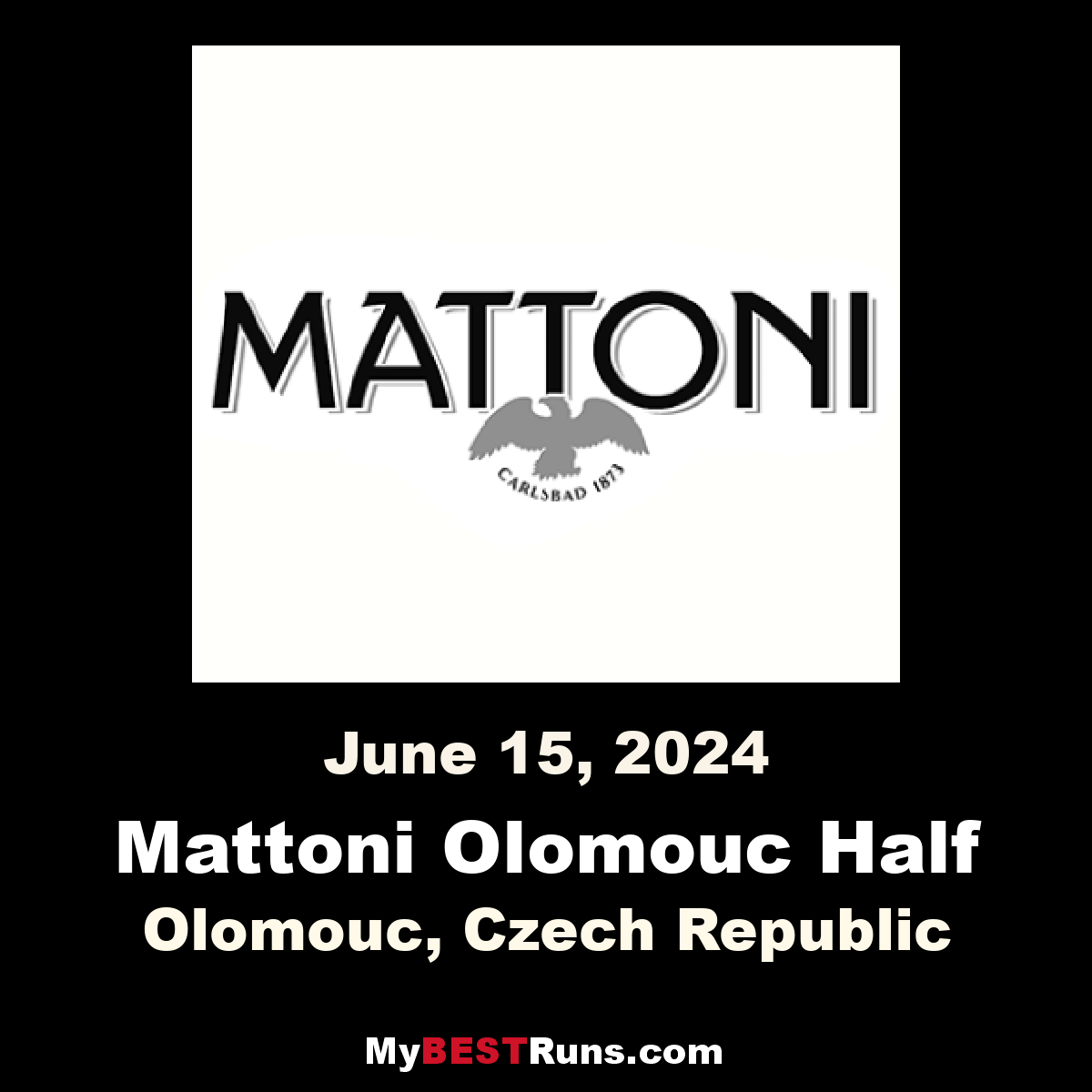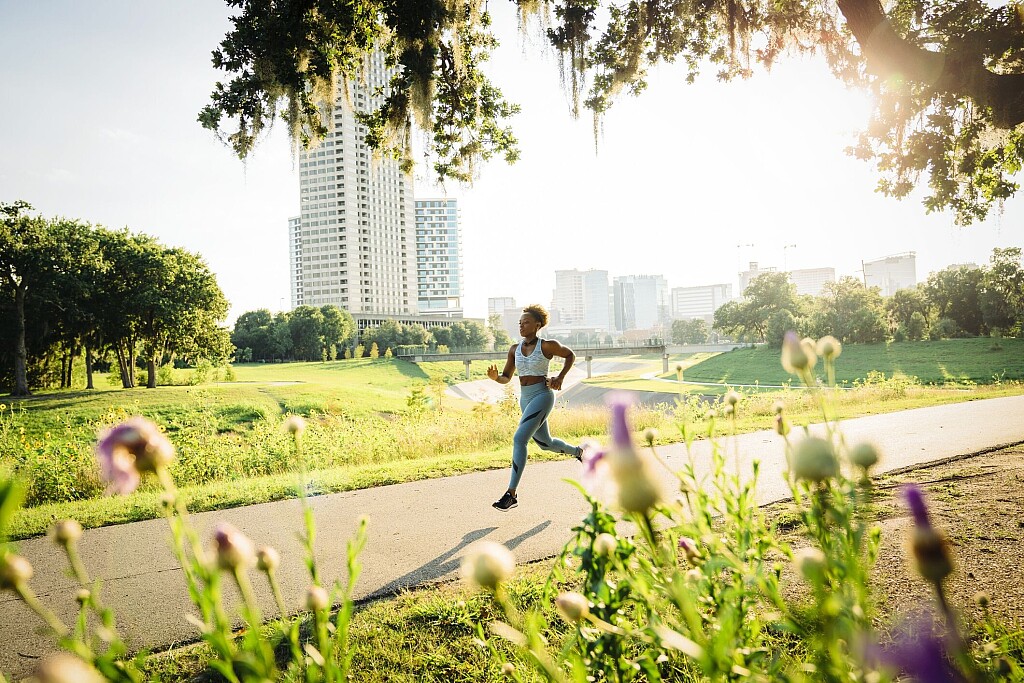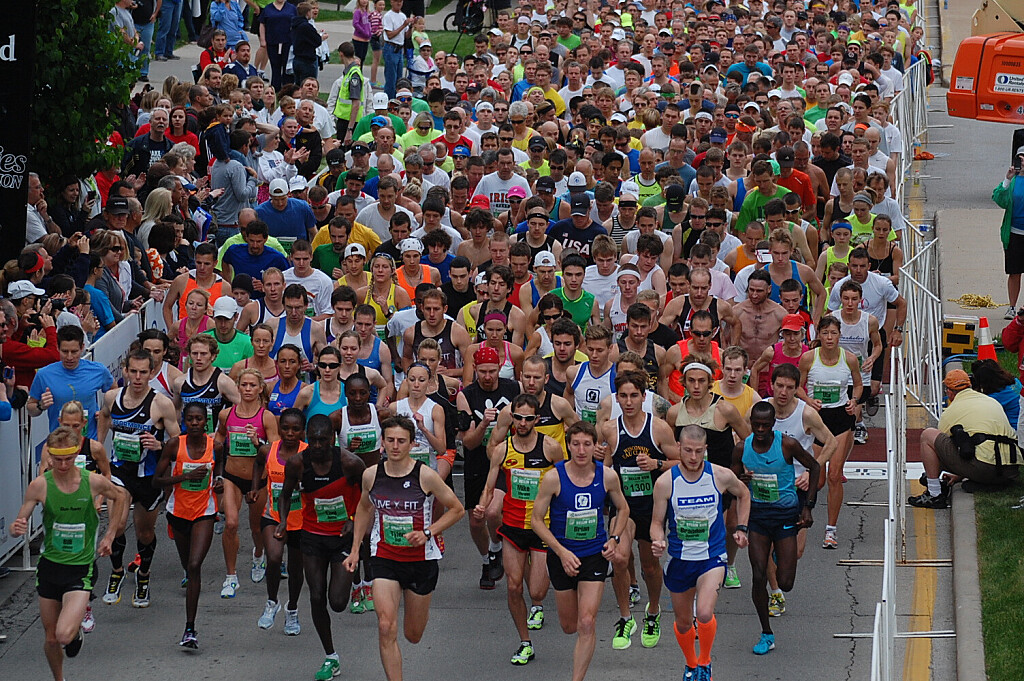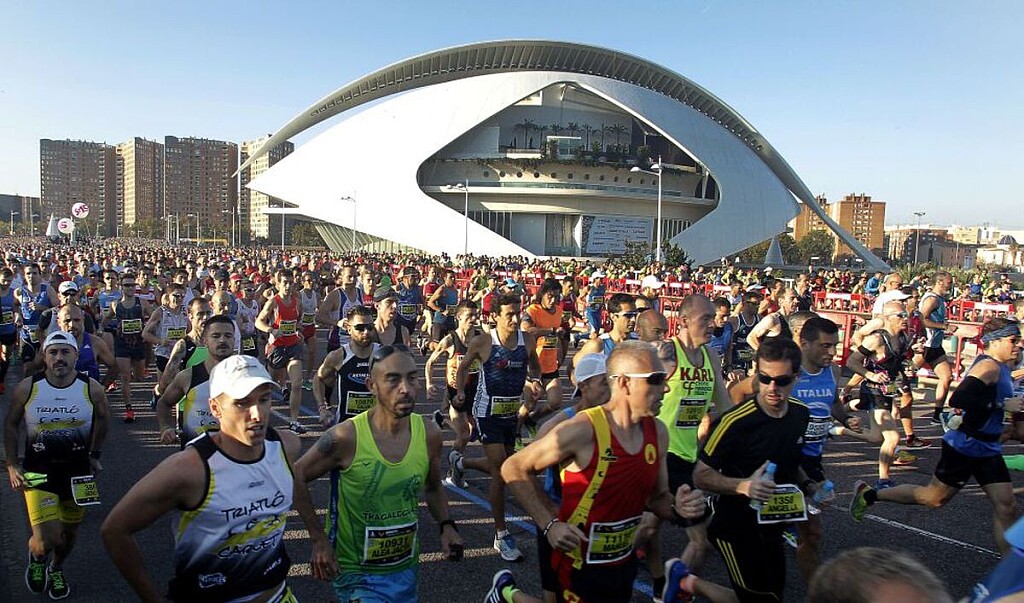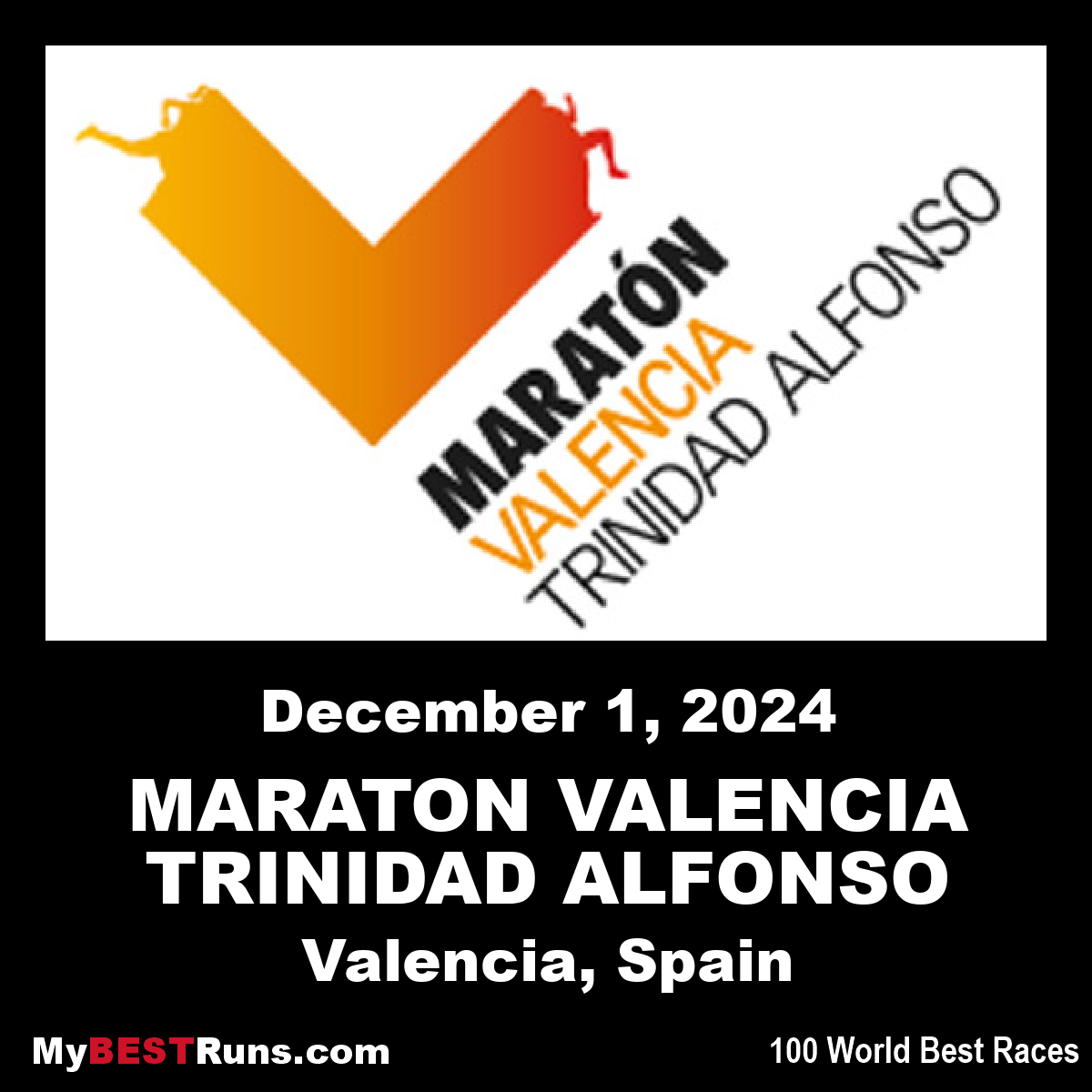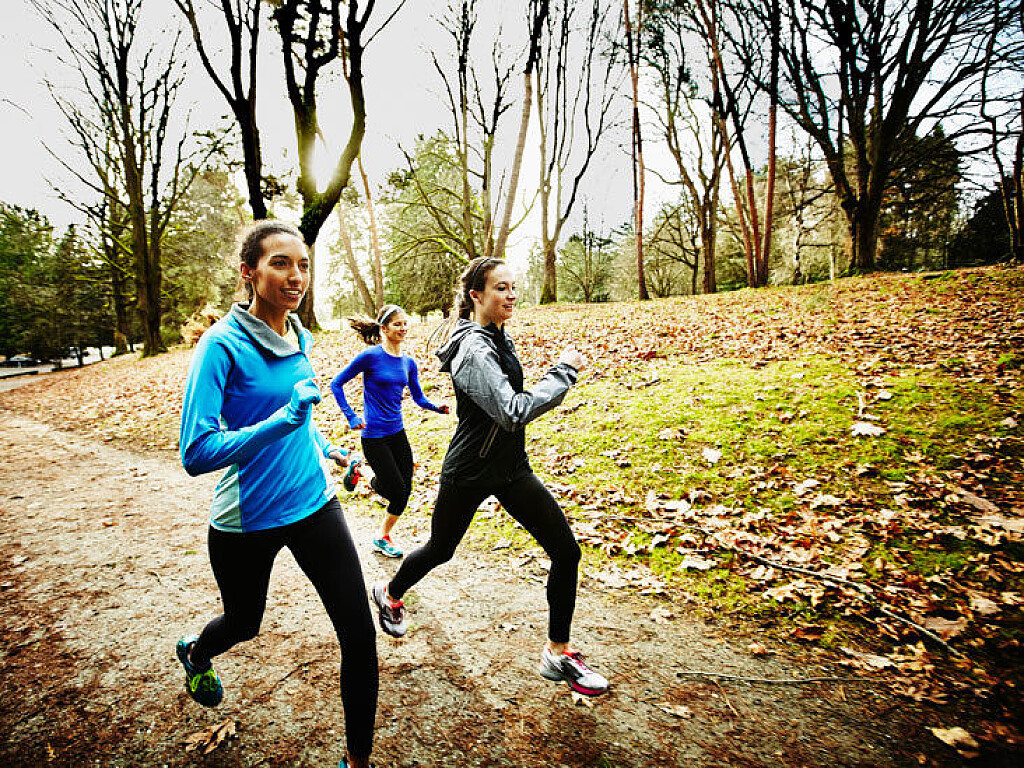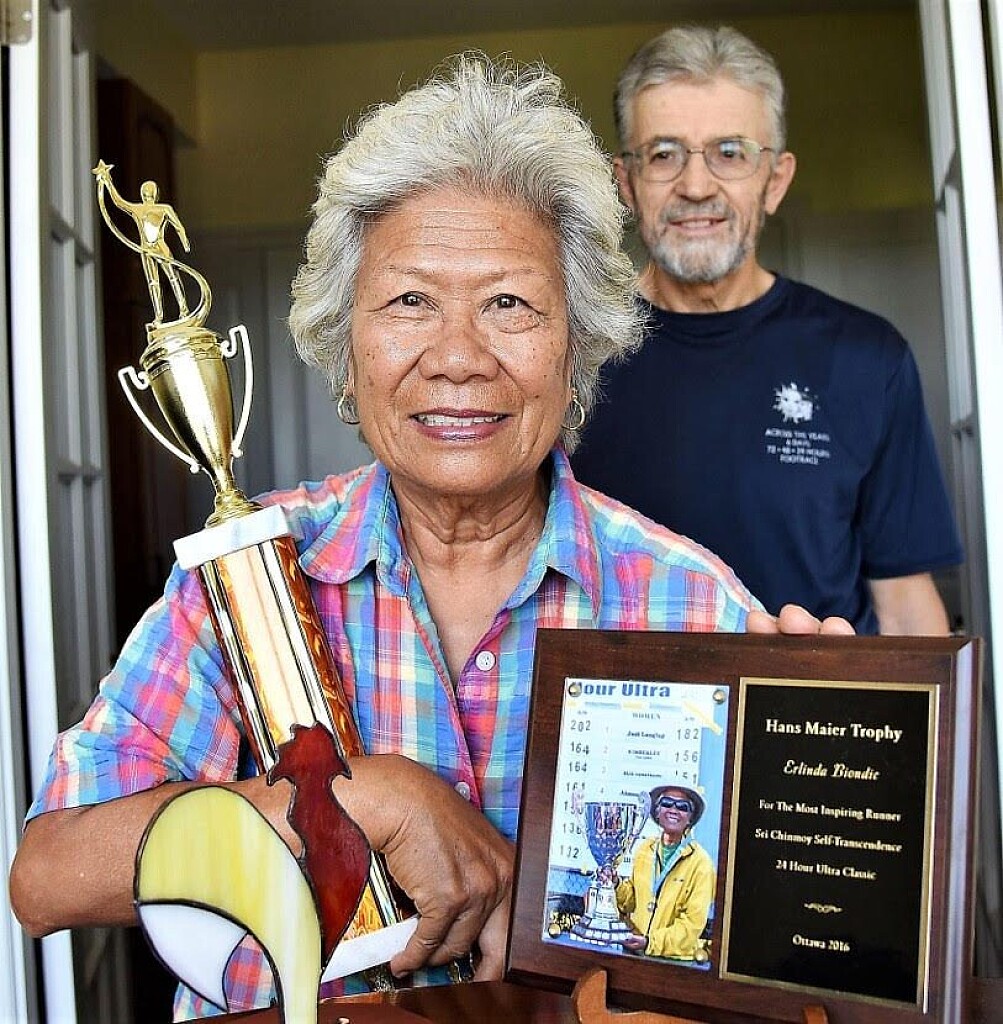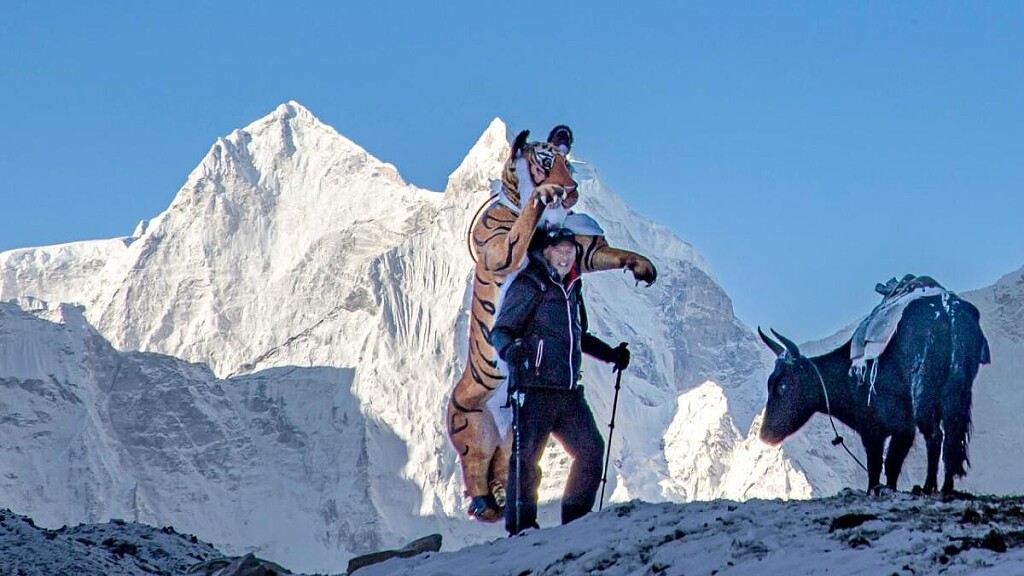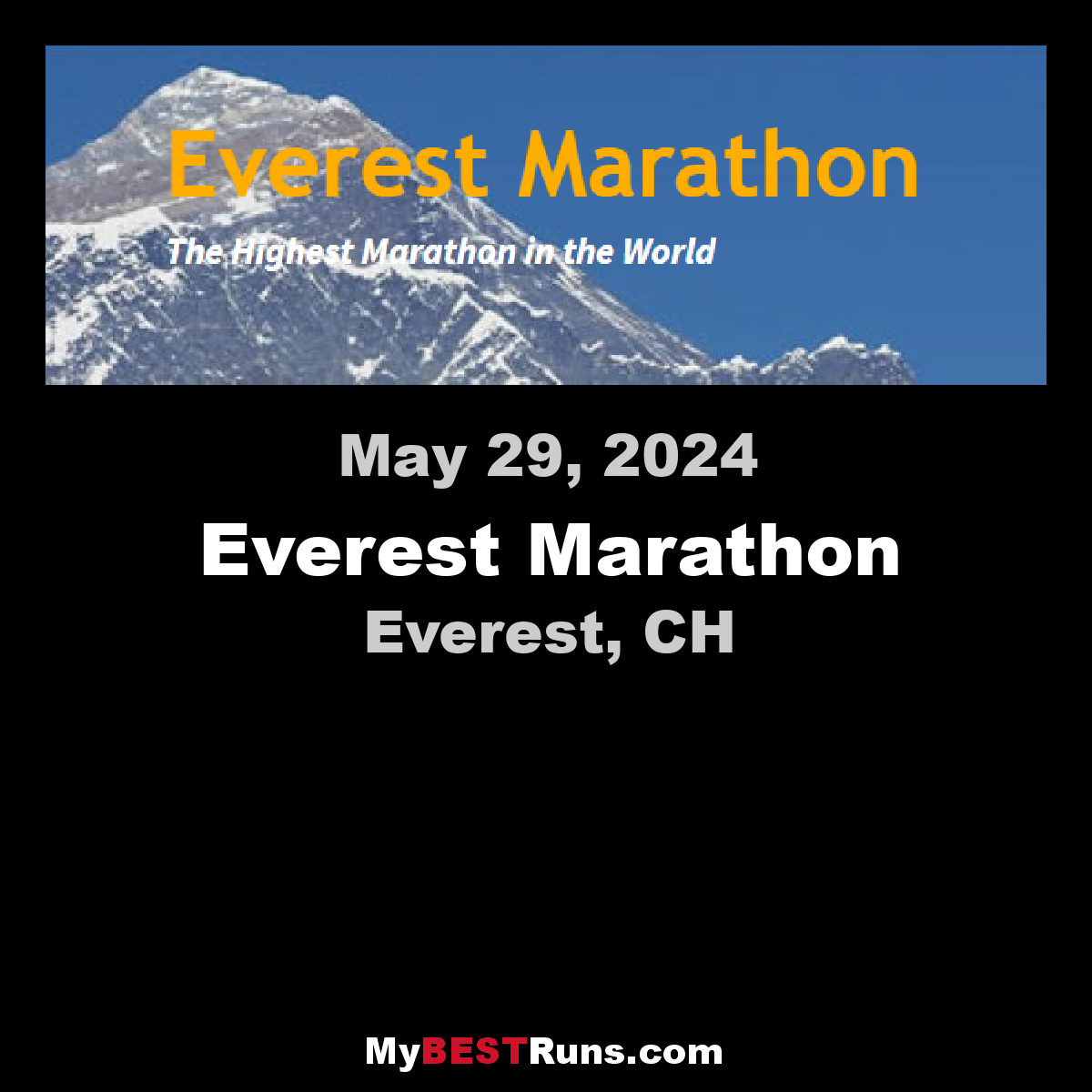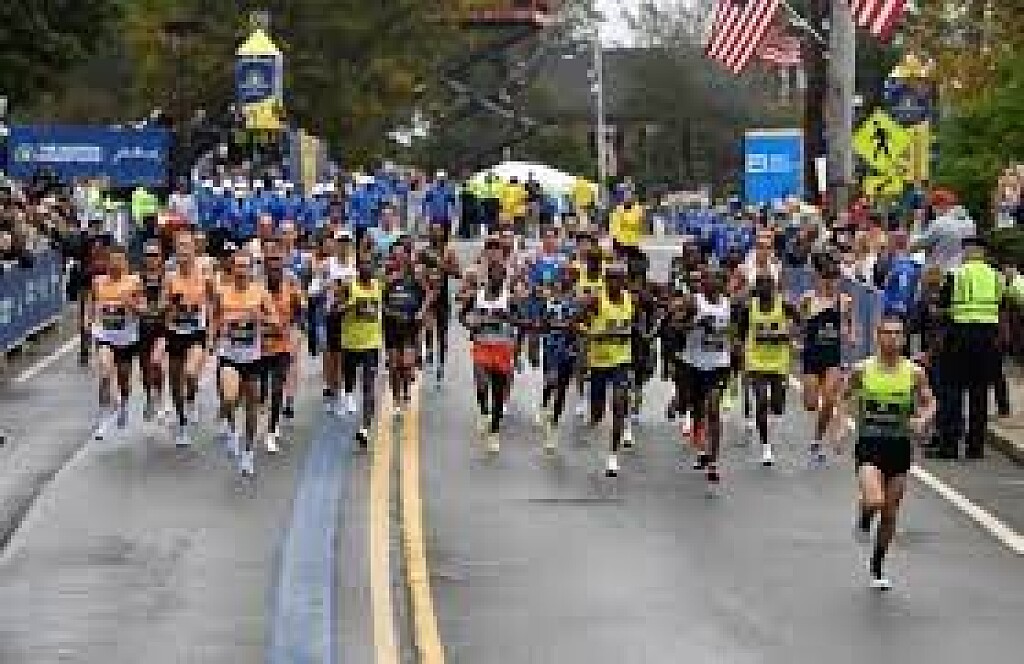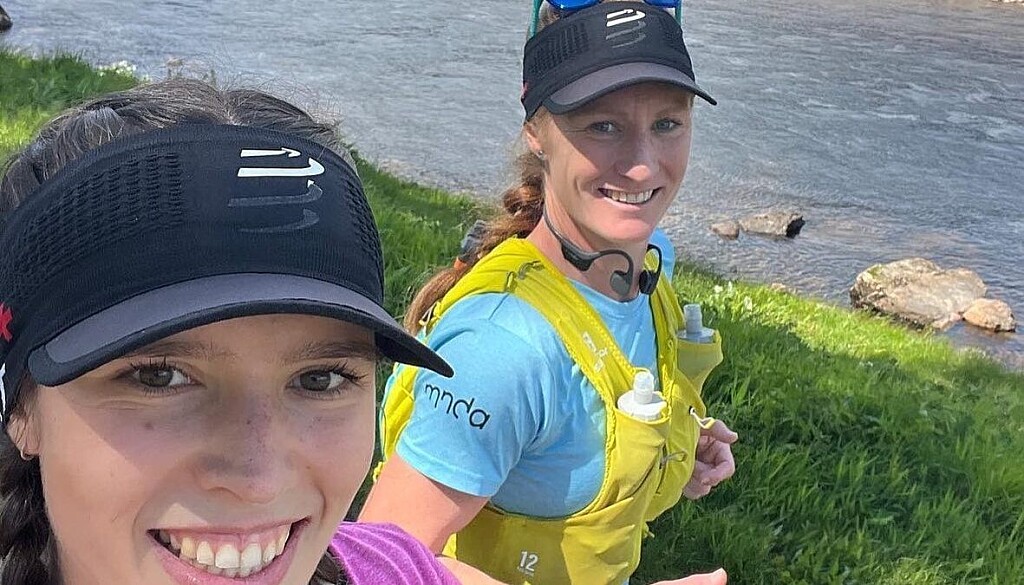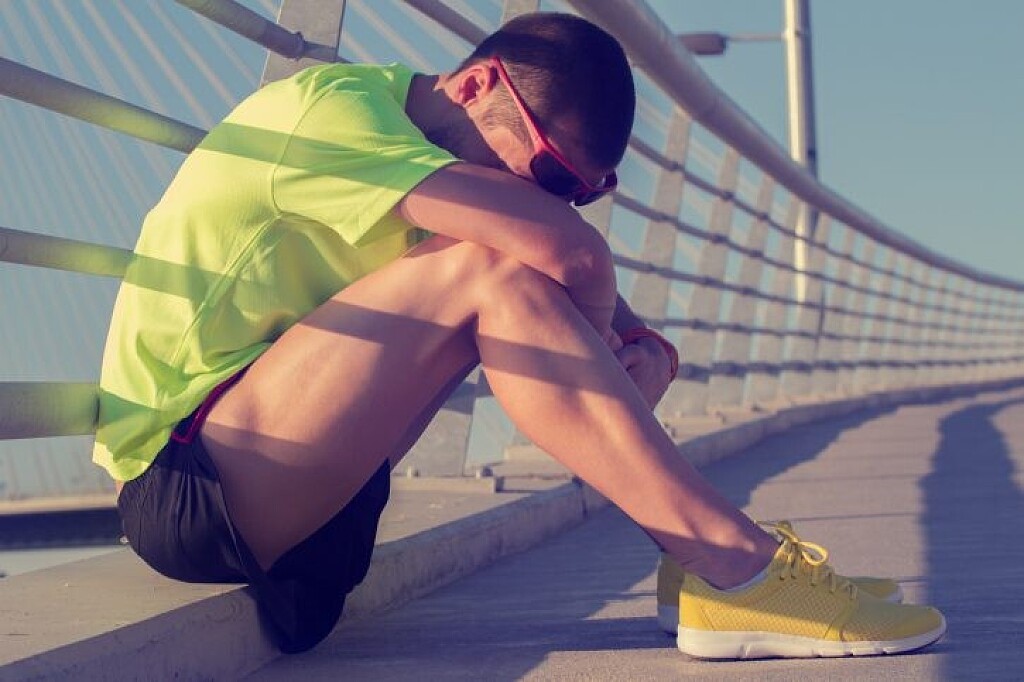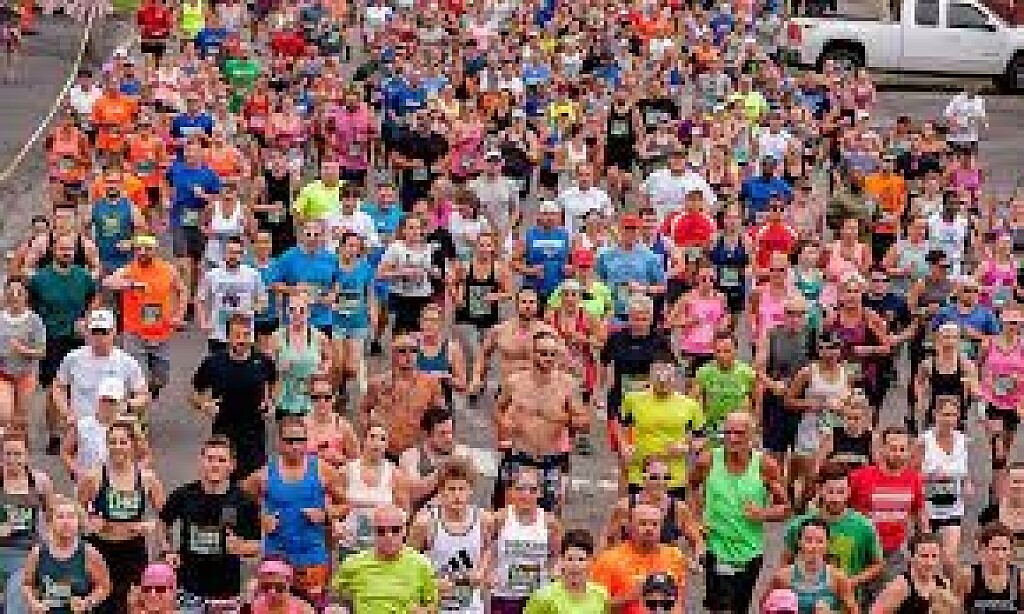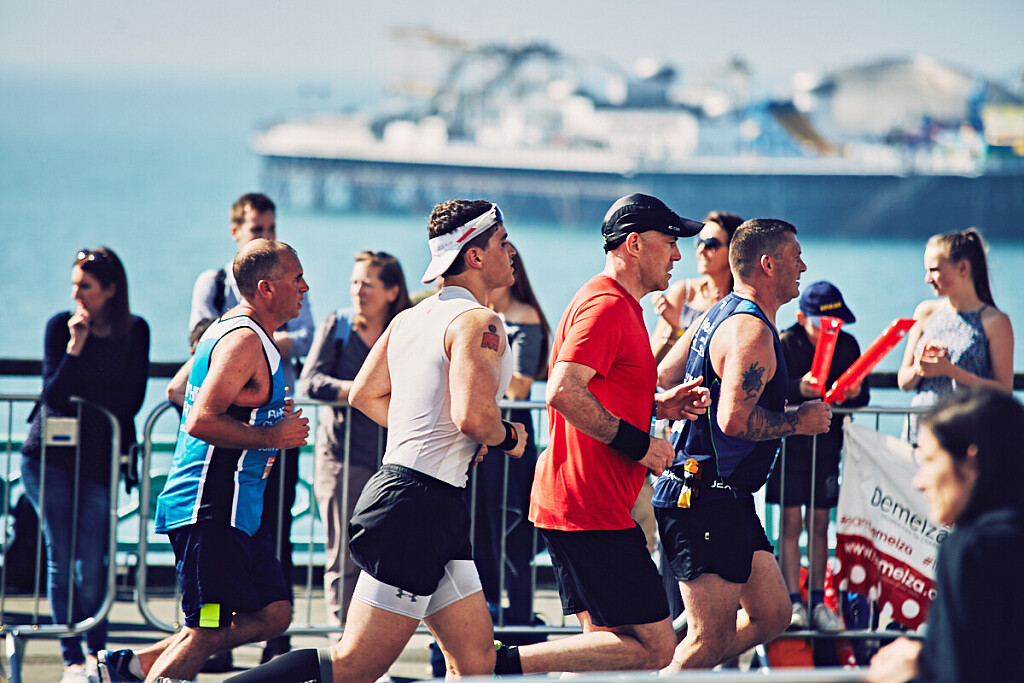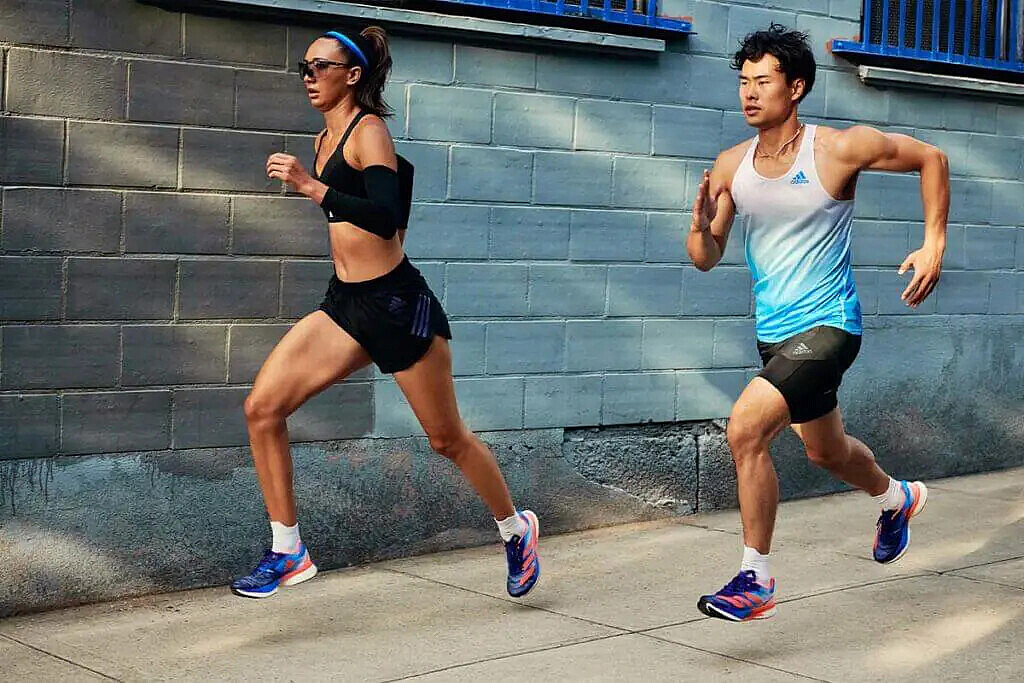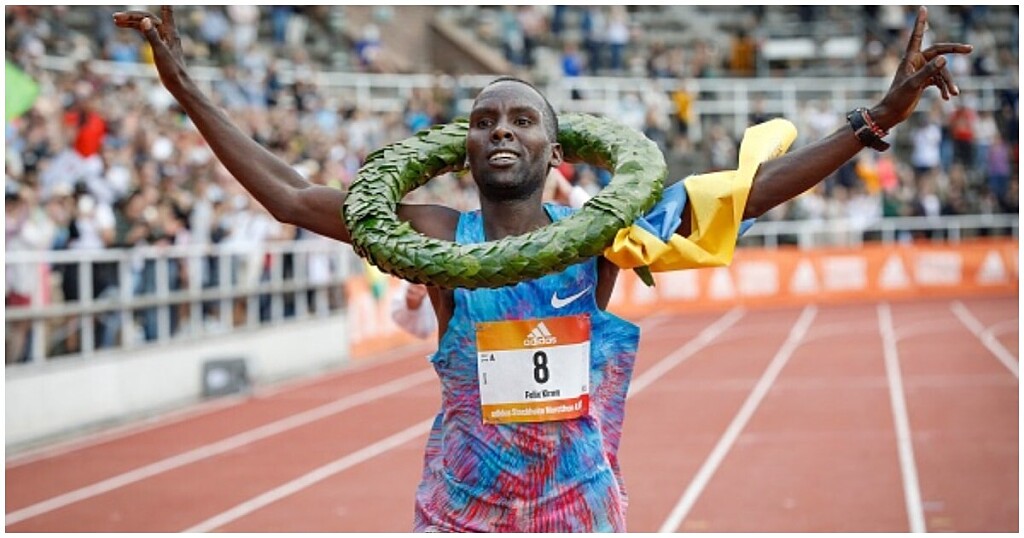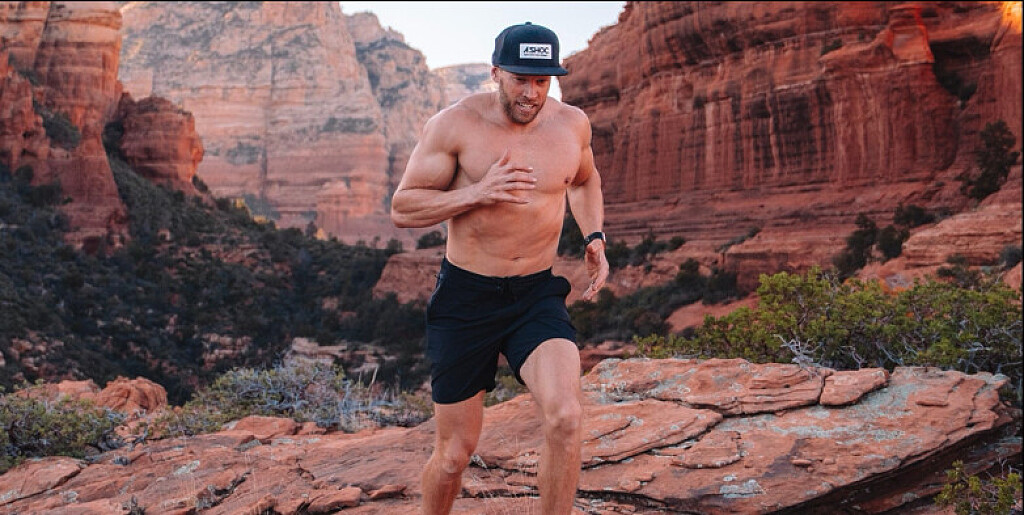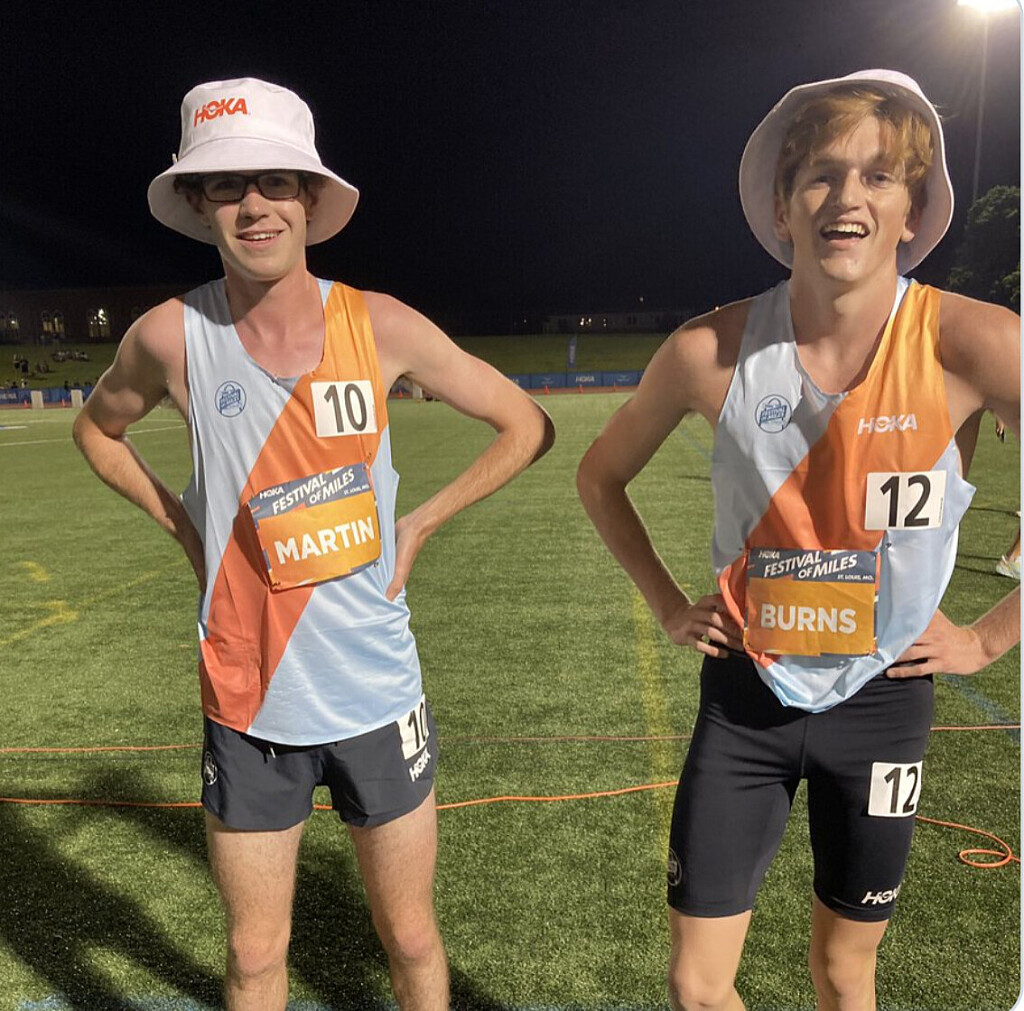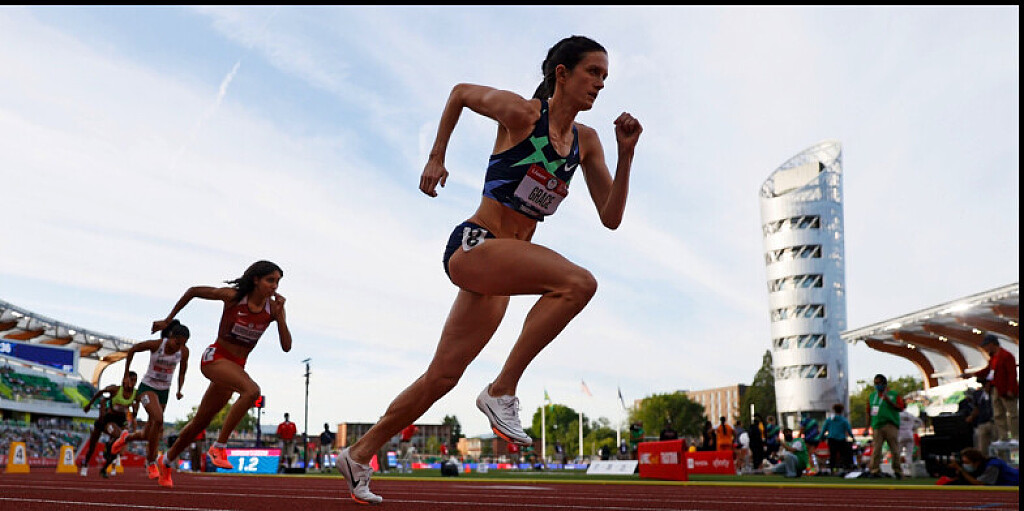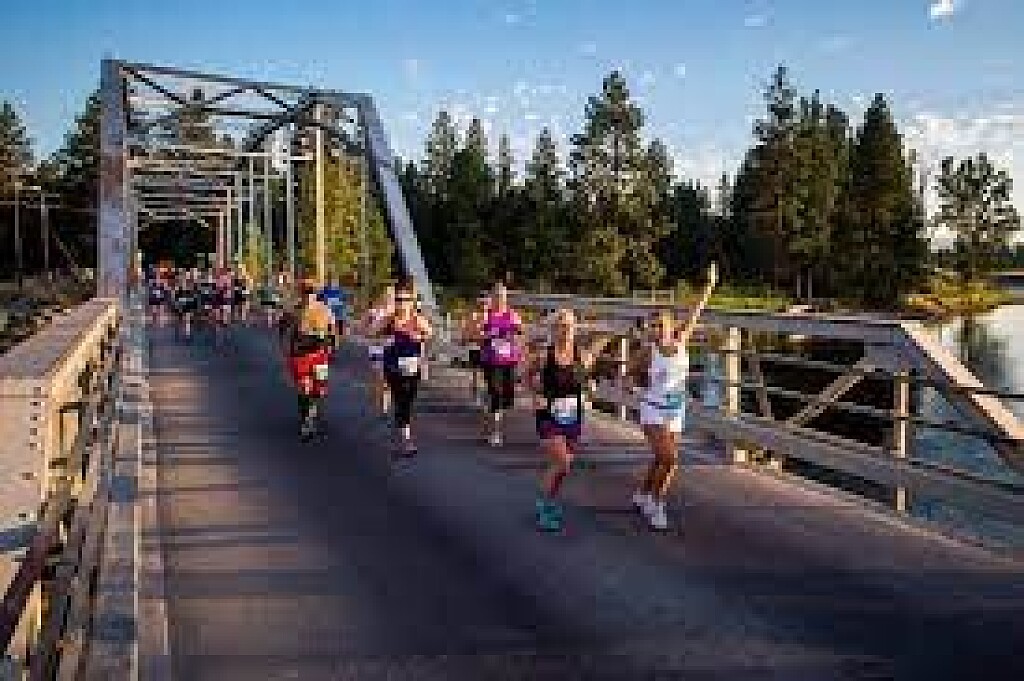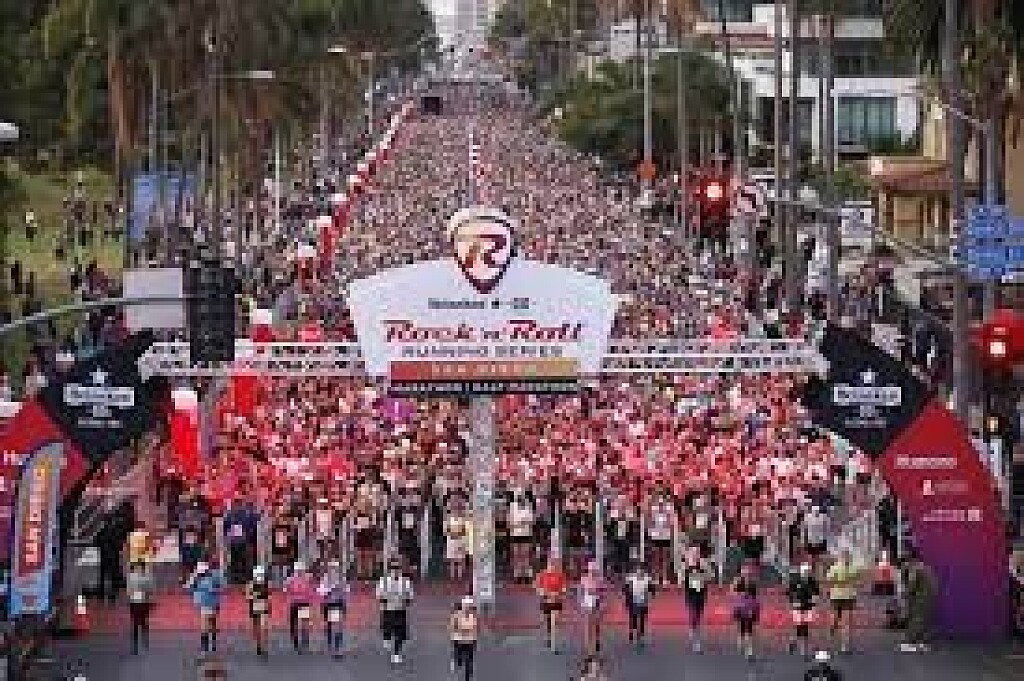Running News Daily
Running News Daily is edited by Bob Anderson. Send your news items to bob@mybestruns.com Advertising opportunities available. Train the Kenyan Way at KATA Kenya and Portugal owned and operated by Bob Anderson. Be sure to catch our movie A Long Run the movie KATA Running Camps and KATA Potato Farms - 31 now open in Kenya! https://kata.ke/
Index to Daily Posts · Sign Up For Updates · Run The World Feed
Ingebrigtsen and others in record breaking form in Oslo despite the rain
A Wanda Diamond League record from Jakob Ingebrigtsen (first photo) in the mile, along with meeting records from Mondo Duplantis in the pole vault and Femke Bol in the 400m hurdles brightened a rainy evening at the Bislett Games in Oslo on Thursday (16).
Ingebrigtsen has won almost all there is to win in middle-distance events, but a senior Dream Mile victory in Oslo was one thing missing from the 21-year-old’s resume. In fact, before today no Norwegian man had ever won the prestigious discipline at the Bislett Games.
But, racing in the final individual track event of the night, Ingebrigtsen ensured the 15,000 fans at the Bislett Stadion went home happy as he won the mile in a Norwegian record of 3:46.46, breaking the Wanda Diamond League record in the process.
Paced through the first two laps in 56.01 and 1:53.30, Ingebrigtsen was tracked closely by Australia’s Oliver Hoare and Britain’s Jake Wightman for most of the race. The Olympic 1500m champion never appeared to be under too much strain, though – even when Hoare was attempting to close in on the leader with half a lap left.
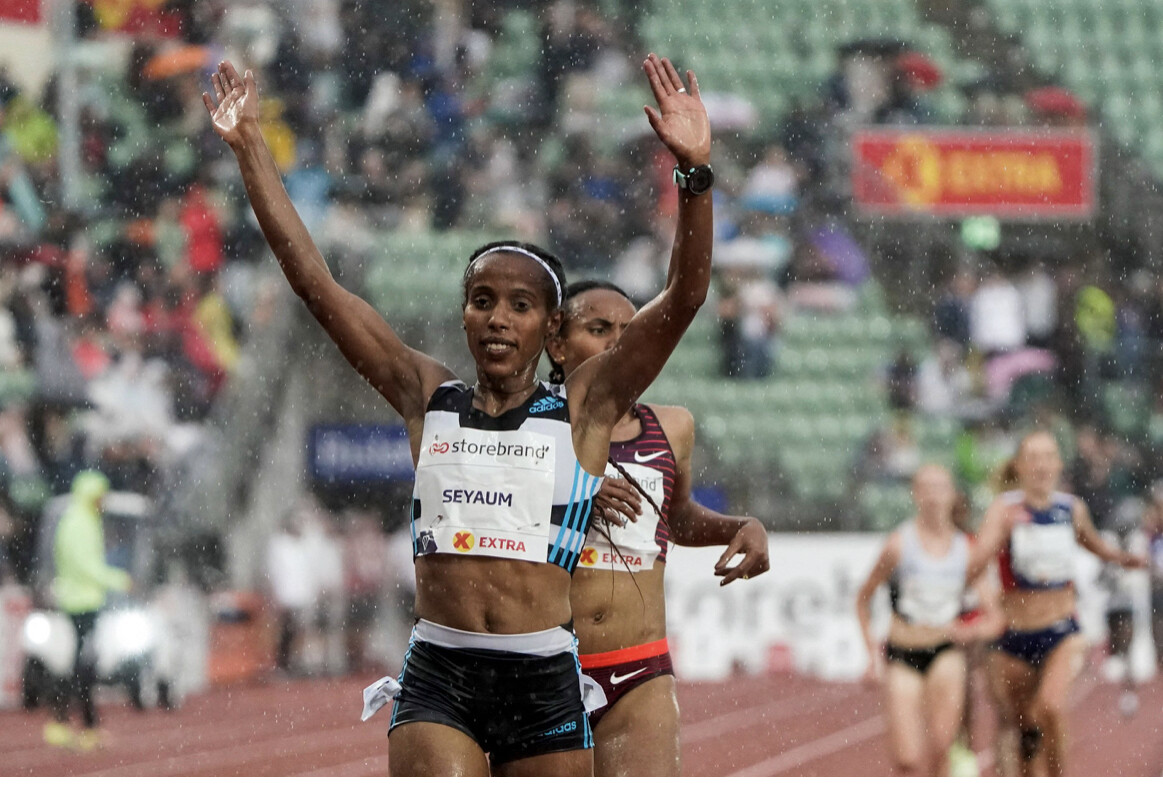
Ingebrigtsen – roared on by the home crowd, many of whom were on their feet – kicked down the home straight and crossed the line in 3:46.46, taking almost a second off his own Norwegian record and moving up to sixth on the world all-time list, just 0.14 shy of Steve Cram’s European record.
Hoare finished second in 3:47.48 to break the Oceanian record and move to 13th on the world all-time list. Wightman was third in a PB of 3:50.30 from fellow Brit Neil Gourley (3:52.91). There was also a national record for Charles Grethen of Luxembourg in fifth (3:53.20).
“I was ready to run fast and was happy to do that and to win,” said the world indoor silver medallist. “Some work needs to be done before the World Championships, but I will work hard to be in better shape there.
“Last year I was sick and couldn't race here, so it was even more special here tonight, as being the first Norwegian to win the Dream Mile. Doing things nobody else has done before is really great.”
Seyaum and Bekele lead Ethiopian 5000m sweeps
Dawit Seyaum may be new to the 5000m, but the former 1500m specialist looked anything but inexperienced as she outkicked her fellow Ethiopians to win a high-quality race.
The opening pace was steady, the first 1000m covered in 2:53.83 and 2000m reached in 5:52.33. Versatile Norwegian runner Karoline Bjerkeli Grovdal then took up the pace in the second half and passed through 3000m in 8:48.65, leading a large lead pack. Grovdal held on to that lead for another 1500 metres, but then Seyaum and compatriots Letesenbet Gidey, Gudaf Tsegay and Almaz Ayana started battling for the lead with one lap to go.
Ayana’s challenge soon faded, leaving Seyaum, Tsegay and Gidey out in front. Seyaum’s kick down the home straight was enough to break free from Tsegay and she won in 14:25.84. Tsegay, the Olympic bronze medallist at this distance, was second in 14:26.69 while world record-holder Gidey was third in 14:26.92. Grovdal held on to fourth place in a Norwegian record of 14:31.07 and USA’s Alicia Monson was fifth in a big PB of 14:31.11.
(Second photo)Dawit Seyaum celebrates her 5000m win at the Wanda Diamond League in Oslo
For just the second time in history, seven women finished inside 14:35 and eight women finished inside 14:40.
There was another Ethiopian 1-2-3 in the men’s 5000m, though this time the 1500m standout was beaten by the 5000m specialist.
The pace was steady though never blazing quick, meaning most of the field was still in contention at the business end of the race. Two-time world indoor champion Samuel Tefera led at 3000m, passing in 7:54.39, but then sat back in the pack to save his legs for a potential fast finish.
He made his way back to the front of the pack in the closing stages, but could not get on level terms with Bekele, who kicked ahead and won in 13:03.51. Tefera held on for second in 13:04.35, just ahead of compatriot Getnet Wale (13:04.48).
Keely Hodgkinson won the battle of the Brits over 800m, getting the better of fellow Olympic silver medallist Laura Muir.
The 20-year-old ran a controlled and assured race and kept her cool in the closing stages to win comfortably in 1:57.71. Muir was second in 1:58.09, ahead of France’s Renelle Lamote (1:58.50) and world champion Halimah Nakaayi of Uganda (1:58.68).
(06/17/2022) ⚡AMP
by World Athletics
How Many Days To Take Off After A Half Marathon
Running a half marathon can be very taxing. Recovering from running 13.1 miles takes time for your body to repair the damage, build back stronger, and prevent any running injuries. A lot of runners wonder how many days to take off after a half marathon. The answer depends on a lot of different factors.
Many runners make the mistake of jumping right back into training after running a half marathon. This is problematic because these runners overlook the many weeks of training it took to get to the start line and the microtears and stress on the musculoskeletal system done during the race.
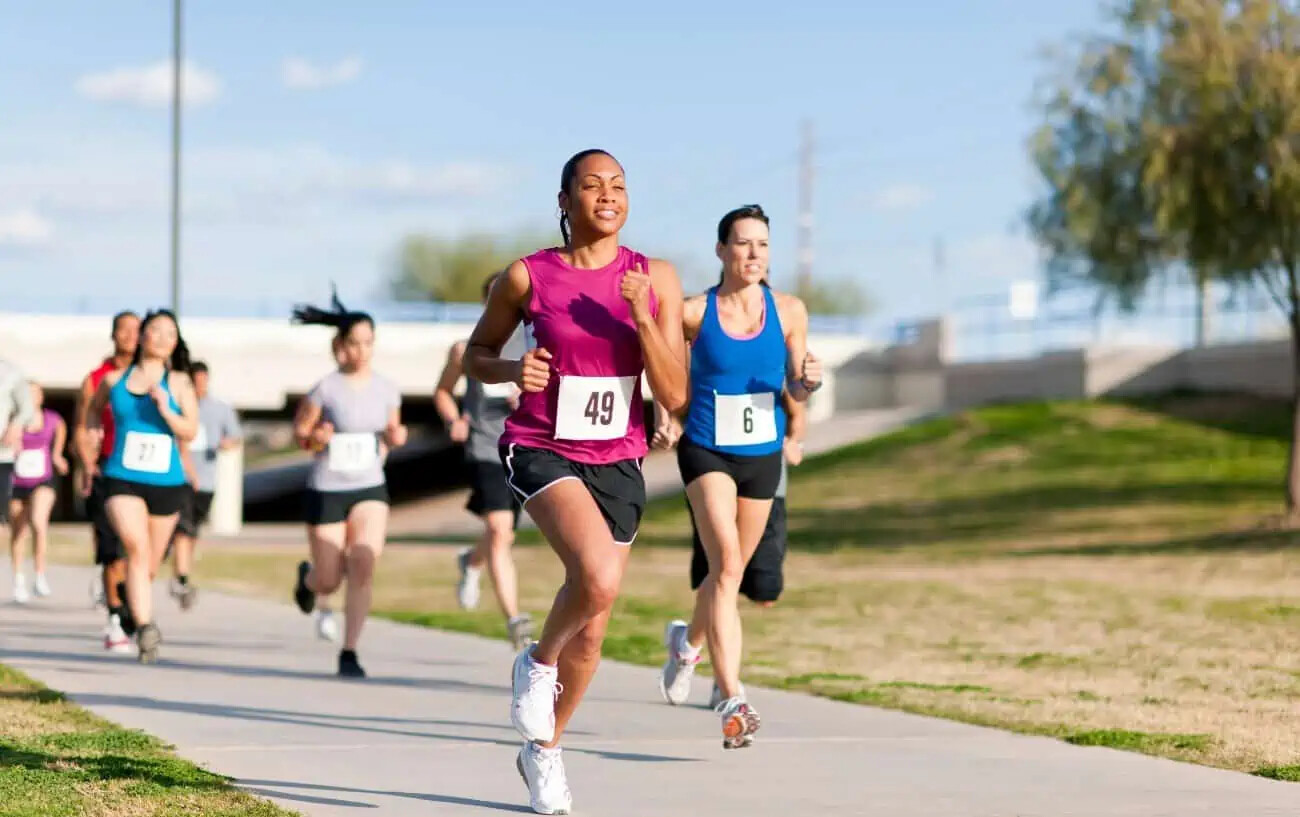
Healthy and smart runners prioritize and optimize recovery after a half-marathon, so they can build upon the fitness yielded from the training cycle and return to running faster.
In general, runners should take two to four days off running after racing a half-marathon. Note that I said racing—not running.
There is a big difference between running a half marathon at an easy pace versus running one at a hard effort.
If your half-marathon was your goal race, you should take at least two to four days of rest.
It’s possible to run two days after a half marathon if your half marathon was treated as a long training run done at a comfortable pace or your half marathon time was less than 90 minutes.
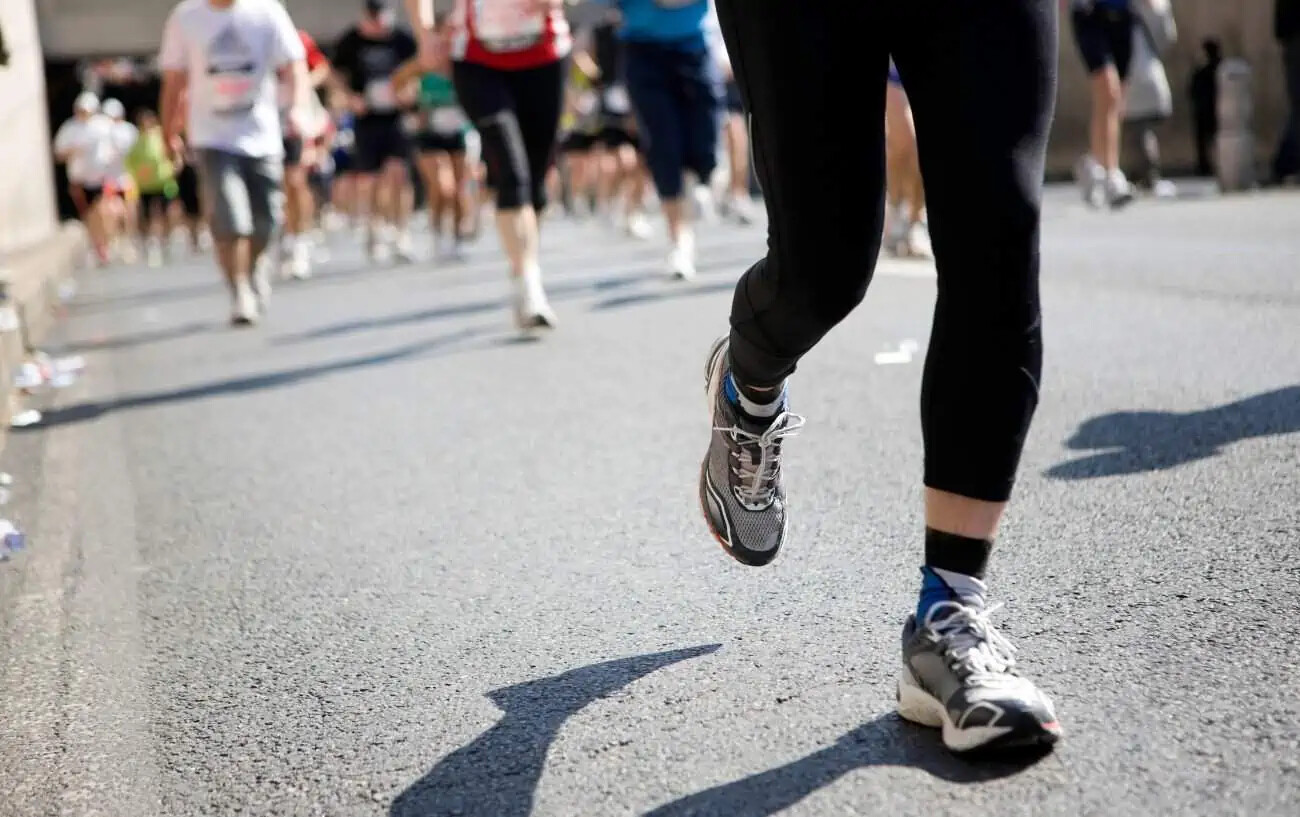
If your time was longer than 2 hours, it’s recommended to take up to a week off of running.
What Factors Determine How Many Days To Take Off After A Half Marathon?
There are many factors that determine how many days to take off after a half-marathon. The recovery time for your friend will likely not be the same as yours, so throw out comparisons and look hard at the following variables.
Six Factors That Determine Half Marathon Recovery Time
#1 - Race Effort
How hard you ran will determine how many days to take off after a half marathon.
If you ran your half marathon as a goal race or at a hard effort, you’ll need more time off from running (at least 2 to four days).
If you ran the race as a training run at an easy pace, you may not need to take any time off at all. It’s possible to do a light recovery jog the day after, keeping your heart rate low and distance short.
#2 - Race Result
How the race went will also determine how much time you may need to take off running after your half marathon.
If your race went poorly and you are feeling upset, it’s prudent to take several days to mentally recover and refocus.
If the race went poorly and, as a result, didn’t overly tax the body, you can resume running as long as you aren’t mentally shaken.
If the race went according to plan or better, resume training as normal after 1-4 days off.
If the race went well, but you are feeling fatigued, rest at least 2-4 days.
#3 - Race Experience
Whether running 13.1 miles is routine or a first for you determines how many days to take off after a half marathon. Many novice runners will not cover 13.1 miles until race day, while experienced runners will cover that distance at least one day per week.
If you haven’t covered the half marathon distance before race day, take 5-7 days rest, or more, as needed.
If you have covered the race length in training, resume easy running after 1-4 days of recovery if you are feeling up to it.
#4 - Race Time
The longer it takes you to complete 13.1 miles, the longer amount of recovery time you will need.
If it took you less than 90 minutes to run a half-marathon, you may need only 2-4 days of rest.
If it took you longer than 2 hours to run a half marathon, your body may need up to a week off of running.
#5 - Injury History
If you were recovering from an injury or staving one off during your half marathon training cycle, it’s smart to take more time off running. A week off running may help your body repair damaged tissue.
#6 - How You Feel
All these tips are guidelines and should not overrule how you feel. If you ran a half marathon in 90 minutes, it went great, but if you still feel drained after four days off running—then take more time to recover.
Nothing should override how you feel. And only YOU know how you feel. So, listen to your body over advice from your coach, your friends, or even this article. In general, all runners benefit from taking at least 1-2 days completely off during half marathon recovery. However, be sure to get in some walking during this time. Get plenty of sleep and drink plenty of water.
(06/17/2022) ⚡AMPby Whitney Heins
What Are therapeutic use exemptions and Why Are They Controversial?
Athletes such as Molly Seidel, who was recently diagnosed with ADHD and prescribed Adderall, must receive exemptions from doping agencies in order to use medications that are banned.
Olympic bronze medalist Molly Seidel announced on Instagram on June 8 that she’d be missing the New York Mini 10K last weekend. The reason? She’d been diagnosed with ADHD early in 2022, and after the Boston Marathon, she started taking the prescription drug Adderall.
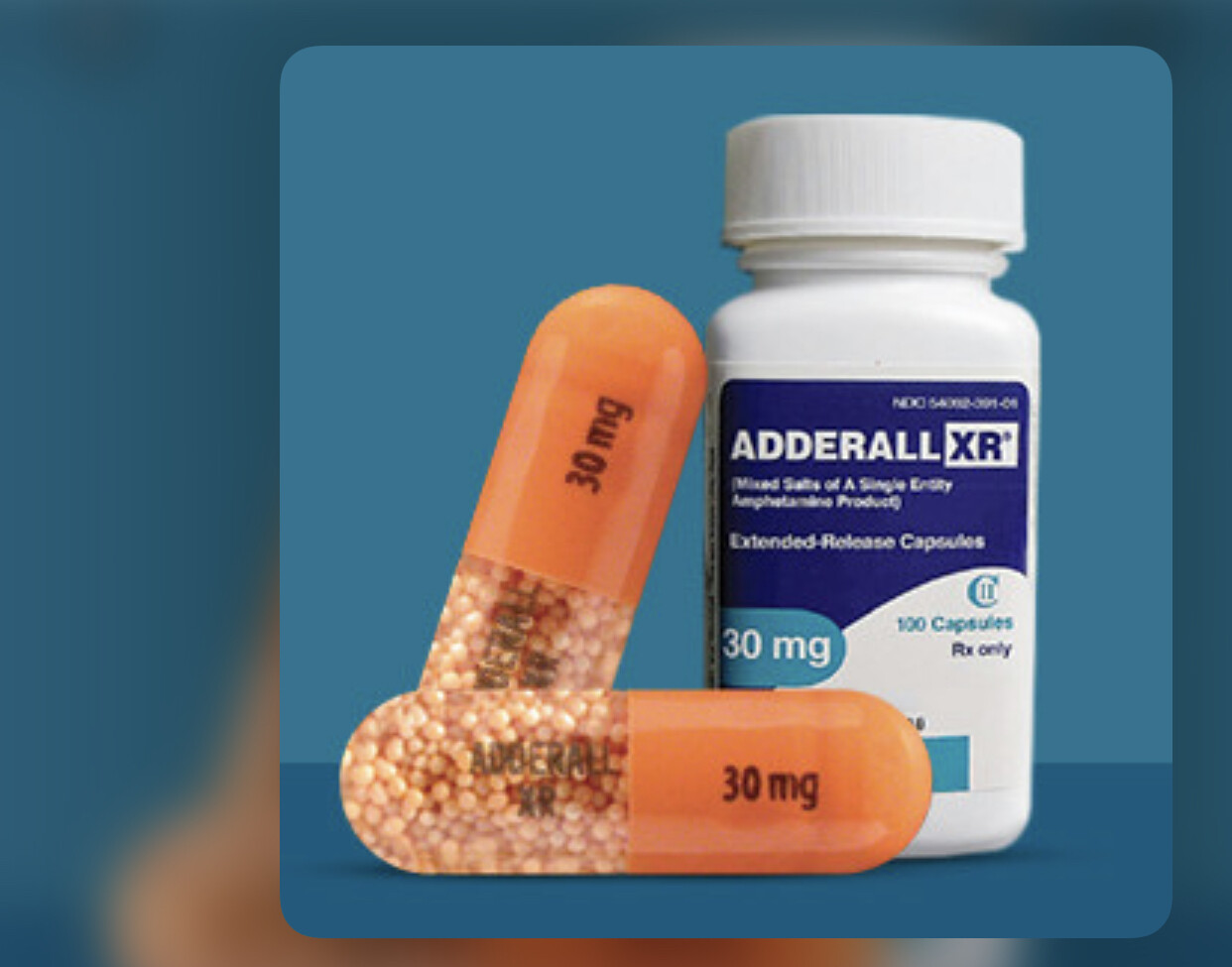
Adderall is banned by the World Anti-Doping Agency (WADA) for use in competition, because it can be used as a performance enhancer. But Seidel has a legitimate medical need for the drug, so she can apply for a therapeutic use exemption, commonly known as a TUE.
Seidel wrote on Instagram that she applied for a TUE about six weeks ago, and she won’t have an answer on her application until the end of June at the earliest.
Since she started taking Adderall, she had been feeling much better. “I felt like I was able to get the quiet, functioning brain in my day-to-day life that I could previously only achieve with intense physical activity,” she wrote. “It also gave me remission of many eating disorders behaviors that I’ve dealt with consistently since my teens.”
She was disappointed to pull out of the New York Mini 10K. Seidel wrote, especially after she has had a tough few months. (She dropped out of the Boston Marathon in April with a hip impingement at about the 16-mile mark.)
“However, I’m committed to a clean sport and respecting my own mental health needs, so that means following the appropriate procedures of this TUE process,” she wrote. “Mental health takes work, and I want to be transparent about the fact that medication is sometimes a very necessary part of that work.”
Seidel is due to run the World Championships marathon in Eugene on July 18.
Her case illustrates a years-long debate among athletes, coaches, and officials about TUEs. At issue: How can the sport allow its athletes to legally obtain treatment for diagnosed medical conditions while preventing others from abusing the system?
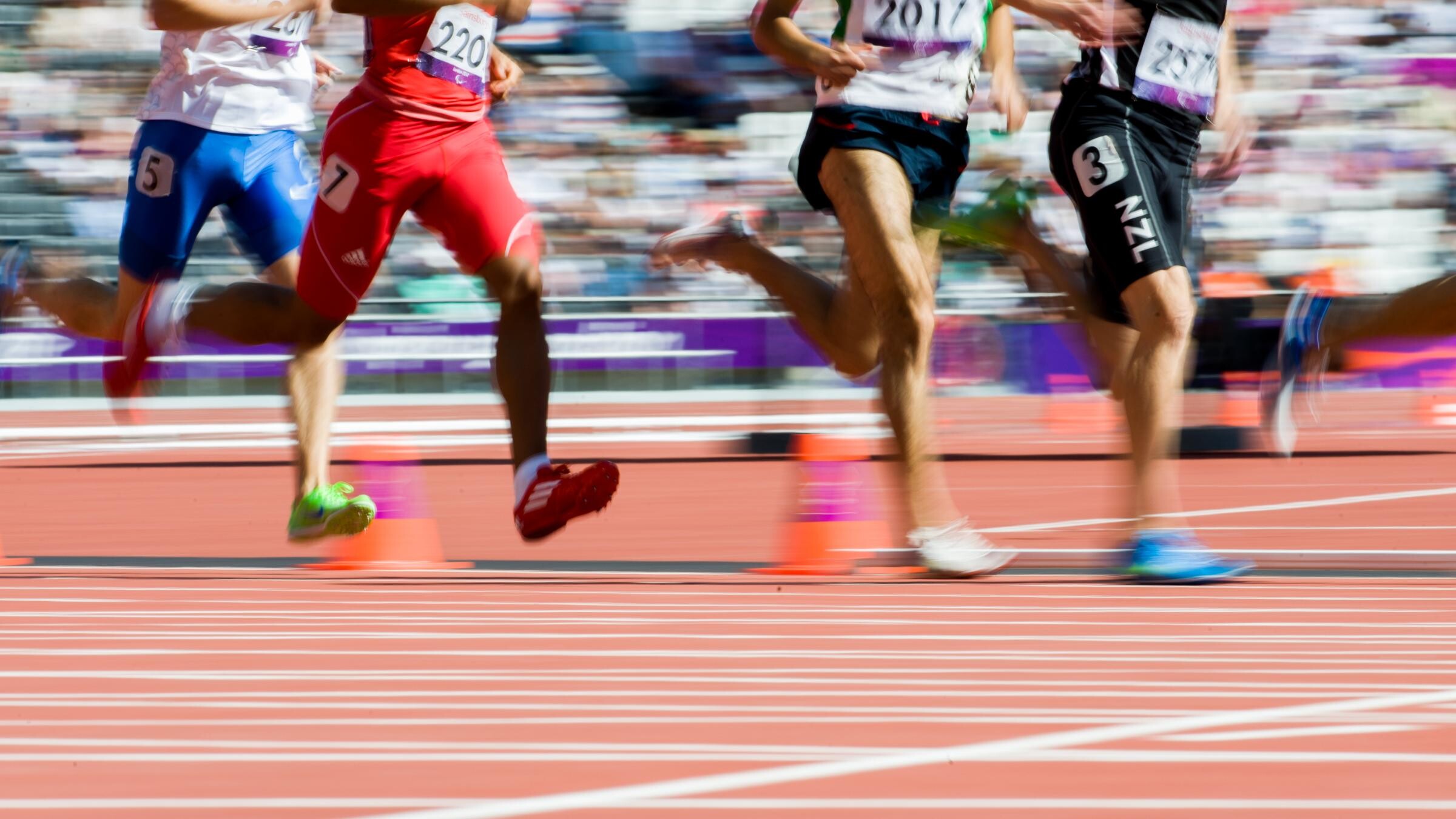
Below, we answer a few common questions about TUEs.
What is a therapeutic use exemption (TUE)?
When an athlete is sick or has a condition that requires treatment with medicine that is listed on WADA’s prohibited substance list, he or she can be granted a TUE to take the drug, according to the U.S. Anti-Doping Agency (USADA).
Some drugs are prohibited when an athlete is competing. Other drugs are also banned for out-of-competition use. If a TUE is approved, it usually has a starting and ending date during which the athlete may take the medication. If the athlete is drug tested during that period and tests positive for an illegal substance for which they are granted an exemption, he or she will not face disciplinary measures.
In an emergency situation, if somebody is treated with a prohibited substance, he or she is allowed to file an emergency TUE afterward, as soon as possible. For example, when Shalane Flanagan received an IV for severe dehydration in February after the 2016 Olympic Marathon Trials, which is otherwise a banned practice, she was granted an exemption because she was in medical need.
“I resisted getting an IV but a lot of the doctors there were insisting that I needed it,” Flanagan said, weeks after the race. “It would have taken a really long time to get those fluids in orally. So the IV really speeded up my recovery. It actually made me realize probably why they are illegal [in competition] under most circumstances—my core temperature immediately went down. If I hadn’t had that, I would have had a much longer process.”
How does an athlete get a TUE?
U.S. athletes apply for a TUE through USADA, though if somebody is also competing at an international event, it may require that person to obtain another exemption through World Athletics, the governing body for track and field.
“The TUE application process is thorough and designed to balance the need to provide athletes access to critical medication while protecting the rights of clean athletes to compete on a level playing field,” according to USADA.
If a pro runner is in need of a TUE, he or she downloads the application and completes it with a doctor. A medical file must accompany the application.
Who decides if the athlete gets a TUE?
The Therapeutic Use Exemption Committee reviews the application, the medical details, the patient history, test results, how the condition has been managed over time, and attempts to treat it with non-prohibited medications and methods. Galen Rupp, for example, has been granted exemptions to take prednisone to treat asthma.
The committee includes doctors and medical experts, according to USADA. They review and either approve or deny the application without knowing the athlete’s name by following WADA’s standards, outlined in an annual 30-page document.
WADA policy states that athlete must prove that the prohibited substance is needed to treat an acute or chronic medical condition, “such that the athlete would experience a significant impairment to health” if it is withheld; that the medication is highly unlikely to produce any enhancement of performance beyond what would be considered “anticipated” by a return to the individual’s normal health; and that there is no reasonable alternative to treat the condition.
What is on the WADA prohibited substance list?
The prohibited list includes more than 300 substances and methods of taking substances (for example, orally, by injection, intravenously). It also includes those that are always prohibited and those that are only prohibited during a competition. The lists are updated by WADA each year, and it’s up to the athletes to be aware of changes of the rules.
Some examples of prohibited substances include steroids, human growth hormone, certain stimulants, diuretics, and masking agents that can interfere with drug tests.
How could an athlete use TUE system or prescription drugs to cheat?
Athletes at the highest level are constantly searching for fractions of percentages in performance gain. Some, of course, seek such gains illegally. Should that athlete have a support team of coaches and doctors who also engage in unethical practices, they can collectively seek exemptions for medications that are not medically needed but could produce a competitive advantage.
In July 2015, Rupp and his coach Alberto Salazar were accused by former members of the Oregon Project of manipulating the TUE system for performance gain and faking symptoms in an effort to be prescribed legal thyroid medications. Those medications could help with a runner’s energy levels, allowing an athlete to train with more intensity and volume. Rupp and Salazar have strongly denied those accusations. Salazar has since received a four-year ban for trafficking performance-enhancing drugs to his athletes and in a separate matter, he has been banned permanently from track by SafeSport.
(06/17/2022) ⚡AMPby Runner’s World
Simeon Birnbaum becomes 17th high schooler ever to run sub 4-minute mile
Rapid City Stevens distance runner Simeon Birnbaum became just the 17th United States high-schooler ever to run a sub 4-minute mile.
While competing in the Brooks PR Invitational in Seattle on Wednesday, Birnbaum finished the mile race in 3:59.51, winning the event in a historic way.

Birnbaum, who set several records at the South Dakota state track and field meet in late May, told the Argus Leader in April he had his sights set on the feat for his senior season. By hitting the mark in the summer of his junior year, he is the third high-school junior to ever run a sub 4-minute mile. Southern Boone (Missouri) High School junior distance runner Connor Burns also broke sub 4-minutes this year.
Birnbaum had already set the South Dakota high school mile record at the Arcadia Invitational in California with a time of 4:07.88. Wednesday, he ran more than eight seconds faster.
"There's some really great youngsters out there, and I think they can come up and get these records now, so I'm really going to try to lower them for them," Birnbaum told the Argus Leader after setting the state meet record in the 800-meter run at the state track and field meet.
Birnbaum is one of five runners to break the milestone this year, along with Burns, Nease (Florida) High School runner Rheinhardt Harrison, Archbishop Wood (Pennsylvania) runner Gary Martin and Newbury Park (California) High School runner Colin Sahlman. Sahlman and Martin each have broken it twice this year.
(06/16/2022) ⚡AMPOne month to go - Road to Oregon22
One month from yesterday, the World Athletics Championships Oregon22 – the first to be held in the United States – will get under way at the all-new Hayward Field in Eugene.
One week from today, that same venue will stage the fearsome, first-three-home drama of the USATF Championships, where home athletes will seek to earn the right to return to the re-built arena once the global event starts on 15 July.
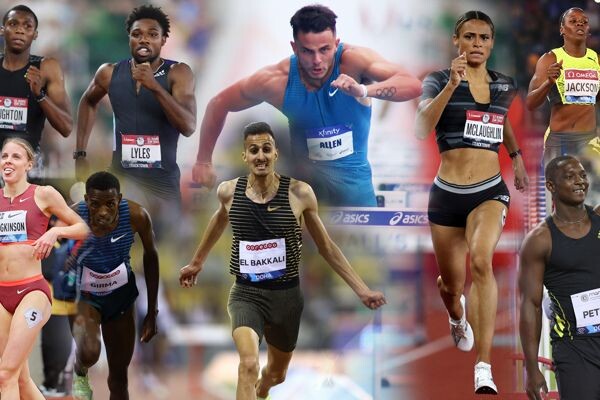
The perennial jeopardy of that event means that some of the most likely home medallists cannot yet be inked in for the World Championships. But wild card entries for defending champions mean that US athletes such as 200m gold medallist Noah Lyles, who has demonstrated convincing form in recent weeks and days, will count on toeing the line.
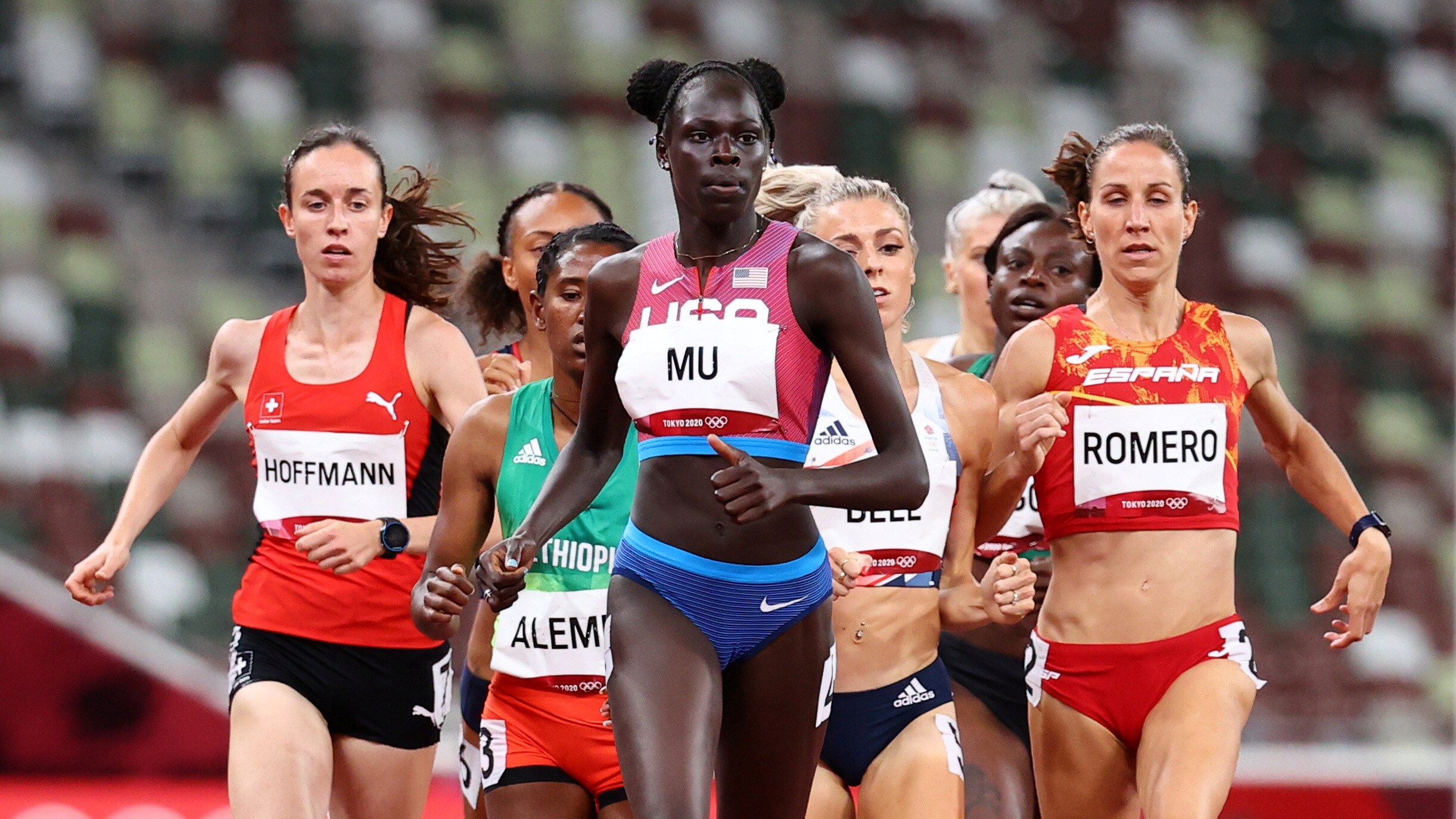
Prospective challengers for medals in Eugene, notably from Europe and Africa, have been laying down their markers in earnest over the last fortnight, however, as the meetings have come thick and fast. The level of excitement and anticipation is rising rapidly on the Road to Oregon.
Britain’s Keely Hodgkinson has her sights firmly set on world 800m gold in Oregon. As does her fellow 20-year-old Athing Mu of the US, who beat her to Olympic gold in Tokyo last year. Something has to give.
Hodgkinson eschewed an almost certain 800m medal at the World Indoor Championships in March as a precaution after feeling a muscle twinge in warm-up for the final – it had to be gold or nothing for her, and she didn’t want to risk what promises to be a richly busy outdoor season.
After an impressive victory in Birmingham she travelled to the Eugene Diamond League keyed up for a pre-World Championships battle with her rival, only to find that Mu was a no-show following the after-effects of having Covid-19.
The Briton did all she could to lay down a big marker on the track where the world golds will be disputed, piling in to win in 1:57.72, the fastest time of the year.
The glove was down. And less than a fortnight later at the Rome Diamond League meeting it was firmly grasped by Mu as she answered the challenge by romping home to win in 1:57.01.
Emmanuel Wanyonyi, the phenomenal 17-year-old who won the world U20 men’s 800m title on his home track of Nairobi last year, has maintained impressive momentum this season, winning in 1:44.15 in Ostrava and coolly outrunning Botswana’s 2012 Olympic silver medallist Nijel Amos at the Rabat Diamond League meeting to win in 1:45.47.
In the Moroccan capital, local hero Soufiane El Bakkali, whose Tokyo victory in the men’s 3000m steeplechase provided his country with its only medal from the Games, once again defeated his great Ethiopian rival Lamecha Girma in a race that nearly blew the roof off the Prince Moulay Abdellah Stadium.
(06/16/2022) ⚡AMPWorld Athletics Championships Budapest23
Budapest is a true capital of sports, which is one of the reasons why the World Athletics Championships Budapest 2023 is in the right place here. Here are some of the most important world athletics events and venues where we have witnessed moments of sporting history. Throughout the 125-year history of Hungarian athletics, the country and Budapest have hosted numerous...
more...Injured or in a running rut? Try volunteering, a day spent volunteering at a race just might be the best thing you do all summer
While it’s temping to pack the warmer months with training and racing, taking a weekend off to volunteer at an event may be more rewarding than you’d expect. Last summer, an injury sidelined me right before an 80km race I had entered. Disappointed, and with a weekend at the race locale already booked, I offered to take on some volunteer shifts, dragging my race crew (hey, they’d already planned to help me that weekend) along with me. It was the best choice I had made all year. Here’s why you should sign up to volunteer this season:
The running community is incredible, and you’ll be reminded of that over and over
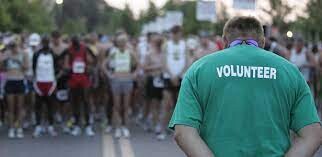
When my crew and I showed up at the aid station we were set to handle, we had no idea what was ahead of us. It was neat to see the incredibly fast first runners go through, but it was the midpack and back of the pack runners that won our hearts. Always thankful, some runners came in needing a quick electrolyte-mix refill and headed back out, while others needed to rest for a bit, or asked for ice (or a bucket to throw up in). Despite clearly feeling the full gamut of race-day emotion, they expressed gratitude and enthusiasm and cheered one another on.
You get an opportunity to give back
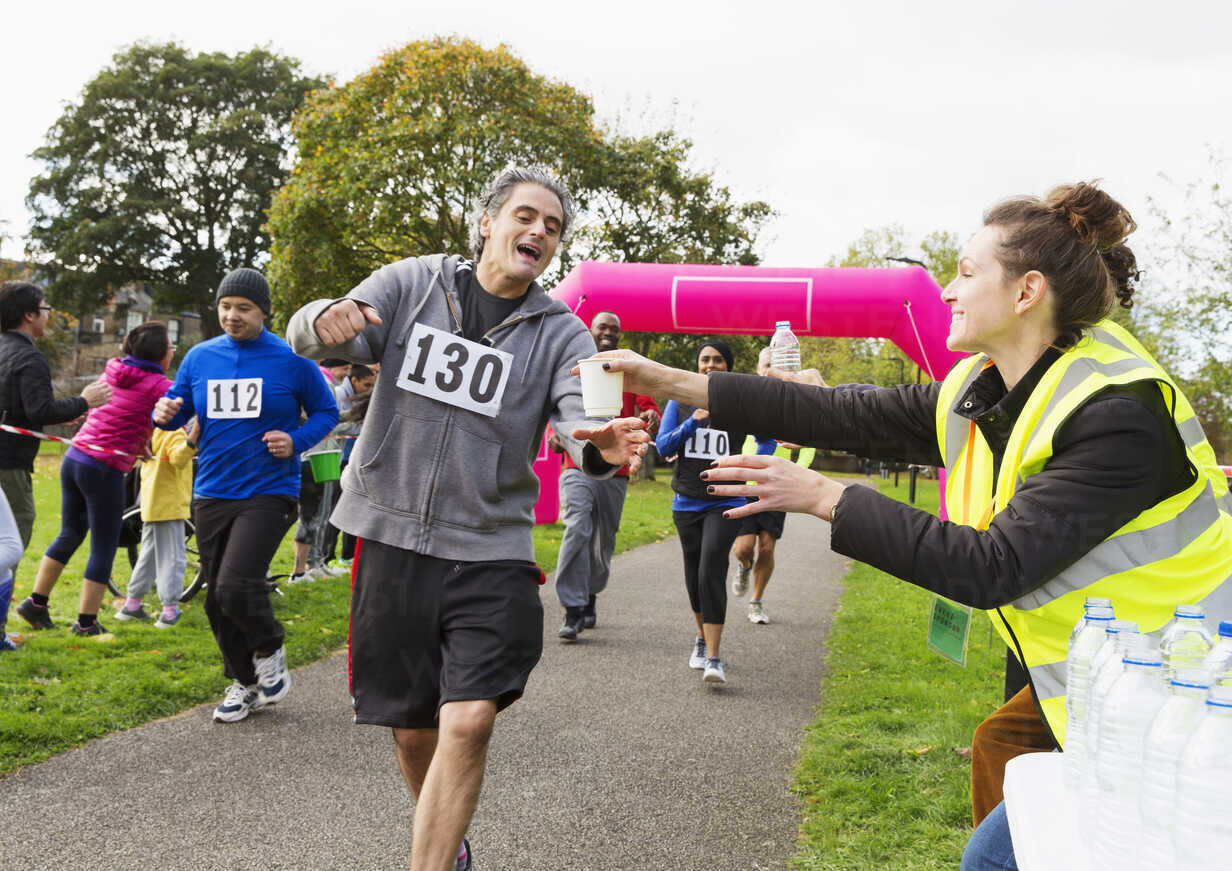
If you’ve raced before, you know how essential the volunteers are. They’ll give you directions, a pep talk, or find a first-aid kit for you, all with a smile. From a 5 km local fun-run to a 100-mile ultra, volunteers are often the backbone of the event. Being on the other side of the table is an act of service to your running family and your community at large.
You’ll learn valuable lessons for your next race
After noticing many runners asking for Coke at our aid station (which, to our dismay, we didn’t have), I decided to try one the next time I was able to go on a long training run, and I discovered how satisfying it was. I noticed how contagious positivity was, and made a mental note to be more thankful of the volunteers the next time I competed. It was also a great reminder of how fun races can be, something that can get lost when chasing personal bests.
It’s good for you
Studies show volunteering boosts mental health. Not only do volunteers feel connected to their community, but they meet new people and experience health benefits. We all know volunteering in general is helpful to others, but you’ll also be benefiting while you hand out medals or refill water bottles.
It’s as much fun as running (and maybe even more)
Our day at the aid station was so enjoyable that we picked up an additional night shift, and found it exhilarating to see runners of all speeds finish the event. I was surprised to discover that the enhanced sense of community and well-being I basked in after running in a race carried over to volunteering. For weeks, my husband and I reminisced about the people we met and the interesting things we witnessed, and we immediately signed up to volunteer regularly at a local event.
(06/16/2022) ⚡AMPby Running Magazine
In order to win his first Dipsea Race 28-year-old Eddie Owens had to study it first.
Two years ago when he moved to San Francisco, Eddie Owens knew nothing about the Dipsea – the country’s oldest trail race – other than what he heard from area runners. It prompted him to visit Marin County to meet Dipsea historian and author Barry Spitz, who has written the quintessential book about historic race, “Dipsea: The Greatest Race.” Owens bought a book from Spitz and said he was curious about the fastest times on record in the race.
Apparently, Owens not only read about them, but he appears hell bent on eclipsing them.
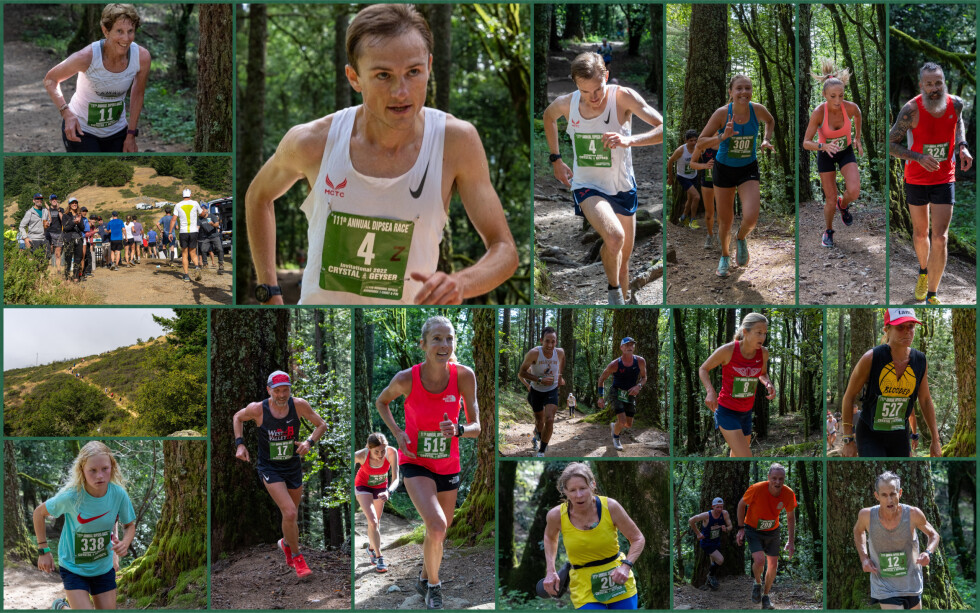
With a time of 48:35 on Sunday – more than a minute faster than anyone else in the field – Owens easily won the 111th Dipsea with a race for the ages. He became the first runner in his 20s to win the historic 7.5-mile foot race from downtown Mill Valley to Stinson Beach since 25-year-old Carl Jensen was the last person to win the event from scratch in 1966.
That feat followed Owens’ astonishing Dipsea debut effort last November when he denied Alex Varner of a 10th Best Time Award by finishing fourth overall with an actual running time of 47:47, the fastest in 26 years.
Owens, who grew up in Brooklyn, N.Y. and attended Princeton University, obviously is a fast learner when it comes to the Dipsea.
“I’ve run races all over the country and all over the world, but there is nothing like the Dipsea,” said Owens, who was a member of Team USA at the 2021 World Mountain and Trailrunning Championships. “I look forward to coming back for many years and decades to come.”
Owens was given a one-minute head start on Sunday in the Dipsea, a unique race in which each of the 1,500 runners are assigned head starts based on age and gender. With a two-minute head start Paddy O'Leary, a 34-year-old cancer researcher from San Francisco, finished second one minute and 17 seconds behind Owens and Clara Peterson, a 38-year-old mother of four from Corte Madera who was a two-time All-American cross country runner at Duke University, was third. She started seven minutes in front of Owens’ starting group and posted the fastest time (58:45) by a female in the race, finishing one spot ahead of Stephanie Howe of San Rafael, another two-time NCAA All-American in college (Northern Michigan University) who was making her Dipsea debut. Fiona Lyon and two-time Dipsea winner Chris Lundy finished right behind, the first time since 1992 that four females have finished in the Top Six of the Dipsea.
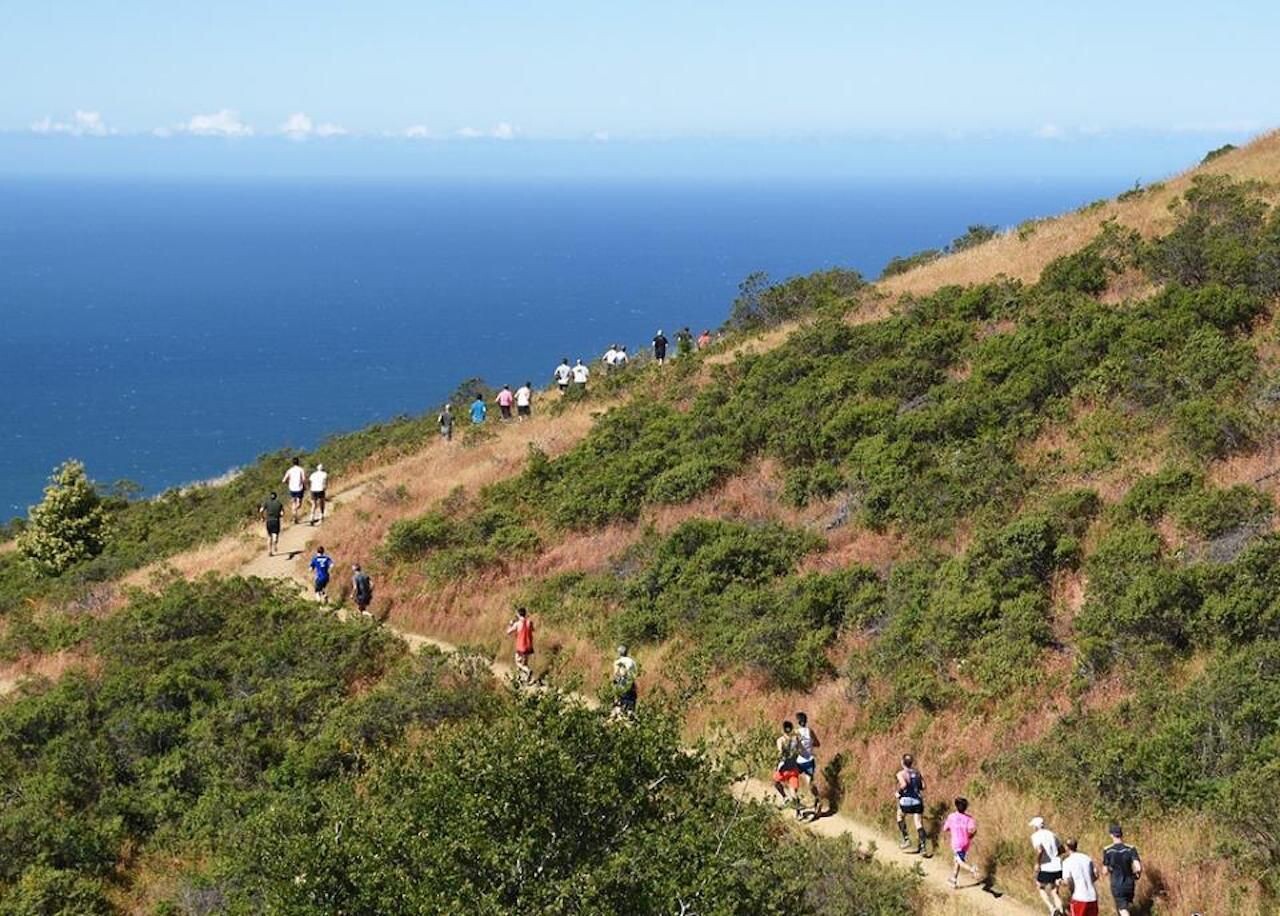
Mark Tatum, the defending Dipsea champion from Colorado Springs, CO, placed eighth overall.
Peterson and Howe -- along with two-time Dipsea champion Diana Fitzpatrick of Larkspur, 25-time Black Shirt winner Brad Byron of Penngrove, and Tanya Fredericks of San Anselmo – pushed the Tamalpa Runners into a remarkable first-ever tie with rival Pelican Inn Club for the Dipsea’s Team Trophy. Alex Varner, Cliff Lentz, Don Stewart, Jeffrey Stern, and John Gardiner were the top runners for Pelican Inn which won the team trophy last year.
The mother-and-son team Elena Shemyakina of Geneva, IL and Mikhail Shemyakin of Mill Valley won the Alan Beardall Family Trophy for the third time and Berkeley High School student Oliver Nickelsen claimed the First High School Boys Finisher for the second year in a row and won another Dipsea Black Shirt. He was joined in that select group by seven first-time Dipsea Black Shirt winners (Carolyn Latham, Benjamin Koss, Anthony Fagundes, Taylor Fortnam, Lacee Phillips, Patrick Wachter, and Ibet Allen.)
Emma Dunmire of Tamalpais High School was the First High School Girls Finisher, and Patrick Green of Long Beach was the first finisher in the race from the Dipsea Runner’s Section.
Diana Fitzpatrick, who won her record-tying 19th Dipsea Black Shirt to match Dipsea Hall of Famer Jamie Rivers, was named the recipient of the Norman Bright Award for “Extraordinary Effort in the Dipsea Race” in a post-race awards ceremony staged in person for first time at Stinson Beach Park since June 2019 before the COVID-19 pandemic. Robert Alexander, who made his Dipsea Debut in 1984 at the age of 32 when he placed 13th overall, was named the recipient of the Dipsea Demon Award for “dedication, perseverance and performance over time” to honor ” the late Jack Kirk, who completed a record 67 consecutive Dipseas, the last at the age of 95. Alexander, 66, competed in his 38th consecutive Dipsea on Sunday. Longtime Dipsea volunteer Mari Allen, who led the charge in organizing a centennial celebration of the Women’s Dipsea Hike in April, was named recipient of Red Tail Hawk Award for “Leadership, Dedication and Sportsmanship” named in honor of the late Jerry Hauke, the Dipsea Race director for 37 years.
This year’s Dipsea race featured runners from a total of 30 states plus the District of Columbia were entered in the 111th Dipsea from as far away as Maine and Italy.
The oldest runner entered was 84-year-old Norman Pease of Orinda and the oldest female entered was 80-year-old Emma Ulvestad of Mill Valley. The youngest girl entered was 8-year-old Caleesi Beck of Mill Valley and the youngest boy entered was 5-year-old Christopher Ciaschini of Mill Valley.
(06/15/2022) ⚡AMPThe Dipsea Race
First run in 1905, the Dipsea is the oldest trail race in America. It is run every year on the second Sunday in June. The scenic 7.4 mile course from Mill Valley to Stinson Beach is considered to be one of the most beautiful courses in the world. The stairs and steep trails make it a grueling and treacherous race....
more...127th 2023 Boston Marathon Field Size Established as 30,000 Participants and Registration to be held September 12–16, 2022
The Boston Athletic Association (B.A.A.) announced today that the field size for the 127th Boston Marathon, scheduled to take place on Monday, April 17, 2023, has been established as 30,000 participants. Registration will take place over five days, September 12–16, 2022.
“The 127th Boston Marathon will be another significant moment in B.A.A. history, as we recognize and honor the tenth anniversary of 2013,” said Jack Fleming, Acting Chief Executive Officer of the B.A.A. “On the third Monday in April 2023, athletes from around the world will gather with the resilience and spirit that has distinguished the Boston Marathon as the premiere event in road racing.”
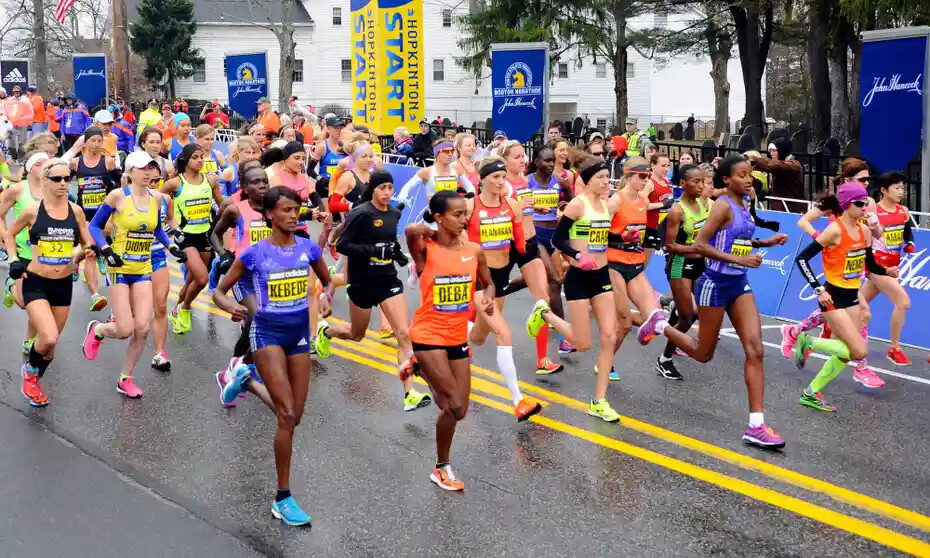
Registration will open on Monday, September 12 at 10:00 a.m. ET and will close on Friday, September 16, 2022 at 5:00 p.m. ET. The B.A.A. will use the same registration process for qualified runners as it used for the 2021 and 2022 races, allowing any athlete who has achieved a currently valid Boston Marathon qualifying time to submit a registration application between September 12–16, 2022 through the B.A.A.’s online platform, Athletes' Village.
Registration is not on a first-come, first-served basis and applications will be accepted until 5:00 p.m. ET on Friday, September 16. The 2023 Boston Marathon qualifying window began on September 1, 2021 and will close at 5:00 p.m. ET on Friday, September 16.
Qualifying standards for the 127th Boston Marathon can be found here. Qualifiers may submit an application at any point during the registration window. Achieving one’s qualifying standard does not guarantee acceptance into the Boston Marathon. Those who are fastest among the pool of applicants in their age and gender group will be accepted.
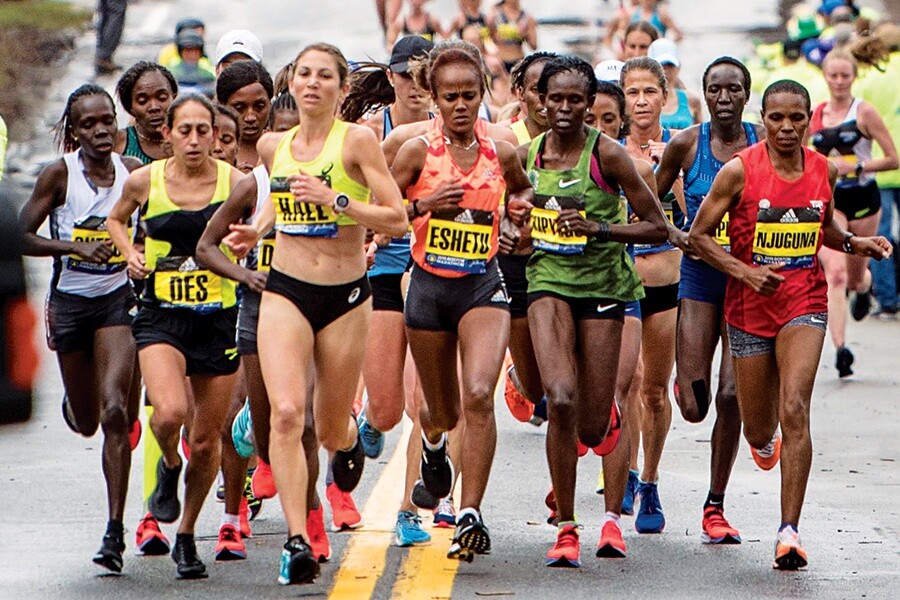
Entry fees and information on health and safety guidelines, including any COVID-19 policies, will be announced in the coming weeks. For the third straight year, participants will have the opportunity to purchase registration insurance at the point of registration.
The qualifying window for the 128th Boston Marathon, scheduled to take place on April 15, 2024, will begin on September 1, 2022. Registration details for that race will be announced following the 2023 Boston Marathon.
The next B.A.A. event is the B.A.A. 10K presented by Brigham and Women’s Hospital on Sunday, June 26.
(06/15/2022) ⚡AMP
Boston Marathon
Among the nation’s oldest athletic clubs, the B.A.A. was established in 1887, and, in 1896, more than half of the U.S. Olympic Team at the first modern games was composed of B.A.A. club members. The Olympic Games provided the inspiration for the first Boston Marathon, which culminated the B.A.A. Games on April 19, 1897. John J. McDermott emerged from a...
more...New personal best set at the KATA 10k Time Trial
The tenth edition of Kenya Athletics Training Academy 10kilometres monthly time-trial took place on Wednesday in Thika Kenya with Peter Wanyoike running a new personal best and winning again.
Sibling rivalry marked the event with upcoming Erick Mutuku and consistent Zakaria Kirika fighting for the runner-up position during the run that brought together 16 participants.
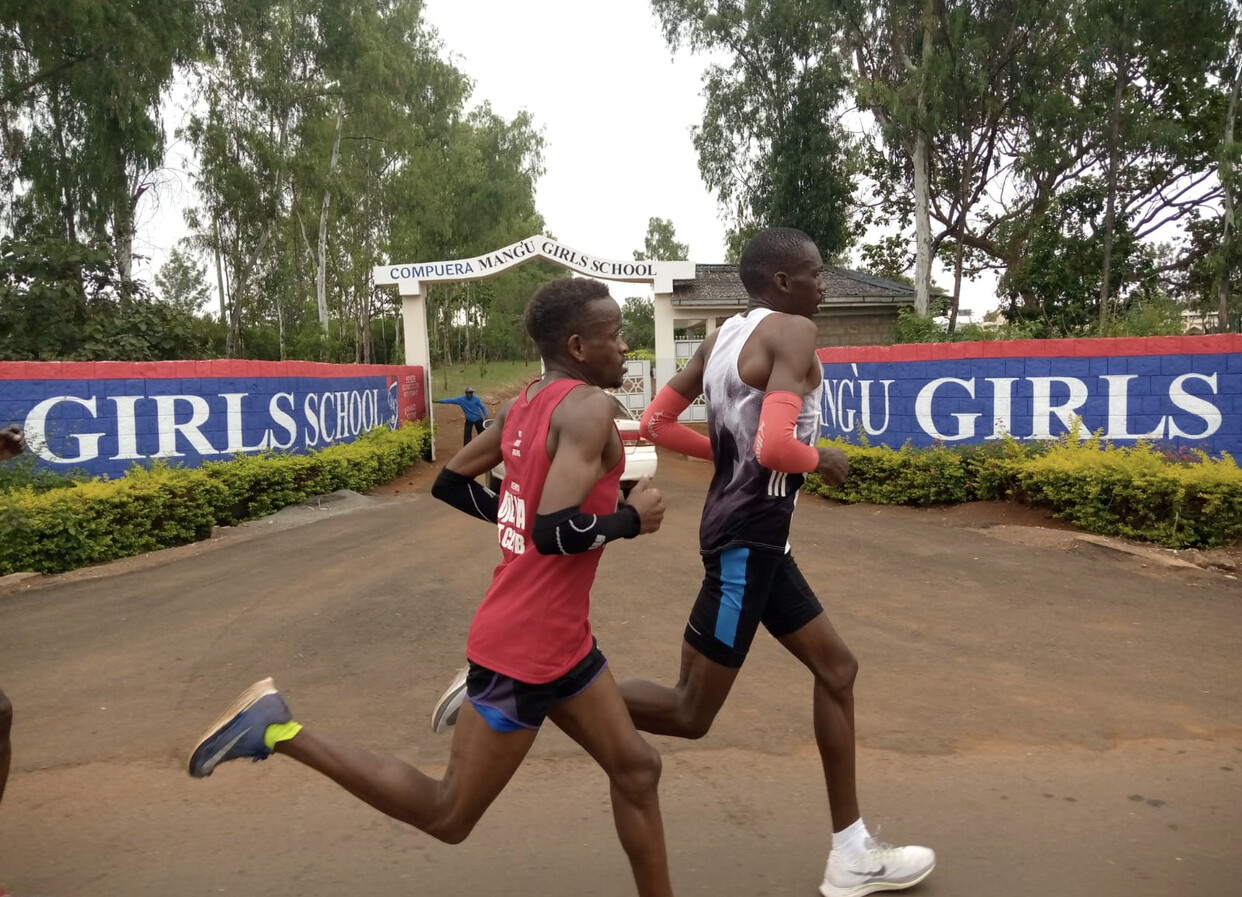
Wanyoike, winning the trial for the 4th time in a row, clocked 29:53.19 to beat his previous 29:53.68 registered during the 8th edition in April.
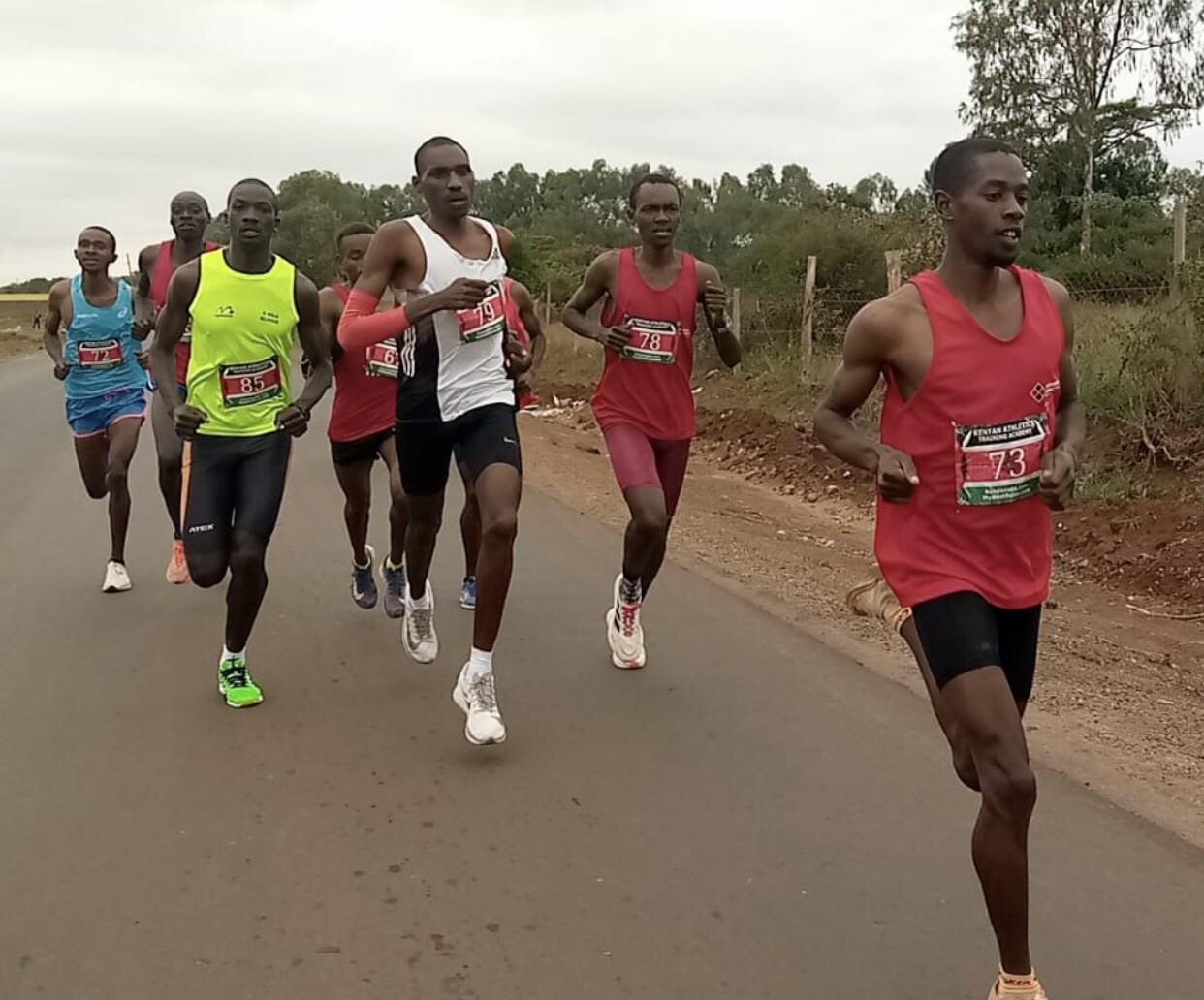
Kirika was dislodged from his second position by Erick Mutuku who timed 30:03.18. Kirika managed 30:14.86 in third place.
The monthly trial has become a yard stick forgauging individual speed with young and upcoming athletes reaping maximum benefits.
Levis Kuria, Erick Mutuku, Boniface Mungai, Nicholas Kitundu and Raphael Gacheru, all in their early 20s, attained their individual records with significant margins.
Kuria clocked 31:32.75, improving his previous 33:03.46 while Mutuku and Mungai timed 30:03.18 and 31:25.79 from 30:14.67 and 32:30.42 respectively.
The next KATA 10K Time-Trial will take place on 13th of July at the same place.
RESULTS
NAME BIB TIME Age
1.Peter Wanyoike 79 29:53.2 26
2. Erick Mutuku 67 30:03.2 20
3. Zakaria Kirika 78 30:14.9 21
4. Nichola Kitundu 72 31:13.3 22
5. Fredrick Kiprotich 76 31:21.9 23
6. Raphael Gacheru 70 31:25.5 22
7. Boniface Mungai 77 31:25.8 23
8. Robinson Mwaura 85 31:31.4 29
9. Levis Kuria 66 31:32.8 21
10. Geoffrey Mwangi 82 34:24.4 40
11. Erick Mugo 73 34:45.8 29
12. Paul Ng’ang’a 71 34:48.1 42
13. Charles Ndirangu 80 37:03.5 62
14: Peter Mukundi 81 37:36.1 25
15. Wisely Kipkirui 84 38:38.9 24
16. Ann Wangu 83 46:47.2 30
(06/15/2022) ⚡AMPby Coach Joseph
KATA Time Trial Series
Welcome to the KATA Monthly Time Trial Held at the Kenyan Athletics Training Academy in Thika, Kenya, the KATA Monthly Time Trial is a unique and inclusive event designed to support runners of all levels in achieving their goals and showcasing their fitness. This event offers both 10K and 5K distances on an accurate, certified course, providing participants with...
more...Red Bull 400 is the Steepest Race in the world!
Founded by Red Bull in 2011, the Red Bull 400 is the most intense and steepest 400-meter uphill sprint in the world. Ski jumping and ski flying hills have a total distance of 400 meters (1312 feet) and a maximum incline slope of 37 degrees, which competitors from around the world attempt to beat. When it comes to running, there's no better challenge than the Red Bull 400, an almost vertical dash that will put your speed, endurance, and general fitness to the test. Regardless of how difficult the race may be, the view from the top is quite breathtaking. The bettor will take bets on your achievable time for the athletes.
Things to know about the steepest race in the world

• It's hard to imagine a race being more demanding than the Red Bull 400. In order to achieve the fastest possible lung-busting dash up a ski jumping ramp, participants must complete it. The winner is the first to reach the pinnacle. There are 600 to 800 steps involved, and the farther you go up, the steeper it gets.
• Anyone who is physically healthy enough to run a 400-meter uphill sprint may participate in the Red Bull 400. Training for the calves and quads, in particular, is recommended before participating. Running up a ski jump, on the other hand, can only genuinely prepare you for the experience.
• In terms of the Red Bull 400, the numbers speak for themselves. A 40-story building's worth of elevation rise is required to complete the 400-meter course. In order to keep going, you'll need to get down on your hands and knees and work your way up to a 37-degree gradient. As a result, your heart rate can soar as high as 200 bpm, and your lactic acid buildup is 20 times more than normal.
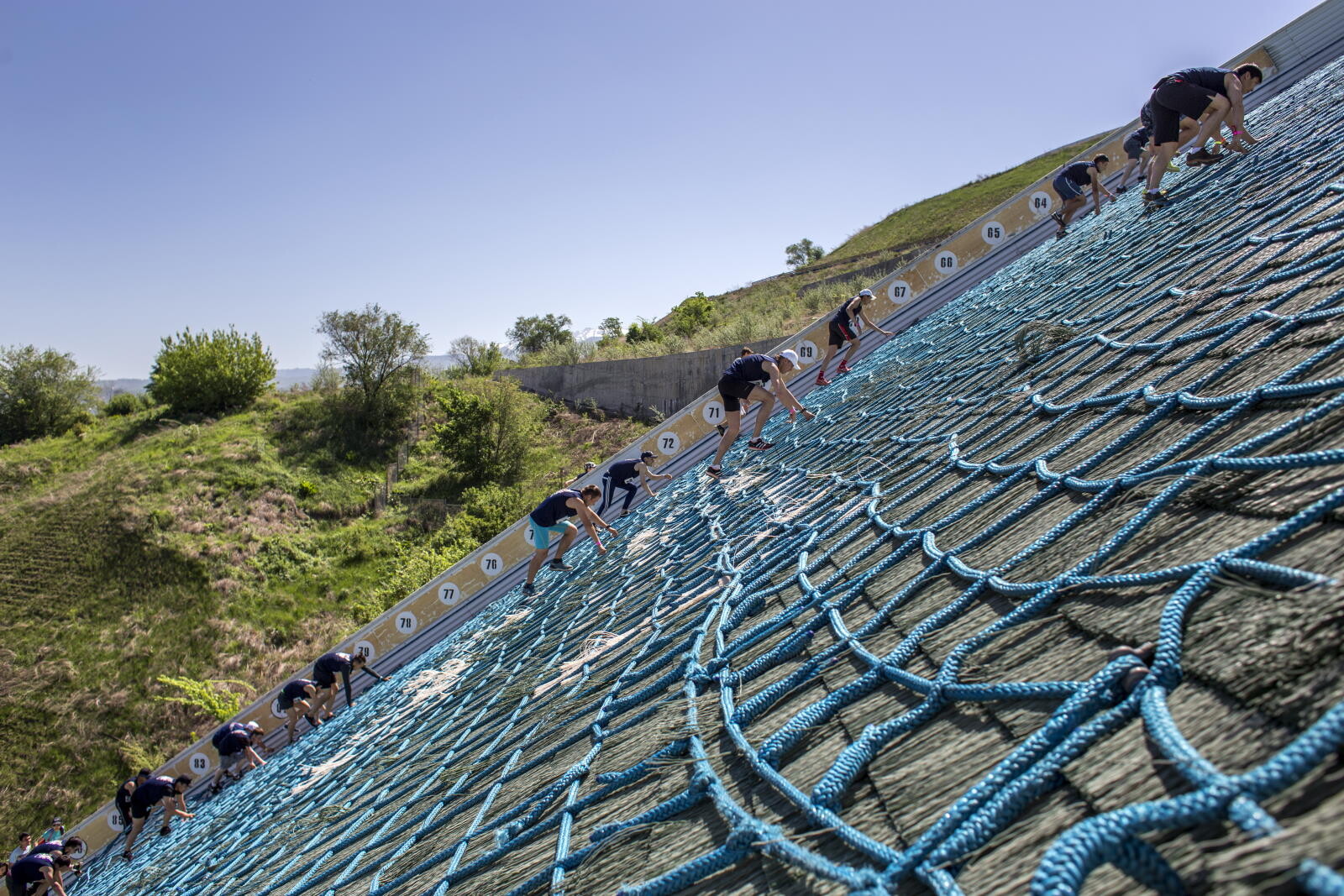
• It takes more than just energy to climb a hill; it also takes time. Changes in gravitational potential energy can occur over a short period of time or over an extended period. You'll see a different pace of energy change depending on the time period. Power is the rate at which energy changes.
• Whatever activity you participate in, it's imperative that you dress appropriately, but this is unlike any other race you've done before and necessitates a unique set of running clothes. Switch out your regular running shoes for trail shoes or even light hiking boots to get the most out of your workout. Gloves are also a good idea.
Athlete experience
After the ascent began, it was difficult to figure out the most efficient route to ascend the steep, grassy hill. In the beginning, I ran up the hill on my hands and feet, but soon after, I began crawling up the slope on my hands and knees as well. I found this to be far more efficient than relying just on my feet to get where I needed to go. Starting out too hard results in an early accident, and the track only gets steeper and more difficult as the race progresses.
Conclusion
The star of the Red Bull 400 has been identified. As the first male world champion, Ahmet Arslan has won 20 out of 23 Red Bull 400 races. During the Red Bull 400 event, there are steeper slopes than treadmills in the gym. You can complete it if you persevere through the pain in your quads and lungs. It is very difficult, but not unachievable on foot.
(06/15/2022) ⚡AMP
Estimate your mile time with this short speed workout
Have you ever wondered how fast you could run a mile? Many runners tend to bump up to longer distances before working on their speed, but training speed over shorter distances can translate well to longer distances, so it’s a great idea to test yourself on the track from time to time as well.
Knowing your mile time is essential for speed training, as it challenges your aerobic system. It also puts more stress on your mechanical system, since you’re running at a much faster pace than you would in a 5K or longer. This allows you to build the strength you need to maintain your form over longer distances.
Here is a workout to find your mile pace for speedwork and racing.
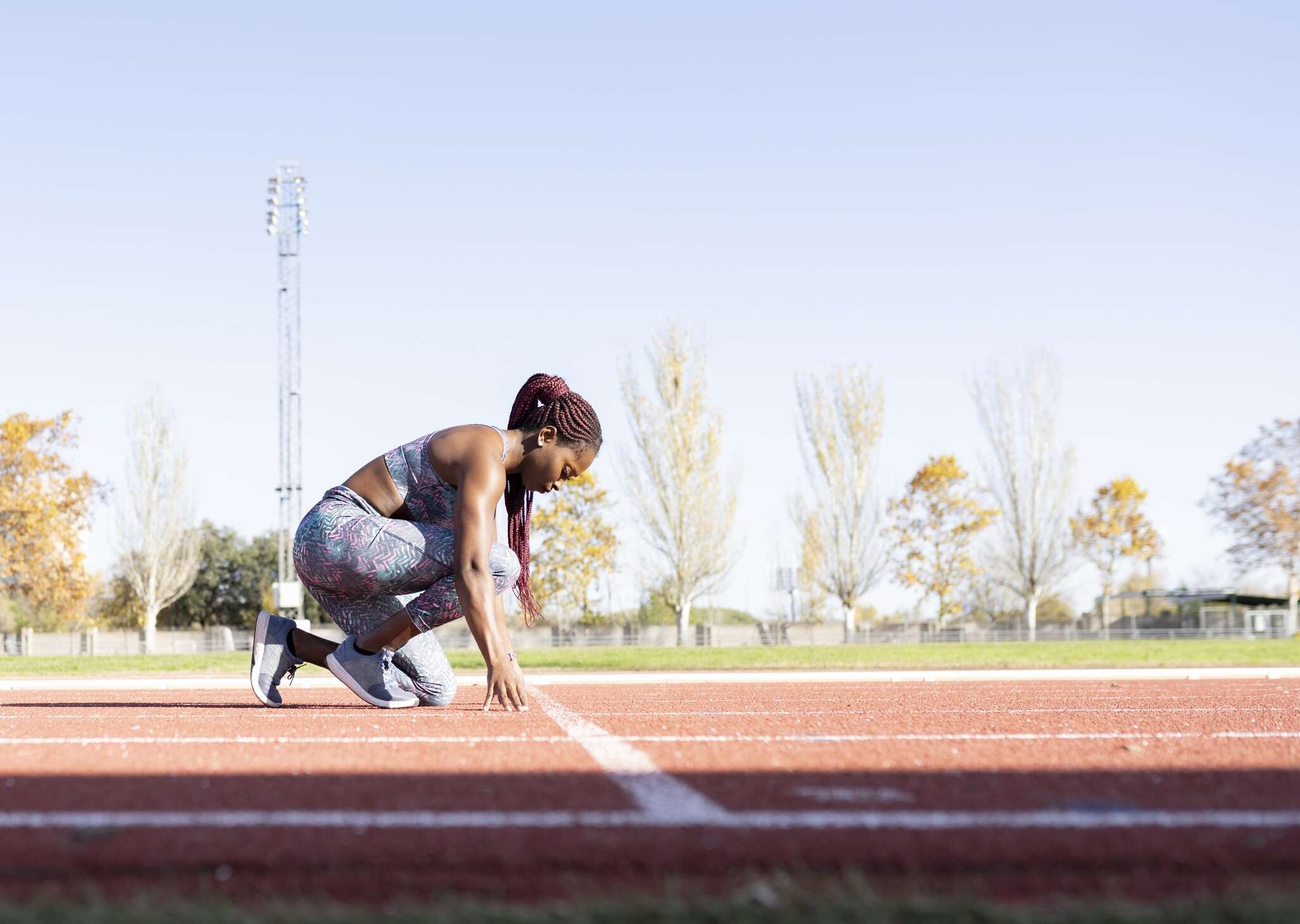
Workout:
Two reps of 800m with 30 seconds rest/400m with 30 seconds’ rest/400m, with 10 minutes’ rest between sets
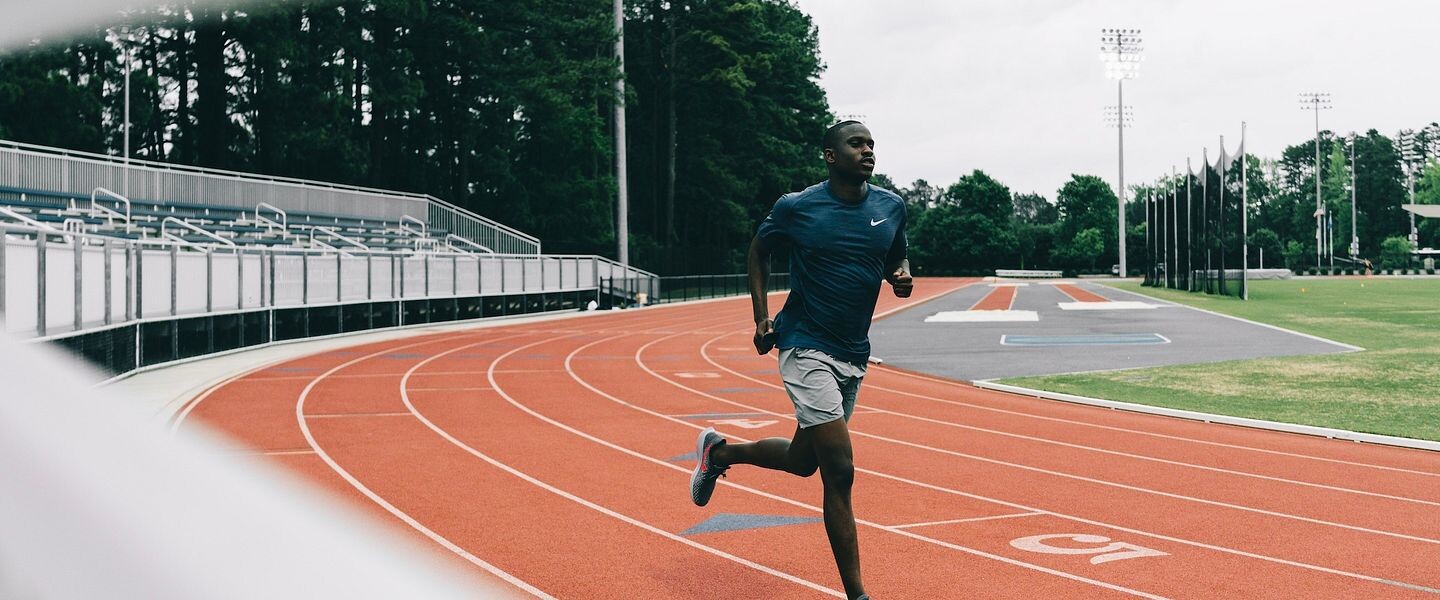
Each rep should be done at a threshold pace, but not at all-out. If you are unsure what your threshold pace is, aim for 20 to 30 seconds per kilometre faster than your 5K pace.
For example: If you run a 25-minute 5K, the 800m rep should be done in 3:36 to 3:40, and the 400s should be done in 1:45 to 1:48.
You will find the 30 seconds’ rest will go by quickly. To keep yourself diligent, get ready to start the next rep after finishing the previous one. If you are doing the workout at a track, drop water at the 400m mark, so you’re able to get fluids into your body between reps.
Between sets, grab your water and walk a lap or two around the track to keep your heart rate up.
Keep track of your splits for each rep, and do the same for the second set. Add up all the times, then divide by two, which should give you an estimate of what you could run for a mile (give or take a few seconds).
Example: 3:36 + 1:45 + 1:45 = 426 seconds (a 7:06 mile)
The short rest will make this workout not the most pleasant, but one you can look back on with confidence and as a future reference.
(06/15/2022) ⚡AMPby Marley Dickinson
World Athletics launches Personal Best, a lifestyle channel for all runners
World Athletics has just launched Personal Best, an Instagram-based platform geared towards all runners, regardless of ability or passion.
The simple aim of Personal Best is to connect the global running community, getting more people to run more often.
Personal Best is dedicated to every runner, regardless of ability or passion. It will represent and connect runners from all over the world with the aim of building a diverse and relatable community and a supportive environment for everyone, for runners new and old.

Whether it’s a teammate, friend, family member or stranger, running brings people together. Personal Best will encourage and help everybody within the global running community to achieve their goals, however big or small.
The channel will share runner experiences from all walks of life, all over the world: the adventures, the challenges, the struggles, the communities and above all, the sheer joy of running.
(06/14/2022) ⚡AMPThree tips for more relaxed running, these simple tips will have you running with ease
We’ve all watched runners who seem to stride effortlessly even at top speeds, like Eliud Kipchoge, the GOAT of marathoning. Intentional practices, like the ones he uses, are not just for the pros. Try these simple tips to relax during your next run.
Mentally check your form
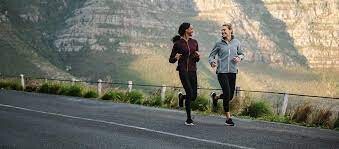
Make a practice of doing a body scan regularly during your training runs, checking your body for tension. Our form tends to start to fall apart when we tense up as we try to hit interval splits or get fatigued. Checking in both gives you a mental break from worrying about pace and can help you loosen up any tight spots. Starting with your head, run through key tension spots like your jaw, shoulders, and arms, and note where you feel any tightness or awkwardness. Check that your arms are swinging loosely. After a bit of practice, this will become a habit and you’ll find yourself naturally adjusting your runs for ease.
Relax your face (try smiling!)

Kipchoge is famous for smiling throughout his races. Research suggests that runners who smile while exercising improve their running economy, use less oxygen, and have a lower rate of perceived exertion. You may feel silly at first, but you’ll run more smoothly and maybe even manage to pull off that elusive great race photo. Try smiling at other people out exercising as you pass by.
Take a deep breath, shake it out, and reset
Whenever you note that you’ve accidentally tensed up, take a deep breath, release your shoulders, and give your arms a shake. Focus on your breath for a few moments, trying to breathe consistently rather than in short bursts, and from your belly. If you’re still finding that you’re consistently feeling tight and uncomfortable during runs, try incorporating a short (two minutes is enough) breathing practice before or after workouts, or just before bed, making your breaths full and long. Bonus: you’ll sleep better, which in turn will help you run with less effort.
(06/14/2022) ⚡AMPby Keeley Milne
The world's fastest man is once again putting on his football boots for a good cause
Usain Bolt is back to captain the Rest of the World XI against England in Soccer Aid.
The former Olympic sprinter is once again involved as skipper, having played in the past few matches. Fittingly, the match is taking place at London's Olympic Stadium - a football venue in its own right as the home of West Ham, but also the place where Bolt set the Olympic record on the way to defending his 100m crown in 2012.
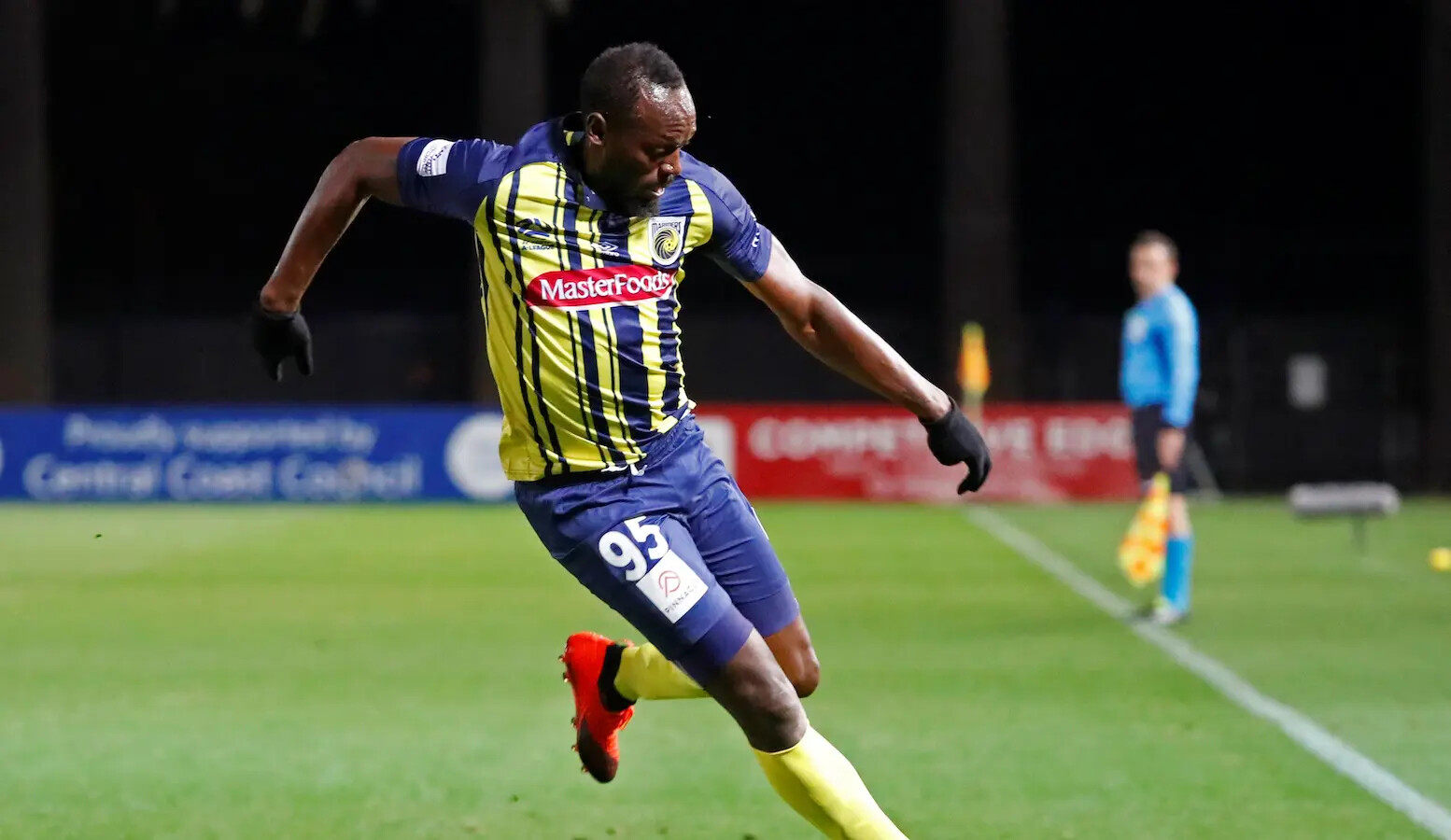
London 2012 was a highlight in a storied career that saw Bolt establish himself as the fastest man in the world and set records that have yet to be beat. The 9.63 seconds it took him to win gold in 2012 remains an Olympic record - beating the one he'd set in 2008 - but the overall world record was set by himself a few years before that.
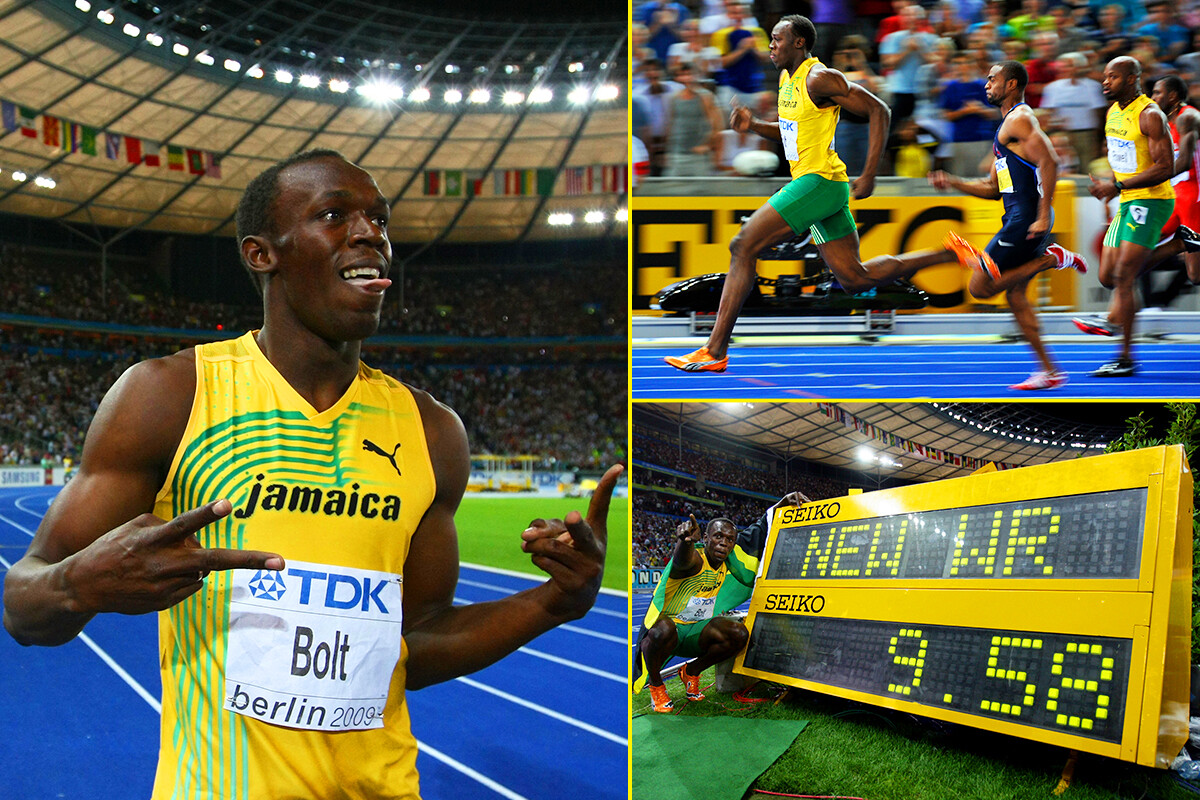
Bolt set the current 100m world record at the 2009 IAAF World Championships, clocking an incredible 9.58 seconds for the feat. His average ground speed was 37.58km/h (23.351 miles per hour), whilst reaching a top speed of 44.72km/h (27.788 miles per hour) in the 60-80m stretch – numbers fitting for the world’s fastest man.
He first held the 100m world record in 2008 at the Reebok Grand Prix in the Icahn Stadium in New York, clocking 9.72 seconds to beat fellow Jamaican Asafa Powell’s record of 9.74 seconds set at the IAAF Grand Prix in Rieti, Italy, a year before. He brought the record down further to 9.69 seconds at the 2008 Olympics in Beijing, before hitting his peak in 2009.
9.58 seconds remains the world record for the 100 metres and Bolt has commemorated that in past Soccer Aids by wearing the number - complete with decimal point - on the back of his shirt. For added measure, Bolt also holds the record for the 200 metres - running 19.19 seconds at the 2009 World Championships.
(06/13/2022) ⚡AMPThe Rome Diamond League did not disappoint, with several meet records shattered
The Rome Diamond League did not disappoint on Thursday afternoon. Several meet records were smashed, including Eliud Kipchoge’s 5,000m meet record of 12:46.53–by his compatriot, Nicholas Kimeli,who clocked a world-leading time of 12:46.33.
Kimeli’s time was the seventh-fastest ever over 5,000m, and only six seconds behind the Kenyan national record held by Daniel Komen at 12:39.74.
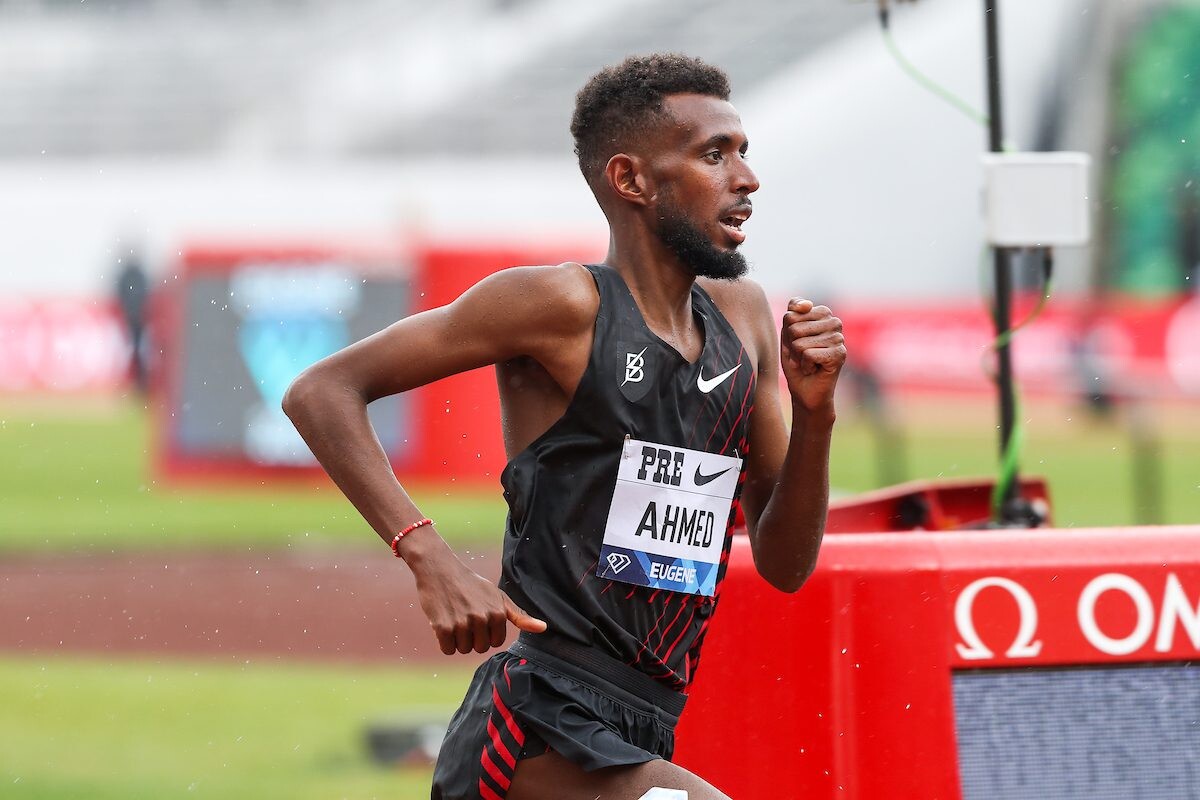
The 23-year-old Kenyan came into the race in great form, winning the TCS World 10K in Bengaluru, India, in mid-May in course record time and setting a Kenyan national record over 5K on the roads in April (12:55).
The men’s 5,000m was speedy from the start, with the pace set for 2:35/km at the front. Yomif Kejelcha of Ethiopia led the race until one lap to go, when Kimeli and his Kenyan compatriot, Jacob Krop, took over the race with 300m to go. Krop and Kimeli battled over the final 200m until Kimeli put a gap on Krop with less than 100m to go, setting a new personal best, meet record and world lead over 5,000m. Krop finished second in a personal best time of 12:46.79, while Canada’s Mohammed Ahmed (second photo) ran a season’s best time of 12:55.88 to finish fifth.
In the women’s 800m, Athing Mu made a statement, winning the race in a world-leading time of 1:57.01. Mu sat on the heels of the pacer for the first 400m, coming around in 56-high. Once the pacer fell off, the 20-year-old American phenom took over, winning the race by almost two seconds.
(06/13/2022) ⚡AMP
by Running Magazine
Delayed Onset Muscle Soreness: A Runner’s Friend or Foe?
Recovery from meniscal injuries can take between 4 – 24 weeks if you start effective treatment early and you manage it well.
Minor to moderate meniscal tears, both acute (from traumatic injuries) and degenerative (from wear and tear), can heal with conservative treatment.

The more severe your symptoms and having other injuries like anterior cruciate ligament injuries with your meniscal tear, will increase your healing time.
What are the treatment options for a meniscal tear?

A conservative rehabilitation program for your knee that includes rest, ice, medication and a structured exercise program is often enough to heal a meniscal tear on its own.
If conservative treatment doesn’t improve your symptoms within three months, your tear may require surgical treatment.
Do all meniscal tears require surgery?
No, treatment of a meniscal tear depends on:
Symptoms
Age
Activity levels
Location and type
Age, symptoms, activity levels
Meniscal tears may cause mild to severe symptoms at first. For people over 40 years old, once the initial injury settles down, if your symptoms don’t interfere with daily activities, surgery is not recommended. Non-surgical treatment is preferred.
The younger you are, the less wear and tear there is in your knee joints, and the better your body heals from surgery. Surgery is a valid option if you’re young, have no other ligament injuries and your meniscal tear is from an acute injury.
Many of you have experienced extreme muscle soreness after pushing the pace during a race, running intervals or hills or trying a new weight lifting program. This painful condition is called Delayed Onset Muscle Soreness or DOMS.
The onset of DOMS after exercise is usually within 24 to 72 hours of completing a workout. Symptoms of DOMS include extreme muscle soreness and tenderness, mild swelling of muscle tissue and restricted range of motion.
What causes delayed onset muscle soreness?
While the research has not been conclusive on the causes of DOMS, there are two common theories. The first is based on an understanding of what delayed onset muscle soreness is — an accumulation of the lactic acid produced during exercise, which causes muscle pain. Lactic acid is a by-product of our cells that can exceed normal levels with strenuous exercise and create a painful acidic environment.
Most physiological studies do not support the lactic acid theory, however. This is because, after exercise, most of the excess lactic acid is flushed from your system within 30 minutes. Hence lactic acid should not cause muscle soreness one to two days after exercise. Additionally, similar blood levels of lactic acid in cyclists and swimmers do not produce the same symptoms that runners experience, further debunking the theory that lactic acid causes DOMS.
The more widely accepted cause for the symptoms of DOMS is that the muscle pain is due to extreme trauma to our muscle tissues. Running, at its essence, is controlled falling. We use our muscles to decelerate our joints as they absorb impact.
These types of muscular contractions are called eccentric contractions. Eccentric muscle contractions are performed with weight-bearing activities (walking, running, weightlifting). As the muscle fibers slow down and control the rapid deceleration of a runner’s body weight (especially with a new or harder than normal workout), they tear.
About 24 hours after the bout of exercise, the effects of inflammation appear as pain, swelling and stiffness. The inflammatory process basically cleans up damaged tissue and repairs and/or produces new tissue. The pain is caused by inflammatory enzymes and chemical by-products that sensitize pain receptors and cause cellular swelling. The cellular swelling can be extremely painful and can last about 72 hours.
The new muscle fibers that are produced are usually more adaptable to the stress and strain of running. In other words, it is out with the bad and in with the better. This is not news to many experienced runners. Tough runs and workouts make us stronger. So, for those who ask the question, “Is DOMS good?” the simple answer is yes, it can be.
Running, at its essence, is controlled falling. We use our muscles to decelerate our joints as they absorb impact.
Understanding DOMS: the role inflammation plays
Traditionally, inflammation has a bad reputation. Nonsteroidal anti-inflammatories (NSAIDS) are common medications used by runners to reduce post-run inflammation and pain. Some runners will even take NSAIDS prior to a run to prevent inflammation. However, studies have shown that not only are NSAIDS tough on your stomach and kidneys, but they also impair the normal healing process.
So, while popping an NSAID might give you temporary relief from the pain of DOMS, it is likely leading to weaker muscle fiber formation. In fact, it could be argued that controlled inflammation is a runner’s best friend. After an abnormally long or hard run, the body has a short window of time to take advantage of the inflammatory cycle’s process of muscle fiber rebuilding and remodeling. Rather than popping a pill to soothe sore muscles after exercise, consider a natural, proactive approach to relief and recovery.
DOMS recovery: how to get relief for sore muscles
Try these practices to optimize your body’s potential while your body recovers:
Ice Bath:
Soaking from the hips down in a cold stream, lake or in a tub full of ice for 15-20 minutes within 30 minutes of your run reduces the painful cellular swelling produced by inflammation without affecting the healing components of the inflammatory cycle. I have found that getting in the tub first and then adding the ice is the least painful method.
Active Rest:
Move! If you sit around during the healing process the remodeled muscle tissue will be stiff and shortened which over time leads to postural imbalance and injury. For example, prolonged sitting can result in tight hamstrings which could lead to a hamstring strain when you try to go for your first post-DOMS run. Walking, yoga class, cycling, elliptical trainer and pool running are all good options for exercise while recovering from DOMS. Try the Downward Dog stretch to address tightness in the hamstring, hip and calf muscles. See Fig.1 for instructions on this common yoga technique.
Stretching Lightly:
Stretching during the 24-72 period of DOMS is very different from normal stretching. The healing muscle fibers are very delicate. You do not want to overstretch and tear previously damaged muscle fibers. Take your stretches just to the threshold of discomfort and then back off a bit. Hold for up to 60 seconds. See Fig. 2-3 for instructions on how to stretch the quadriceps and hip flexor muscles.
Massage:
Seeing a massage therapist for a gentle massage, or utilizing self-massage using a foam roller, helps increase blood flow and flexibility of healing tissues. Avoid deep tissue massage for at least a week after the onset of DOMS to avoid further traumatizing healing muscles. See Fig. 4 for directions on using a foam roller on the outer leg and hip muscles.
The benefits of Delayed Onset Muscle Soreness
As a physical therapist, I work with patients to improve their strength and flexibility through various treatment approaches and prescribed exercise. am constantly trying to make changes to patients’ bodies by prescribing exercises to improve flexibility and strength. During the short period of DOMS, the body is primed for making these types of changes in a relatively short time.
I have described running as a sport that causes countless tissue tears and profound inflammation. So why should we run? Why would I recommend such a traumatic activity that can lead to such extreme muscle soreness?
Weekly, I have patients ask me if running is bad for them. Often, someone has told them not to run because it is too hard on their body. Knowing what causes DOMS, and that running is one type of workout that can lead to the condition, prompts people to question their decision to run. However, the human body is designed to adapt and grow stronger to the stresses we put on it. If we do not stress our tissues, they weaken and become prone to disease and injury.
So, I ask, “Why wouldn’t you run?”
(06/13/2022) ⚡AMPby Therapeutic Associates
Highlights from the 2022 Cheese Rolling Championships
After a two-year hiatus due to the pandemic, the Cooper’s Hill Cheese Rolling race was back in Gloucestershire, U.K. on Sunday morning. If you missed the highlights from the Super Bowl of downhill sprinting, we have you covered.
The event has been held on Cooper’s Hill since 1826. It involves competitors chasing a four-kilogram round of double Gloucester cheese down a 200m hill. The rolling cheese reaches speeds of 100 kilometres per hour. The first person to make it down the hill wins the huge piece of cheese.
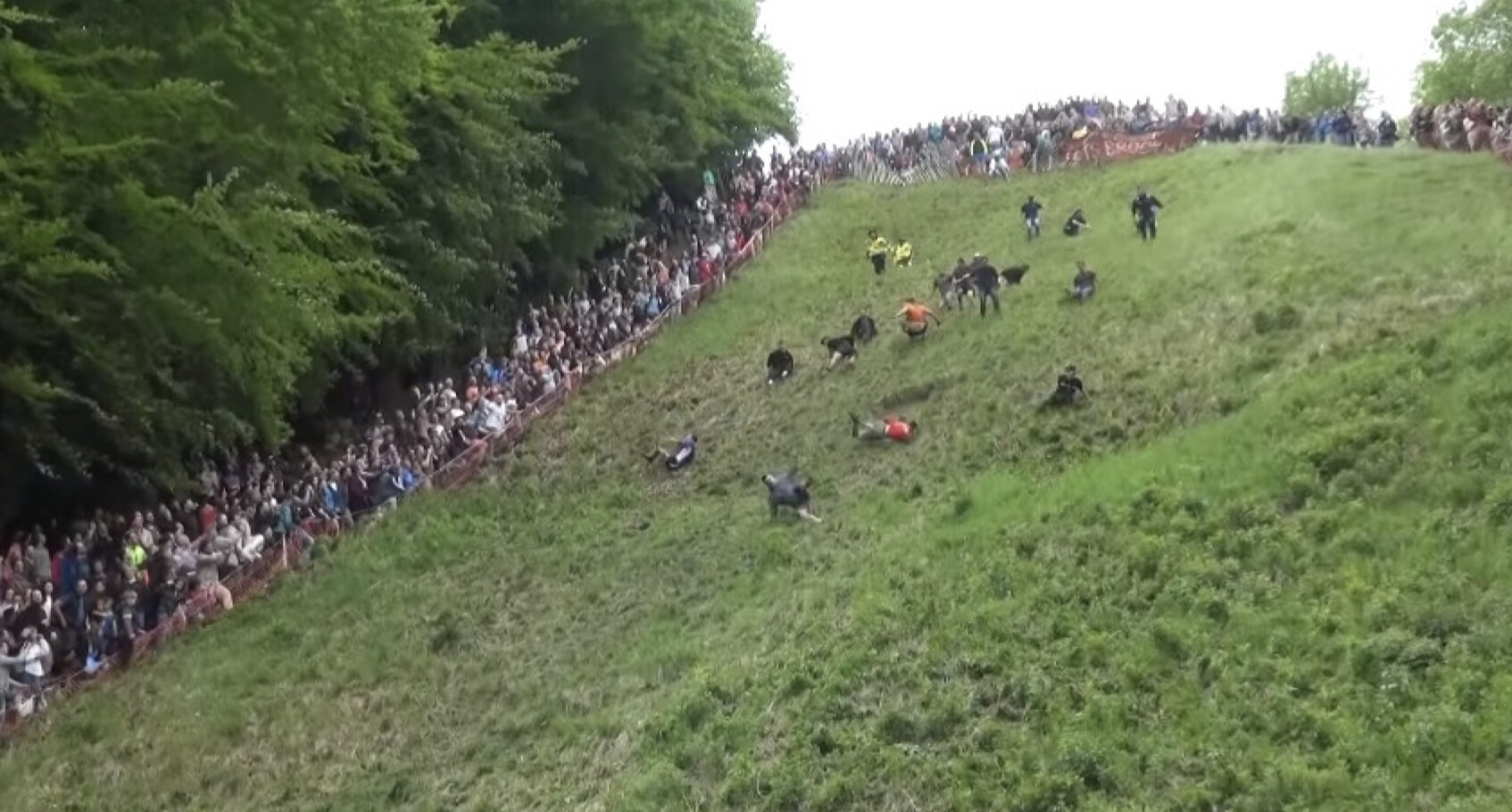
Members of the local rugby team wait at the bottom as “catchers” to help slow people down. Emergency medical workers are nearby in case of serious injuries, which there are many.

This year, there were three races, a men’s race, a women’s race, and a safe children’s race, which is an uphill run. Wet weather made the conditions slippery underfoot as many tripped and tumbled downhill.
The women’s race
The race was won by first-timer, Abby Lampey, who travelled to Gloucestershire from North Carolina to take part in the festivities. Lampey can be seen in the video above, throwing herself down the hill from the start.
The men’s race
The renowned cheese chasing champion, Chris Anderson, 34, won his 23rd cheese race in 15 years in what he said was his final event since becoming a dad during the pandemic.
Anderson has suffered numerous injuries in the name of cheese domination over the years, including bruised kidneys, a concussion and a broken ankle. It was he who set the tone for the competition at his first race when he fell while running and found that purposeful falling was a more reliable way to win than running.
(06/12/2022) ⚡AMPby Running magazine
Ultrarunners stranded in Birdsville, Australia after river floods
Dozens of ultramarathon runners have been stranded in the Australian township of Birdsville, Queensland after the Diamantina River flooded road access to the area. The runners were participating in the Simpson Desert Ultra, an annual multi-distance ultra event.
Prior to race start, race directors issued an announcement that the river had reached a high point, and they anticipated the river dropping over the next few days. Runners entering Birdsville for the start of the race had to wade through floodwaters, helped by local police.

While the race was a success, the river continued to rise, and runners now find themselves stranded in Birdsville. They have few options aside from waiting for the Diamintina river to abate.
Birdsville has flooded numerous times in the past. Race officials provided reassurance regarding contingency measures to gain access prior to the race in their statement:
“We anticipate the river height will drop over the next couple of days. As a community we have a long list of contingencies in place if it doesn’t drop fast enough to allow vehicles access by mid week; these include planes, boats and a tow truck.”
Races camp spots between #Birdsville and the #DiamantinaRiver now underwater from flooding. #flashbackto2016 pic.twitter.com/KBBO253VvH
— Birdsville Races (@birdsvilleraces) April 6, 2018
(06/12/2022) ⚡AMPby Running Magazine
Can a Pair of Running Shorts Be Worth $200?
If within your first minute on the Satisfy product page you don’t do take a second look at the prices, kudos. You’re a less judgmental (or far wealthier) person than me.
“Who are these people?!” was my main thought the first few times I surveyed the site. My question was two-fold. First, who are the people paying $236 for a pair of trail shorts, or $215 for a tie dye short-sleeve shirt, or $322 for a pair of tights, or $65 for a bandana, or…you get the idea. Second, who are the people making this 70s-fonts-meet-space-age-fabrics gear splattered with phrases like “running cult member” and “run away?”
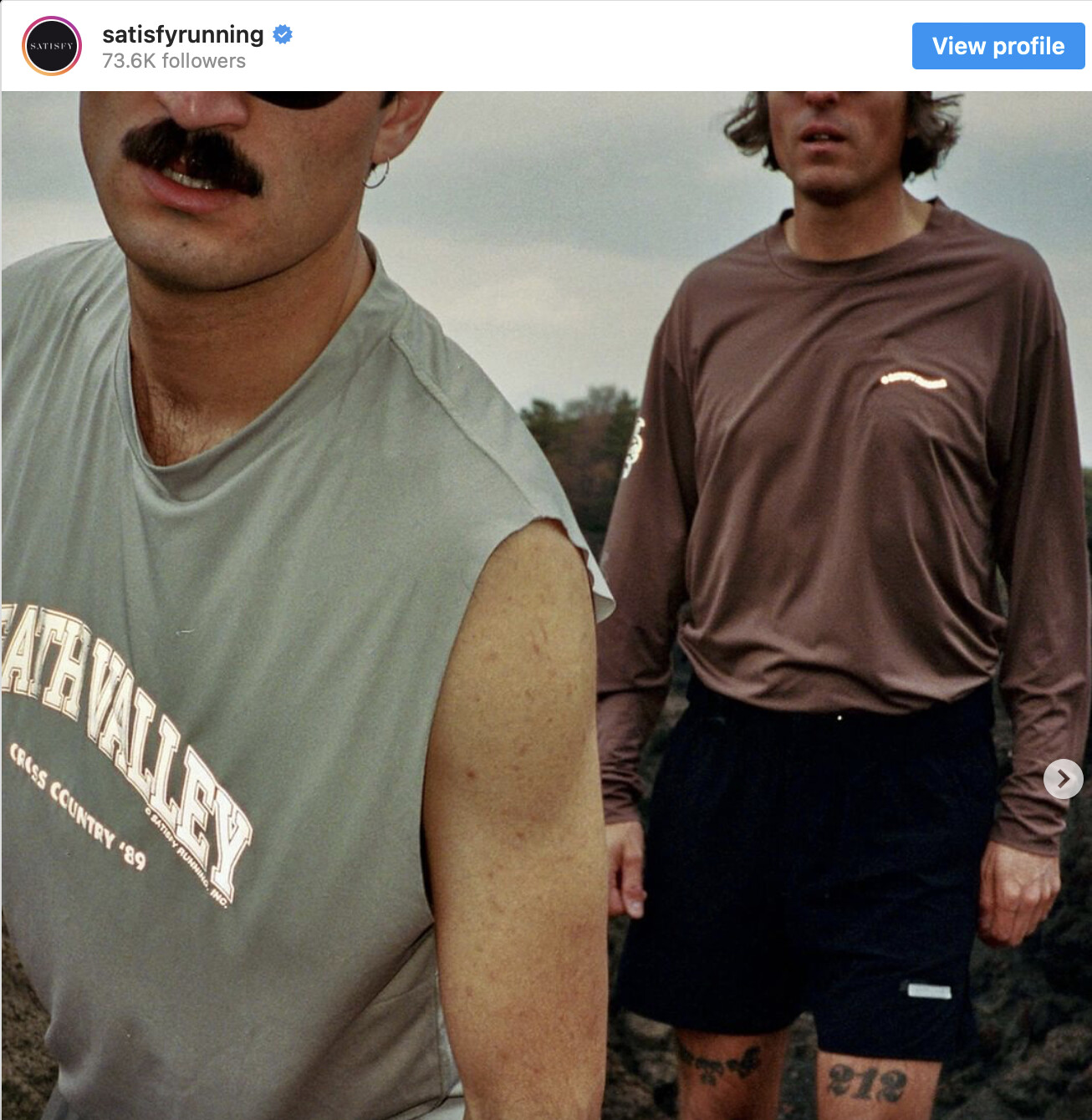
“I’m not obsessed with fashion,” Partouche says. “I’m obsessed with great products with a function.” Design, he says, “is always about solving problems—I want to run in the desert, I want to run in the mountains, what do I need? So we start with that story and we develop the product around the story.” Then, he continues, “we add cultural value, references that create a connection with the product, like a print, a tie dye, hand feel. It’s a balance of functionality and design. I like this image of a mix table, trying to push both knobs to the max without exploding the speaker. It’s a very romantic approach.” Indeed it is: “I want to squeeze in a few miles around the neighborhood before work” doesn’t strike quite the same chord.
Partouche’s vision of “cultural value” is both quite precise and hard to capture in a few words.
“My perception was not the spandex runner, it was running in the [19]60s, 70s,” he says. “No one else was really embracing this style of look and running. For me, running is like skateboarding. It’s a sport for rebels. I like this idea of bringing back running to its core values.”
Visually, think short shorts, bandanas, retro graphics, and occasional purposefully distressed tops. The latter come via Satisfy’s MothTech process, which incorporates small holes for ventilation. (Runner’s World did a collaboration with Satisfy last fall that incorporated a 70s-era version of the magazine’s name on MothTech tops.) A boxy, cold-weather top with elbow patches and a slight turtleneck I tested is unlikely to be mistaken for, say, Under Armour apparel. (My wife calls it my cosmonaut top.) Tops and bottoms come with the care tag on the outside of the garment, to eliminate the possibility of chafing. The tags can be detached, leaving a thin remainder strip visible on the front.
I shared the Satisfy site with a running friend who has taught design. They responded with a list of phrases like “if running clothes were a trucker hat” and “engineered authenticity.” They also wrote, “This branding strikes me as a winking parody of indifference, offering a uniform anyone can purchase that’s designed to look like you give no shits about fashion when training and you are a serious macho runner like the runners back in the day—but a big dumb logo patch that signals to your peers in the know that this is actually a running lifestyle brand.”
About those prices
Partouche says Satisfy’s potentially eye-popping prices can be explained by the company’s approach to fabrics and production. The brand’s technical fabrics might cost 20 euros per meter. “You can find some big brand shorts for [this price],” he says. “This is only for us the price of the fabric,” which he claims can be 20 times more expensive per meter than what’s used to make Nike shorts. “That’s why you can’t compare—it’s just not the same product,” Partouche says. When it doesn’t use technical fabrics, Satisfy uses natural ones such as merino wool and organic cotton, and recycled fabrics.
Gear made of fabrics sourced in Europe are also produced in Europe. “Seventy to 80 percent of our products are produced in Portugal, under very fair [labor] conditions,” Partouche says. “That’s one big difference.” The merino that Satisfy uses is woven in Japan, and then the gear is produced there to lessen its environmental impact.
Partouche says the brand’s approach to product lines is also inspired by good environmental practices. There’s an evergreen line that’s always in stock, and there are occasional drops, produced in limited quantities (about 20 percent of a typical evergreen production run). “The idea here it to sell out the drops and not overproduce,” Partouche says. “We don’t have this putting-products-on-sale approach, which makes the brand more sustainable.”
I told Partouche that I and many other runners are on board with paying more for high-quality gear that’s produced ethically and sustainably, but that I saw nothing on the Satisfy site that gives context to the prices.
“This is the most challenging part now, to explain better what we do,” he responded. “We are 70 percent online. When you go to a store and touch the fabric, you can understand. On the website, if you just see a black T-shirt, it’s hard to understand.”
One runner’s reaction
I also told Partouche that the Satisfy apparel I ran in was some of the best gear I’ve encountered since taking up running in 1979. And I meant it. The cosmonaut top ($201) was warm enough as a single layer down to about 20 degrees, yet also comfortable into the mid 40s. Its boxiness easily accommodated underlayers, but I never felt constrained when doing faster runs in it. The tights ($159) I tested were even better. They, too, worked for a surprisingly large temperature range, and were just the right mix of sleekness and give.
Of course, $200 tops and $160 tights better be excellent! Are they worth that much?
That depends on what you mean by “worth.” Anyone fortunate enough to have disposable income devotes some of that money to things others never would. I can’t believe how much my sisters spend on Major League Baseball tickets and Disney vacations. They would probably scoff at what I pay for a pound of coffee beans.
To continue the coffee analogy: It’s worth it to me to spend $20 for a pound of fair trade, organic, single-origin beans rather than $10 for a blend from Dunkin’. Beans that are $30 or more per pound are a different matter. I know the beans will be even better than what I usually buy, but not that much better. Maybe I’ll buy them as a gift or vacation splurge once or twice a year.
That’s where I’ve landed on Satisfy gear. Their merino wool socks are probably the most comfortable, best-functioning socks I’ve ever run in. Still, they cost $53 a pair. I can buy a pair of Darn Tough socks—also merino, also manufactured responsibly, and with a lifetime warranty—for around $25. For me, spending twice as much to get gear that’s perhaps 12 percent better isn’t worth it. I’m also not someone who likes slogans or big brand names on his clothes.
But that’s just me. Satisfy has an incredibly devoted Instagram following, and has now been in business long enough to counter kneejerk they’ll-never-make-it predictions.
“Our approach to product design and craft is simply different from the rest, and I think that’s what makes us stand out,” Partouche says. “Today, our challenge is getting our product in people’s hands, because I’m convinced that when someone feels the textures of our fabric technologies, sees all the details that we inject into our design, they understand why we’re priced at where we are.”
I mean, I know I’m just a middle-aged guy sitting at home in Maine. But is there really a massive Venn diagram overlap of adventure runner, disposable income, and punk/chillbro/psychedelic/hippie aesthetic? Did I miss where, per the Satisfy site, the best way to explain the recovery portion of a track workout is, “really take advantage of the 60 sec rest to get SO chill until the next rep”? I decided to find out.
Executive summary: The clothes are excellent, the prices aren’t necessarily outrageous once you consider all the factors, the brand’s founder is a passionate runner with an admirable DIY streak, and running is big enough to accommodate many approaches.
But I doubt I’ll ever buy a piece of Satisfy gear.
Birth of a brand
Satisfy is inseparable from its founder, Brice Partouche. Now 45, Partouche started running in his mid-30s and was immediately hooked. “I got high when I ran,” he says. “I was lucky enough to experience this at an early stage, which is why I kept going back to it.” His love for the life-changing magic of lacing up is palpable. He says things like, “I found running in my mid-30s, or running found me” and, “This is a dream of the brand—everyone should experience the high.”
What Partouche didn’t like about running was the clothing. “Most of the brands, the products are kind of cheap,” he says. “To me, the hand feel, the touch of the fabric is important.” He was also dissatisfied with the functionality of things like key pockets and phone storage in the gear he ran in; the distractions interrupted his sense of flow.
As a teen skateboarder, Partouche started a T-shirt brand. He later dropped out of medical school and founded a denim brand. A drummer, Partouche grew up listening to and playing punk rock. “These activities have a huge cultural value attached to them,” he says. “When I jumped into running, I couldn’t find any brand that supported this idea of running alone and running away from things.” Drawing on skateboarding’s and punk’s ethos, Partouche says, “If it doesn’t exist, you just do it yourself. I wanted to create product that will allow the high. I really believe that part of this could be achieved with the product you’re wearing.”
He spent several months developing prototypes. The first sales occurred in 2016. Headquartered in Paris, Satisfy now has 17 staff members. According to Partouche, North America makes up half of his market. (“France is 1 percent of the business,” he says a little ruefully.) Sales are almost entirely online, although you can find Satisfy gear in a few U.S. running shops like Renegade Running in Oakland, California, and The Loop in Austin, Texas. Partouche calls these “contemporary, new running stores with an experience.”
(06/11/2022) ⚡AMPby Runner’s World
Olympic marathon champion Peres Jepchirchir said she could target the London, Berlin or Chicago marathons for a world record attempt next year
The 28-year-old Kenyan set the sport ablaze when she won the New York City Marathon just 13 weeks after claiming gold in Tokyo, the first athlete to win the Olympic marathon and the five-borough race in the same year.
She picked up her second major title five months later in Boston in a thrilling sprint finish, confirming her among the most dominant marathon runners of all time.
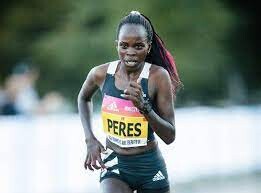
Jepchirchir, who wants to be the first woman to successfully defend her Olympic title in 2024, said she has even loftier goals in mind.
“I still have a mission to go – I still need to run to attempt records in marathon,” she told Reuters on Friday, a day ahead of competing in the 50th running of the New York Mini 10K.

“London is a faster course, even Berlin, Chicago is a faster course… Those are the races that maybe I can attempt.”
Jepchirchir produced the fifth all-time fastest marathon by a woman in December 2020, winning the Valencia Marathon in 2:17:16, and believes she’s “not far” from breaking compatriot Brigid Kosgei’s record 2:14.04 set in 2019.
“I’m feeling good – I’m so glad, I’m so happy for my improvement in my career,” she said.
(06/11/2022) ⚡AMPby Pritha Sarkar
Porta-potties stolen at New Zealand marathon
On June 5, thousands of dollars in porta-potties were stolen from the inaugural Selwyn Marathon held in Christchurch, New Zealand. The race organizers reported several portable toilet rentals were stolen off the course after the race took place.
According to the local paper Star News, the toilets were all accounted for on the course during the race and seemed to be stolen after the race concluded. “Hosting races costs thousands and thousands of dollars,” says race director John Moore. “When you have to turn around and pay thousands of dollars for stolen equipment, it’s ridiculous.”

The grey porta-potties were stolen off Old Tai Tapu Road, located off the Akaroa Highway, just outside Christchurch. Race organizers have not located the porta-potties or any suspects.
“It’s straight-up theft,” Moore said to Star News. “Whether it is a contractor who wants a toilet in their yard or thinks oh they won’t miss it or think its a joke, but it’s not a joke.”
The marathon course was run on a two-loop course of 21.1 km, starting and finishing at the Selwyn Events Centre.
The portable toilets weren’t the only things stolen; four 30 km to 50 km speed signs, four stopsign paddles, as well as numerous kilometre markers and traffic cones also went missing. The total value of the missing gear reported to police is about $4,000.
(06/11/2022) ⚡AMPby Running Magazine
Strava Is Now More Trail Friendly. Here's How They Did It.
This week, Strava, the world's leading social platform for athletes sharing data and experiences, announced they will be adding 3D maps of completed activities, "Trail Run" as one of several new activity options, and other exciting updates that benefit dirt-loving mountain types.
Long overdue, right? We're so excited.
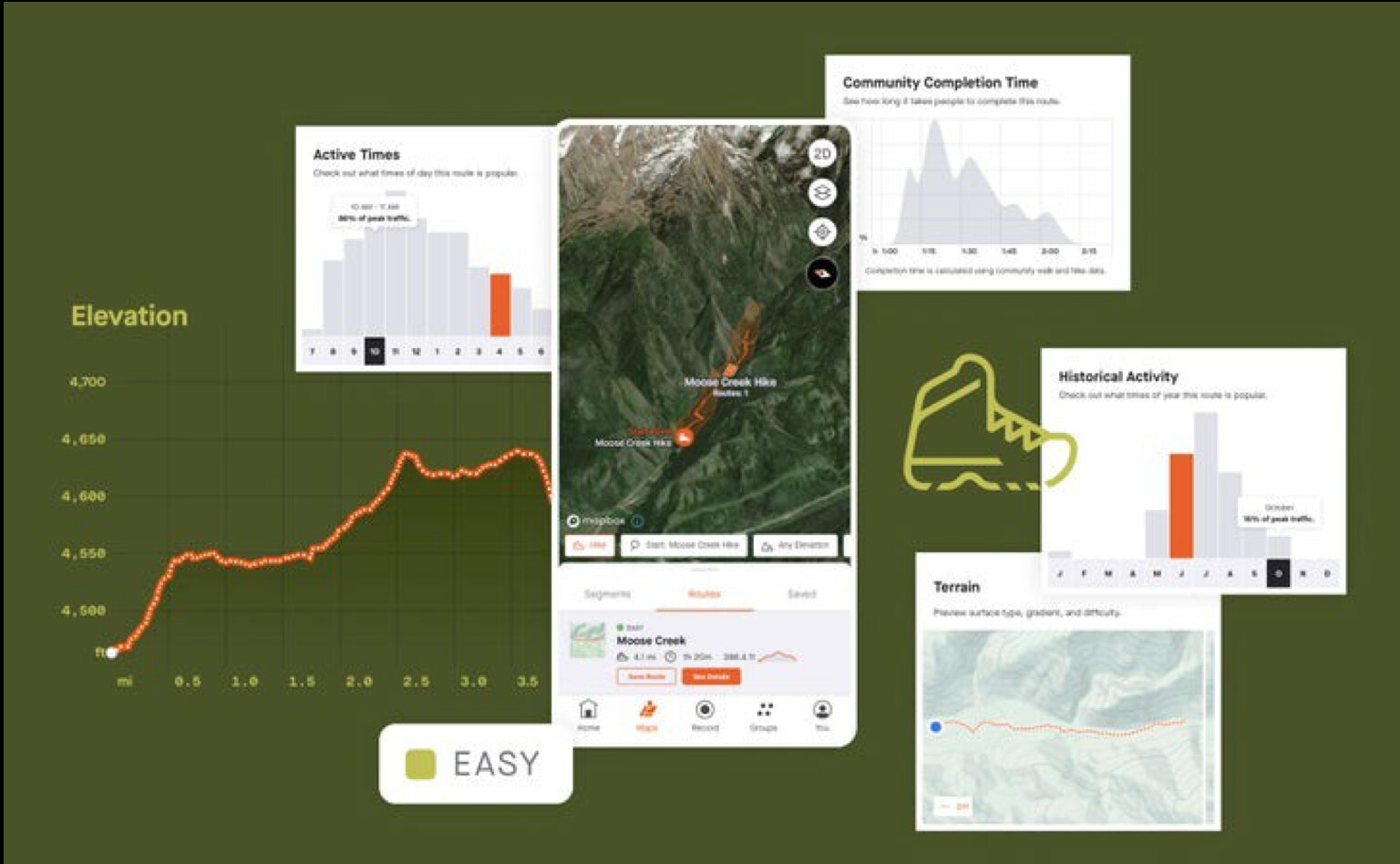
Strava announced new off-road interfaces to support "high-growth trail sports," which include trail running, mountain biking, and hiking, activities that are growing twice as fast as other Strava activities like road running and cycling.
"We have been seeing off-the-charts growth of trail sports over the past several years, outpacing even growth of road running and riding," said Michael Horvath, CEO and co-founder of Strava.
"Our teams are thrilled to be meeting athletes where they are with this release to fuel their joy of exploration." In addition to Trail Run as an Activity option, you will also now see other dirt-loving sports like Gravel Ride, Mountain Bike, and e-Mountain Bike.
Another development specifically geared toward trail and mountain runners is Strava's new offering of Trail Routes, which will highlight activity-specific trail networks and trailheads, with varying distances and elevations. Nuanced details for the routes will include difficulty ratings, Community Completion Times, and historical trends for best times of the year and time of day to run a specific route. Routes will now be available to download for offline use, too. And finally, for subscribers, Strava has introduced 3D maps for a more textured activity log.
With Strava's growth-7 billion activity uploads since its founding in 2009, 2.5 billion in the last 18 months-all of these upgrades offer a significant boost to trail-loving athletes everywhere as we seek to better explore, share activities, minimize trail impact, and build community.
(06/11/2022) ⚡AMPby Trail Runner Magazine
Runner's Guide To Vitamin D
It's is easy to assume you get enough vitamin D naturally-you eat chocolate ice cream like a champ and frolic in the mountains, spending significant time in the sunshine. But then a routine blood test shows you have low vitamin D.
You turn to Google and realize Rocky Road has zero percent of the recommended daily value of vitamin D. And dermatologist-approved sun protection like long-sleeved shirts and SPF-50 sunscreen limits your chance of absorbing it from sun exposure.
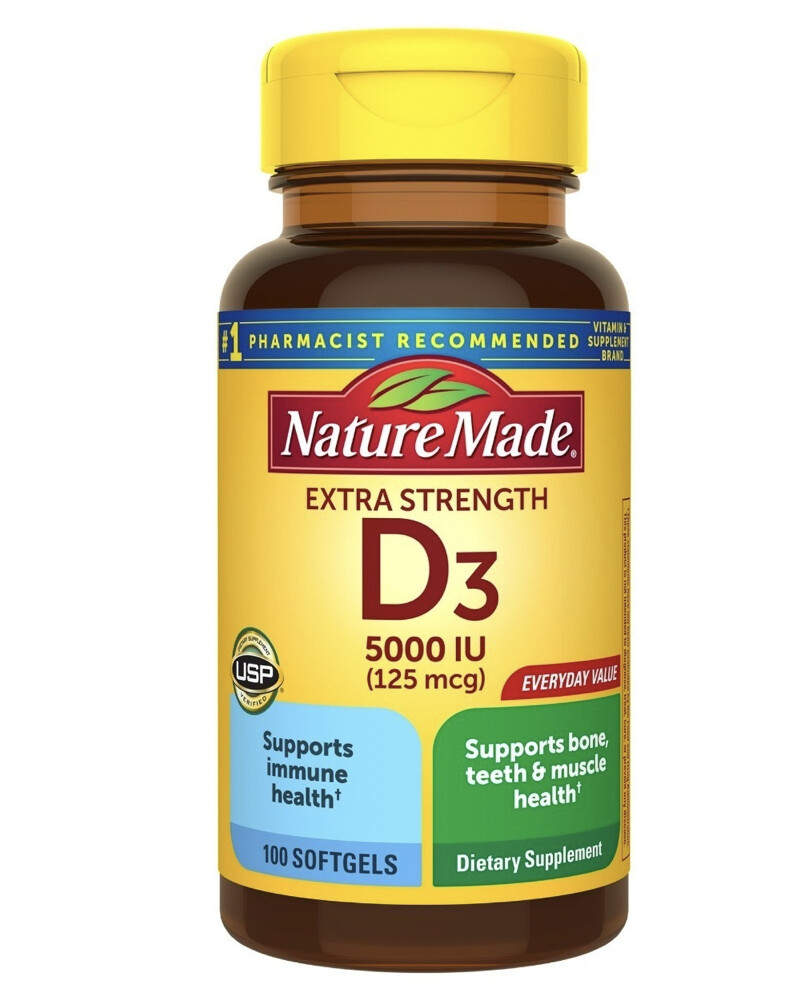
It's not unimportant. Research shows that vitamin D deficiency plays a role in stress injuries, and may contribute to decreased performance and impaired immune function.
The Science of Vitamin D
Vitamin D is a fat-soluble vitamin that can be obtained from food, supplements and sun exposure. The liver and kidneys help convert the vitamin to its active form, which is most known for its regulation of calcium and promotion of bone mineralization. However, vitamin D also influences cell growth and neuromuscular and immune function. It could even have some influence on cancer rates.
Medical experts differ in their recommendations for adequate vitamin D levels. The U.S. Endocrine Society considers insufficiency to be a blood level less than 30 ng/mL, while many sports-medicine doctors recommend that athletes have levels above 50 ng/mL. If you are concerned about your vitamin D level, ask your doctor to perform a blood test.
So how can Vitamin D aid in our running success?Bone Strength
As trail runners, we demand a lot from our bones. On a downhill, impact forces can increase by over 50 percent. Multiply that by the many miles of a long training run or race and you can understand the stress facing our feet, shins and femurs.
Several scientific studies have linked sub-par vitamin D levels and bone-stress injuries. One study published by the American College of Foot and Ankle Surgeons followed 53 patients with stress fractures from 2011 through 2014 and found that 83 percent of these patients had vitamin D levels below 40 ng/mL and 53 percent had levels below 30 ng/mL.
Athletic Performance
We all strive to run faster (or to have better adventures). Vitamin D could play a role in improving performance, though its adventure-boosting power is subject to debate. While vitamin D deficiency can cause muscle weakness and pain, experts in the field continue to debate the role of supplementation and athletic performance in individuals with levels greater than 30 ng/mL.Immune Function
While a well-timed snot rocket can be a source of laughs on a group training run, it is best when your runny nose is less active than your running legs. Several studies have found a link between vitamin D deficiency and autoimmune disorders such as multiple sclerosis, but the association between the vitamin and upper-respiratory infections is still equivocal.
The bottom line? Vitamin D clearly prevents bone-stress injuries. According to some debated studies (and anecdotes from runners), it could influence direct aspects of athletic performance as well. Trail runners should focus on a lifestyle that promotes healthy vitamin D levels for strong bones. And, if experts reach a consensus on the other benefits, it will be a nice bonus.
The recommended dietary allowance set by the Institute of Medicine (IOM) for vitamin D is 600 IU (15 micrograms) per day for individuals younger than 70 years old and 800 IU (20 micrograms) per day for individuals 70 and older. There is evidence that 600 to 800 IU per day may not be sufficient for optimal bone health in the athlete population. Some experts recommend that athletes obtain 2,000 to 5,000 IU a day from all vitamin D sources.
The IOM states that the upper limit of vitamin D intake is 4,000 IU (100 micrograms) per day, while the Endocrine Society states that the upper limit is 10,000 IU (250 micrograms) per day.
Chocolate Milk and Other Food Sources
There are very few food sources that contain natural vitamin D. Fatty fish such as salmon, swordfish, trout and mackerel contain it, as do egg yolks and mushrooms. Those on a budget may want to consider canned tuna.
In the American diet, the largest source of vitamin D comes from fortified foods like milk (including soy and almond milk), orange juice and many breakfast cereals.
Sun Exposure
Exposing your skin to the sun's UVB rays is considered one of the best ways to obtain natural vitamin D. It is generally agreed that 15 minutes of direct sun exposure for lighter-skinned individuals and 30 minutes for darker-skinned individuals can produce 1,000 IU of vitamin D.
However, several variables influence the amount of UVB rays that reach our skin, including the season, time of day, cloud cover and location.
Supplements
Vitamin D supplements come in two forms, vitamin D2 (ergocalciferol) and vitamin D3 (cholecalciferol). Research has shown that D3 is the more potent form and is better absorbed and utilized than D2. Supplements come in a variety of forms, including pills, liquid drops and chocolate chews.
Use caution with supplements, as vitamin D toxicity can cause decreased appetite, nausea, vomiting and frequent urination.
(06/11/2022) ⚡AMPby Trail Runner Magazine
2022 Lewa Safari Marathon to be held June 25
After running virtually in the last two years, the 2022 Lewa Safari Marathon will be held physically at the expansive Lewa Wildlife Conservancy June 25.
The Lewa Wildlife Conservancy, Tusk, Safaricom PLC and Huawei Technologies (Kenya) Co Ltd. announced on Tuesday during the launch.
For 23 years, the marathon held on Lewa Wildlife Conservancy, a UNESCO world heritage site and co-organised by wildlife conservation charity Tusk, has allowed participants from all over the globe to compete in an internationally acclaimed annual event whilst running through one of Africa’s most breath-taking wildlife conservancies.

Regarded as one of the toughest marathons in the world, runners of all abilities have taken part – from elite professionals like Marathon World Record Holder Eliud Kipchoge to amateur runners and walkers.
The marathon has also been a vehicle for the advancement of education, healthcare and conservation efforts in Kenya, raising above Ksh982.3 million (USD 8,600,000) for these causes since the year 2000.
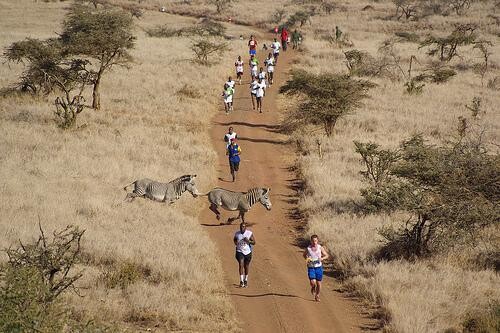
Speaking at the marathon launch, Mike Watson, CEO of the Lewa Wildlife Conservancy said: “While still providing an exciting and exhilarating marathon experience, the Lewa Safari Marathon 2022 aims to be the most environmentally friendly event Lewa has hosted to date.”
“This drive is inspired by the urgent need to reduce our carbon footprint, which aligns with our ethos and standards as we strive to be a model for biodiversity and ecosystem preservation.”
Charlie Mayhew, CEO of Tusk shared, “It’s a joy to be able to bring this one-of-a-kind event back to Kenya. The Lewa Safari Marathon has a 20-year legacy of drawing runners from around the world to raise significant funds for a wide range of conservation, education and community initiatives across Kenya.’
“We are immensely grateful to Safaricom and Huawei once again for their generous sponsorship of the marathon, as well as to Kenya Breweries Limited and Tetra Pak Ltd for their support.”
As lead co-sponsors, Safaricom and Huawei have continued to partner to support the marathon in its evolution. This year, other event sponsors will include Kenya Breweries Limited as well as Tetra Pak Ltd.
(06/10/2022) ⚡AMPSafaricom Lewa Marathon
The first and most distinctive is that it is run on a wildlife conservancy, which is also a UNESCO world heritage site. The Lewa Wildlife Conservancy is home to a number of endangered and threatened species- and also a catalyst for community development for its neighboring communities. For the past 17 years, funds raised from the marathon have gone...
more...Up to 6,000 runners from the Czech Republic and abroad are expected at the start of the Mattoni Olomouc Half Marathon
Sports fans and runners will enjoy Moravia. The biggest out-of-Prague race will take them to Smetanovy sady in Olomouc – a beautiful park that is always full of spectators.
The race will start on Saturday, June 18.
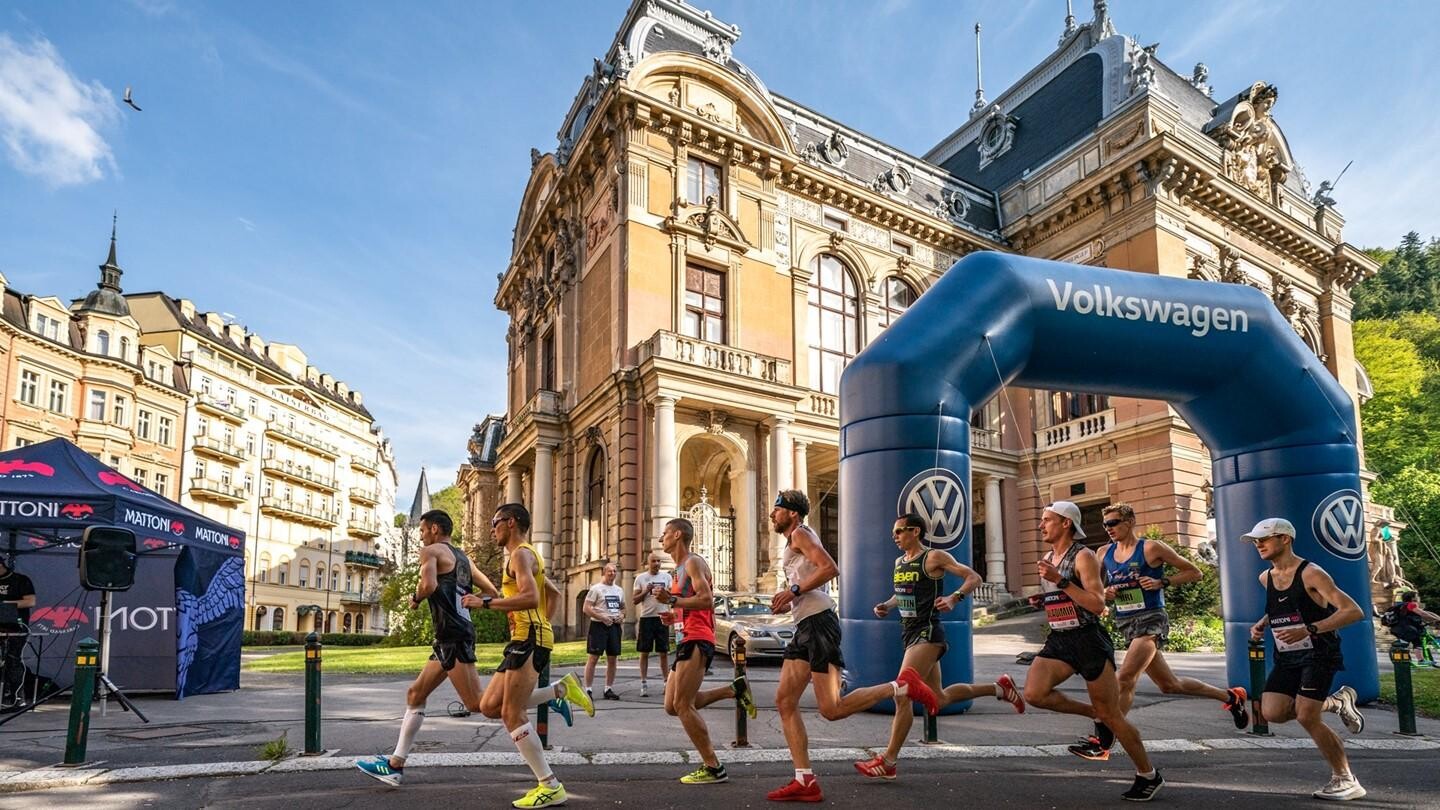
One of the most popular race starts at 7 p.m. from Horní náměstí. The event is a celebration of a healthy lifestyle and a great atmosphere.
“We are always happy to come back to Olomouc, which is part of the historical region of Czech Silesia. Olomouc has a reputation as a race where nothing is impossible and every year brings surprises, especially when it comes to situations where an almost unknown athlete beats far more famous running colleagues,” said Project manager Run Czech Igor Murko.

Mattoni Olomouc Half Marathon has a five-star European Athletics Certificate which guarantees high European standards and qualities. This is also the reason why the race was several times voted the favorite by the runners.
Up to 6,000 runners from the Czech Republic and abroad are expected at the start of the race.
The event offers more categories. In addition to the half marathon, a 2Run is prepared for runners who do not yet feel completely prepared for the whole race.
The relay race is an ideal alternative for team runners. Of course, the traditional dm family run which will start at 5 p.m, is prepared for all family members.
The undemanding 3,5 km long course in the center of Olomouc is really suitable for everybody.
(06/10/2022) ⚡AMPMattoni Olomouc Half Marathon
The annual Mattoni Olomouc Half Marathon takes place in the ancient capital of Moravia. More than 6,000 runners wend their way past Baroque architecture. An experience matched only by the warmth of the welcome runners receive here. Come to Olomouc and Enjoy the sensational atmosphere of running through a charming Baroque city in the heart of Moravia which is one...
more...Five tips for running during allergy season, Enjoy running this summer without sneezing
Temperatures are warming up, flowers are blooming, and allergy season is in full swing. If you suffer from seasonal allergies, you are familiar with the struggle of fitting in regular training while battling a stuffy nose and congested head. Try these suggestions to minimize your allergies and get you out the door in your shorts and running shoes.
Find the right time of day

Both pollen counts and air pollutant indices rise during the day and fall during the night. Running in the very early morning or later in the evening is the best way to avoid those pesky allergens. High pollen counts also trigger exercise-induced asthma, so avoiding those mid-day runs can be critical for easy breathing.
Save the intervals for allergy-free days
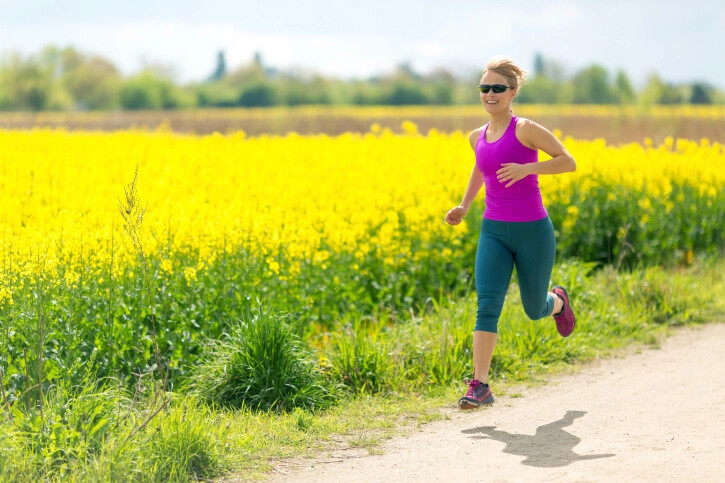
High-intensity workouts that involve breathing hard can exacerbate allergy symptoms. Save your speed workouts for the treadmill or indoor track during allergy season, or plan them for cooler or rainy days. Easy runs, or even a fast walk, will still enable you to get outside and move your body without triggering an allergy attack.
Keep an eye on the weather
Wind and dust will contribute to allergy symptoms; heat can also make them worse. Studies show thunderstorms also concentrate allergens in the air. Running immediately after a thunderstorm or rain is ideal when the air is clear. All runners know how hard it can be to predict the weather in North America but using the weather app and knowing what to avoid can be useful.
Take preventative measures
If you normally take an antihistamine to treat your allergies, taking it pre-run can be effective in keeping symptoms at ease. Similarly, if you have exercise-induced asthma and use an inhaler, check with your doctor to see if you are safe to use it before your workout.
Rinse pollen away
Taking a shower right after running can get rid of any lingering pollen on your hair and skin. Throwing your clothes into the laundry after a run will also keep them free from allergens. With a little extra effort, you should be able to enjoy the sunshine and warmer weather while keeping those sniffles at bay.
(06/10/2022) ⚡AMPby Keeley Milne
Three track Workouts to make you fast, switch up your road intervals with track workouts to improve your top-end speed
World-renowned coach Eric Orton says “I always tell my athletes, don’t confuse difficulty with failure.”
There’s no way around it; speed workouts can be a challenge for both the legs and the mind. Experts tell us that doing hard things is good for us, and if those “hard things” occur on the track, we will increase our racing speed and build mental resilience.

While most training runs are done at a recovery pace, it’s important to keep those fast-twitch muscles firing regularly. Here are three track workouts you can try out for speedwork. Depending on the distance you are training for, and the mileage you’re running, add or subtract intervals from your session.
The ladder workout

A ladder workout is a classic interval session that can be run on the track or the road. During the workout the intervals move up a ladder, increasing in distance or time with each one. After you’ve mastered the workout below, you can add a 1,600m interval at the top of your ladder, or slightly increase your speed for each rep (start at 5-10 seconds faster than 5K race pace).
Warm-up: 15 minutes easy, drills
Workout: At a 5K race pace, run 1 x 400 metres, 800m, 1,200m, 800m, 400m. Take 2-3 minutes rest between each interval, either jogging or walking slowly
Cool-down: 10 minutes easy
Mixed intervals
Warm-up: 15 minutes easy, drills
Workout: three reps of 400m at 10 to 15 seconds faster than 5K race pace, with two minutes rest between, one rep of 1,000m at 10 seconds faster than 5K race pace, with two minutes rest between, then four reps of 200m sprints with two minutes rest between each one
Cool-down: 10 minutes easy
Short and fast
Warm-up: 15 minutes easy, drills
Workout: 10 reps of 300m sprints, with 30 seconds rest between.
Cool-down: 10 minutes easy
Remember to follow your tough track session with an easy or recovery day, familiarize yourself with the rules of the track, and enjoy that post-hard-run glow.
(06/10/2022) ⚡AMPby Running Magazine
2022 Tacoma’s Sound to Narrows will celebrate 50 years
On Saturday, June 11, thousands of community members will turn out for the 50th annual Sound to Narrows run in Tacoma. This year’s event returns to Vassault Park after two years of being a virtual-only run and includes something for everyone, from the state’s oldest 12K run for all ages to a 20-yard diaper dash for kids.
“For 50 years, Sound to Narrows has been a treasured community event that MultiCare has been proud to support,” said Florence Chang, president of MultiCare. “Being able to celebrate this milestone anniversary with an in-person event makes this year extra special, and so many of us at MultiCare — including myself — are looking forward to being there on race day.”

All proceeds from Sound to Narrows will benefit MultiCare Academy for Students in Healthcare (M.A.S.H.) Camp. Formerly known as Nurse Camp, this free, five-day camp introduces local high school students to careers in health care. Students join medical professionals from various disciplines for a first-hand look at the multifaceted world of health care.
Registration starts at $45 for adults and $10 for children participating in the in-person 12K or 5K, and includes a collectable 50th anniversary t-shirt, runner’s bib and Sound to Narrows medal. Entry for students participating in the Fit for Sound to Narrows 2K is $5. There will be a virtual option again this year, for those who want to participate but don’t feel ready for a large, in-person event. The registration fee for the virtual run is $30 and includes bib number, t-shirt and finisher medal.
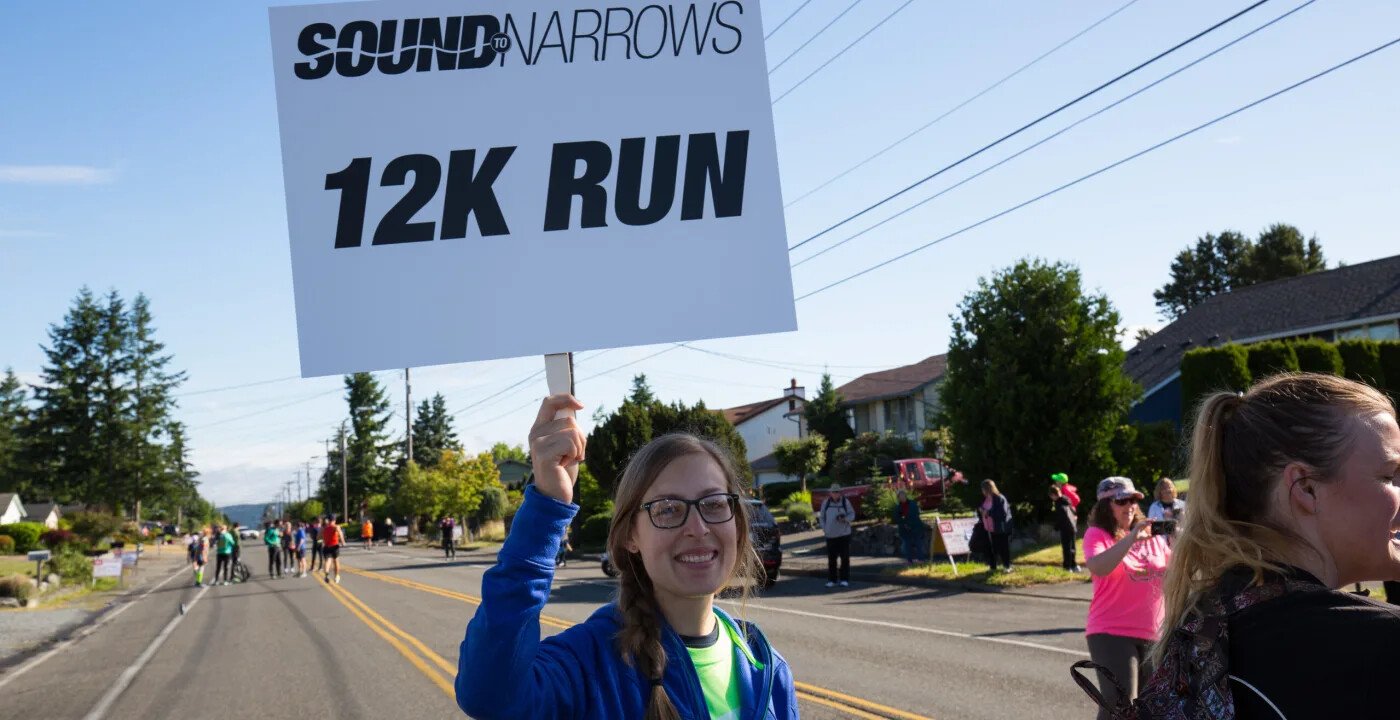
Check-in starts at 6:30 a.m. at North Vassault and 37th Street in Tacoma, with rolling start times for each event beginning with the 12K walk at 7:30 a.m. The awards ceremony will take place at 9:45 a.m. Runners participating in the event virtually will not be eligible for awards.
Whether it’s the signature 12K route with challenging hills and spectacular water views or the fast and flatter 5k route, Sound to Narrows aims to make physical fitness inclusive for the greater Puget Sound community.
Sound to Narrows is sponsored by Pacific Source Health Plans, TRA Medical Imaging, Olympic Sports & Spine, Tacoma Rainiers, South Sound Running and Tacoma Public Utilities. For more information and to register, visit soundtonarrows.org.
(06/09/2022) ⚡AMPSound to Narrows
Washington State's Oldest 12k. The Sound Narrows is the South Sound's kick-off to summer. Choose from the state's oldest 12k, or our fast and challenging 5k routes. After your race, enjoy a slew of vendors, fun bands, and camaraderie with fellow participants. ...
more...46th annual Bellin Run brings back in-person event after 2 years of virtual races
After two years of being held virtually because of the COVID-19 pandemic, the 46th annual Bellin Run will return as an in-person event on Saturday while still offering a virtual option.
The 10-kilometer (6.2-mile) race, one of the largest in the nation, has been held on Green Bay's east side since 1977, attracting thousands of runners, walkers and wheelchair athletes each year.

“The whole mission of this event is in alignment with Bellin Health’s mission of getting people healthy," said assistant race director Linda Maxwell. "We know that being active is very important in being healthy, and that people need goals. So that’s why we do this event.”
With this mission in mind and knowing the excitement and motivation that an in-person race day brings, the Bellin Run organizers found it important to get people back out and together.
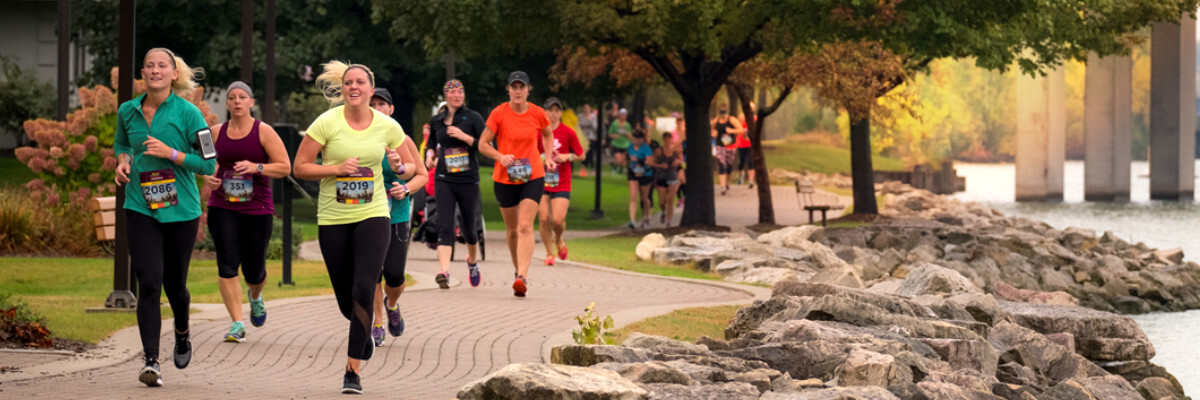
They still wanted to keep a virtual option, however, for people who may be out of town, busy during the race time, or not comfortable being in crowds yet.
In April 2020, the Bellin Run was converted to a virtual-only event amid the growing COVID-19 pandemic. Participants completed the race anytime and anywhere, submitting their results electronically. Despite hopes of returning to an in-person event in 2021, organizers determined that a virtual event was again the only safe option.
When the time came to decide the approach for this year's event, organizers were confident they could hold it safely in-person, especially because everything, including race packet pickup, takes place outside.
“Outdoor transmission continues to be extremely rare, and I feel great about where we are at as a community," said Dr. Bradley Burmeister, an emergency physician at Bellin Hospital. "I look forward to the return of the in-person Bellin Run and getting feet on the street in honor of heart health.”
As of Friday, the Brown County COVID-19 community level was low.
Around 6,000 participants have registered for this year's Bellin Run so far, 1,000 of whom are for the virtual option. Maxwell said they are expecting a couple thousand more registrations in the week leading up to the event.
These registration numbers are down from 2019, the last in-person race, which had more than 11,000 participants. According to Maxwell, this was expected, as people are out of their pre-pandemic habits and just starting to make their way back to the things they used to do.
This slow return to pre-pandemic habits is also reflected in volunteer registrations. More volunteers are still needed, especially on course corners to keep participants safe during the race.
(06/09/2022) ⚡AMPby Kelly Smiths
Bellin 10k Run
The Bellin Run, a 10K held annually in Green Bay, Wisconsin on the second Saturday in June, is one of the region’s premier sporting events and has grown to be one of the largest 10K races in the nation. The event was first held on June 12, 1977, and was known as the Bellin Heartwarming Run, to promote cardiovascular fitness....
more...What are the worst running habits?
In running, it’s easy to cut corners to get you closer to achieving your goal. Sometimes the stress of race day success can overwhelm you during training. Some habits are worse than others, but all bad habits can be a slippery slope to falling short of your objective. Here is our list of running habits you need to break.
Pushing too hard on recovery runs
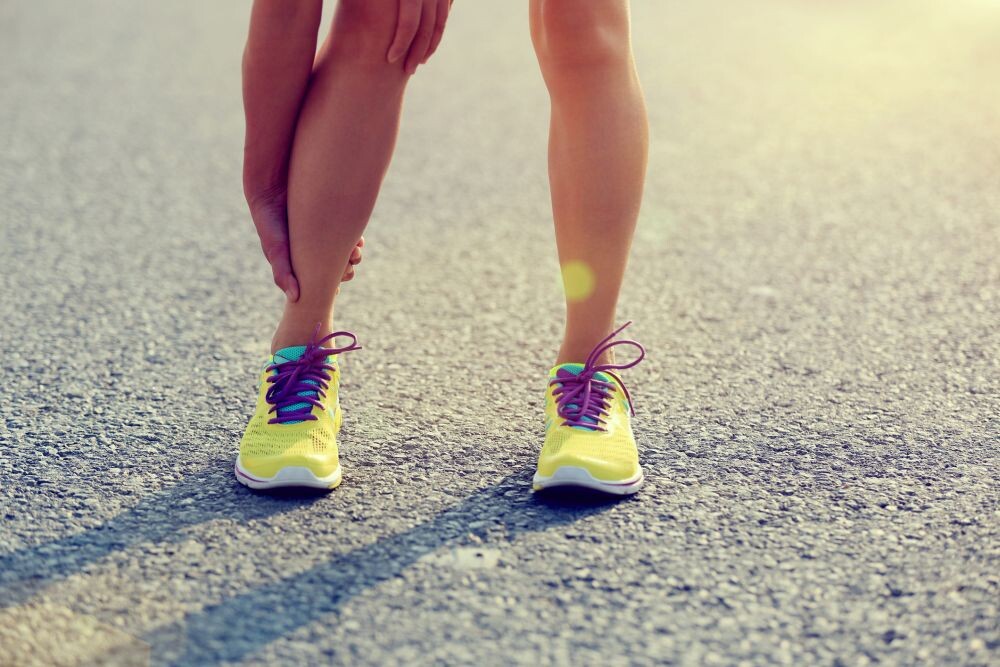
Your coach assigned a 40-minute recovery run and asked you to keep your heart rate under 140. Instead, you go out and see how much distance you can cover in 40 minutes. A recovery run shouldn’t be a time trial, and if you’re treating them this way, it can only lead to injury or fatigue.
Recovery runs are some of the most important days in your training schedule. They are there to allow your body to heal from harder days. Resist the urge to push the pace, as it will only damage your racing aspirations.
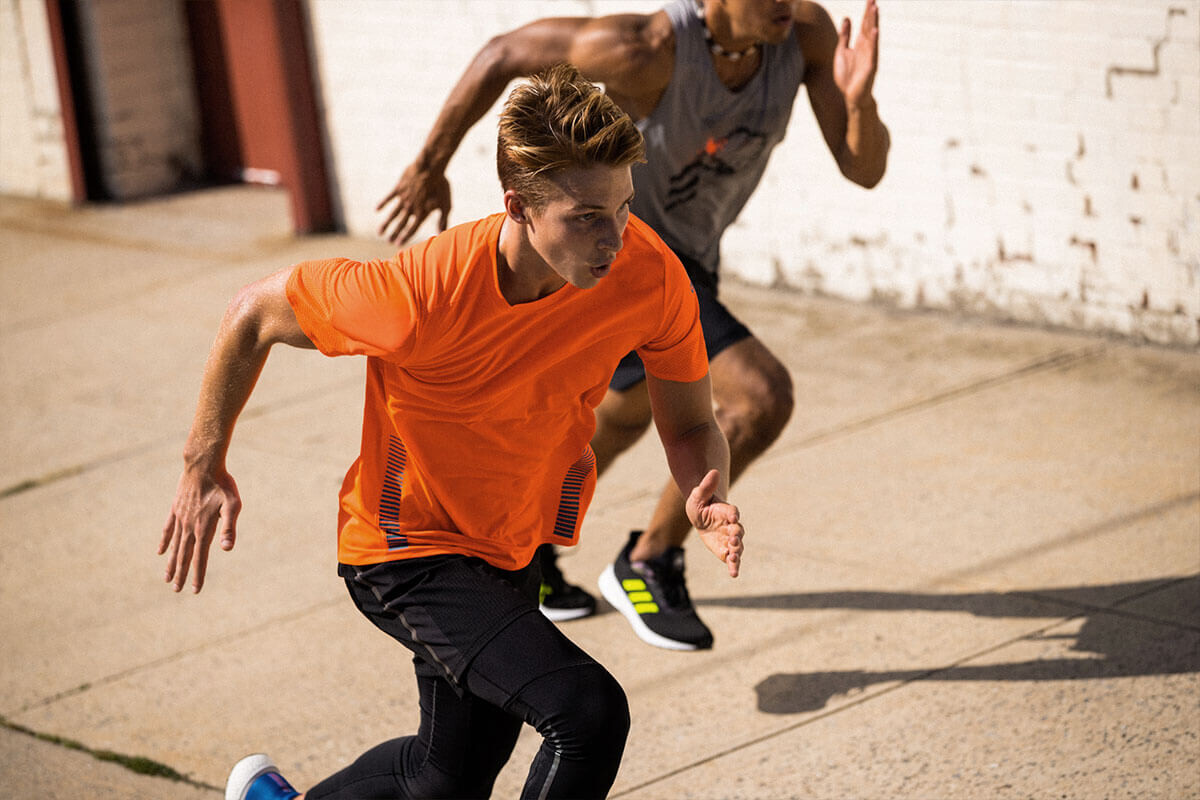
No warm-up, no activation
There have been a few scholarly publications on how a warm-up or static stretching may not be as beneficial as you think it is, but dynamic stretching has been proven as a great way to get your heart pumping before a run. Some examples of dynamic stretching are leg swings, butt kicks, high knees and arms swings. The purpose of these stretches is to replicate the running motion without the same intensity or stress to avoid injury.
Injured but still training (overtraining)
If you are suffering from any pain or discomfort, it’s better to rest than to make things worse. Missing one or two days of training may seem like the end of the world amidst a marathon build, but at the end of the day, it won’t do any harm to your training.
Cutting things short
Don’t take the easy way out in achieving your goal by cutting the course or cutting a workout short. You have to live with the repercussions knowing that you took the easy way out and some runners will judge you for it. The aged training philosophy of “you get out, what you put in” still has relevance in this sport.
Going out too fast
The most common bad habit in running is starting too fast and then tapering off. This is a mistake all runners have made from the professional to amateur level. Try to settle in the first few minutes of your race, then speed up if your body is feeling good later on. If you’ve got gas left in the tank near the end, push it!
Comparing yourself to others
No matter the setting, it’s easy to compare your training or speed to other runners on the same team or Strava. When the urge to compare grabs you, try and remember who you’re running for. The reason you run is for you, not for so and so.
(06/09/2022) ⚡AMPby Marley Dickinson
Meditation for runners
Sitting motionless in a room for an extended period of time might seem like an odd way to improve your running, but meditation is a tool used by some of the world’s best runners to take them to the next level.
Two-time Western States champion Timmy Olhsen uses meditation as a central tenant of his training. Two-time OCC champion Ruth Croft has gone on week-long silent meditation retreats.

Here are some ways to get started:
Why meditate?

There are a number of benefits for runners. Firstly, it can help you concentrate or to “stay present”. This is particularly useful if you have a specific split or pace in mind. Over the course of a 5km, 10km or even a marathon it can be easy for your mind to drift and for you to unwittingly slow down. But if you are “present”, you can focus on keeping your legs spinning.
Conversely, mediation can distract you. If you are battling through a low point on a 100km race, you can use meditation techniques honed at home to focus on your breathing rather than your ailing body. You can refocus to the moment and forget about what is to come and the negative thoughts circling in your head.
Meditation lowers anxiety in general. Being less stressed will help your training in general because you will find it easier to stick to a routine and waste less mental energy so you can push yourself during the session. It will also help you relax and sleep, so your body can recover in full.
Where to start?
It can be hard to know where to start. Do you just sit down with crossed legs and float away in your mind’s eye to distant peaks? There are loads of meditation apps for beginners and you can plug in and listen to instructions for short five-minute bursts and build from there.
(06/08/2022) ⚡AMPby Colorado Runner
2022 Valencia Marathon exhausts its 30,000 numbers six months before the event
The 42nd edition of the Trinidad Alfonso Valencia Marathon has exhausted its 30,000 bibs six months before the event, which will be held on December 4, according to the organization of the event in a statement this Wednesday.
It is the fourth consecutive time that the organization of the race, in charge of the SD Correcaminos and the Valencia City Council, exhausts the numbers to participate in the test. The first was in 2018, when 22,000 seats were put up for sale; the second in 2019, with 25,000, and the third in 2020, an edition that could not be carried out due to the pandemic, but which sold out three months after opening the 30,000 registrations for the race.
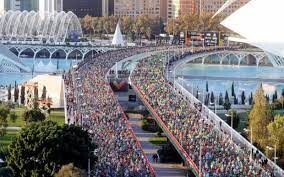
Of the 30,000 participants registered for this edition, 48 percent are foreigners, representing a total of 115 different nationalities. In addition, 28 percent are runners from the Valencian Community and 24 percent will arrive in Valencia from other Spanish regions.
In addition, 19 percent are women, which is why the number of female participation in the event continues to increase, both in percentage terms and globally, as the number of bib numbers available has also grown. Finally, more than 6,000 participants (21 percent) have chosen this test to debut at this distance.
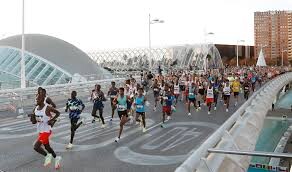
“This year we are back with everything and it makes us very happy to be able to say that there are no bib numbers left, because that shows that the runners continue to trust us”, explained the president of SD Correcaminos, Paco Borao.
For runners who still wish to participate in the test, a waiting list has been opened to meet these requests, which will be covered as athletes already registered request a withdrawal due to injury or by making use of the return insurance if they contracted it in your registration.
(06/08/2022) ⚡AMPby George Williams
VALENCIA TRINIDAD ALFONSO
The Trinidad Alfonso EDP Valencia Marathon is held annually in the historic city of Valencia which, with its entirely flat circuit and perfect November temperature, averaging between 12-17 degrees, represents the ideal setting for hosting such a long-distance sporting challenge. This, coupled with the most incomparable of settings, makes the Valencia Marathon, Valencia, one of the most important events in...
more...A simple tempo workout to add to any routine
Does the perfect running workout exist? Regardless of your end goal, most training programs involve a combination of easy runs and a mixture of speed-work, hill intervals, or longer runs (and maybe all three). Workouts will vary from runner to runner and depend on goals, but most training plans involve tempo runs of some kind.
The optimal amount of tempo work is a hotly debated topic, but we do know incorporating some form of tempo workout into your routine is beneficial. Make sure to follow any tempo run or interval session with an easy or rest day.
Here’s a tempo workout to add to almost any repertoire. David Roche, co-author (alongside his wife Megan Roche) of The Happy Runner, calls this tempo workout a good “bread and butter” addition to any running regime. Roche, a renowned athlete and coach, touts the benefits of maintaining lifelong running goals and positivity.
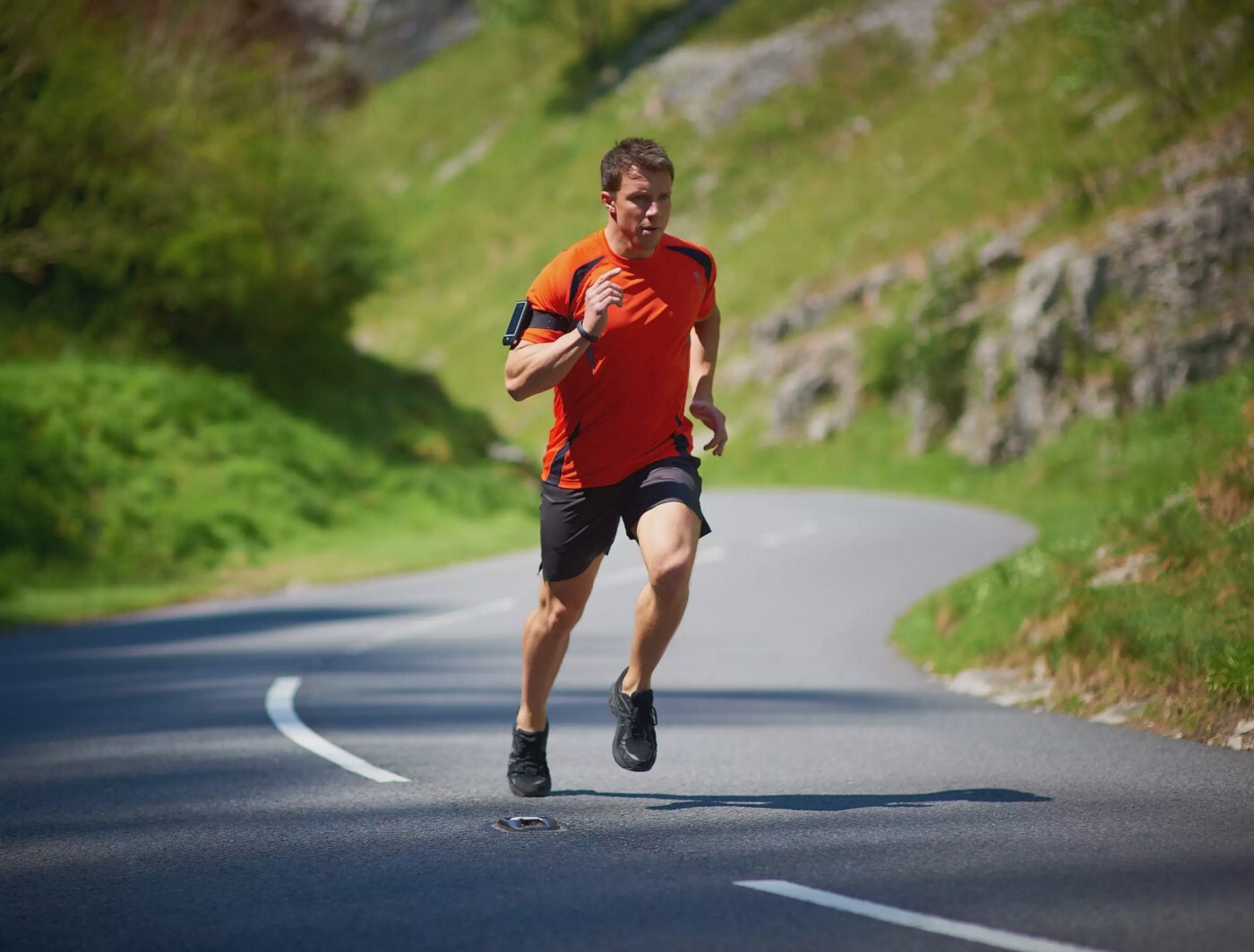
Warm-up
3-5 km easy, with drills like this warm-up demonstrated by Roche.

Workout
10 x 3 min at 10 km effort with 1 min easy recovery, running intervals as smoothly and consistently as possible.
Cool-down
3 km easy.
This tempo run can be done as a stand-alone, or with post-run strength exercises to finish off the legs.
A tempo pace should be challenging, but not so hard that you can’t speak. The intervals in this workout can be adjusted by upping the intensity to make a harder speed-day leg-burner, or done uphill if you’re preparing for a hilly race.
(06/08/2022) ⚡AMPby Keeley Milne
The oldest woman to complete 100 miles continues to set ultra records
82-year-old Erlinda Biondic of Aurora, Ont., spends most of her days’ trekking to Newmarket, Ont. Fairy Lake Park from her Aurora residence. Erlinda and her husband, George, have been ultrarunning for many years, completing popular treks along Ontario’s Bruce Trail, Camino de Santiago in Spain and the U.S. Appalachian Trail. Last month, Erlinda became the oldest woman to complete 50 miles, 100 miles and to break the six-day world record, covering 251 miles (403 km) in 144 hours at the 3 Days at the Fair ultra in Augusta, N.J.
Erlinda was confident and trained heading into the ultra. She was intending to break the world record for 48 hours and 6 days in the 80+ age group. She spent the pandemic training for this event in the hallway of her Aurora apartment. Then when restrictions diminished, she walked at the local golf course and on the trails around it.
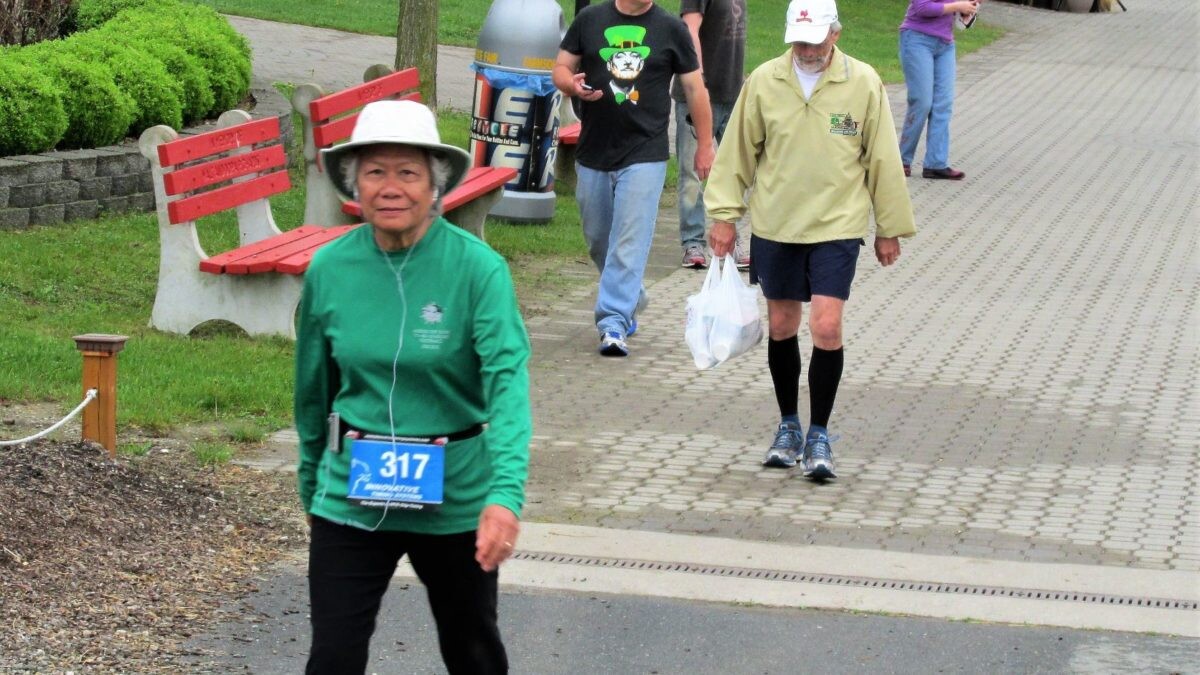
“No matter the weather, I try to get outside twice a day,” says Erlinda.
Besides leaving her apartment twice a day, she credits a lot of her fitness and strength to the yoga and boot camp instructors at the Aurora Seniors Centre. “We are constantly working on keeping my balance strong with core-focused exercises,” she says.
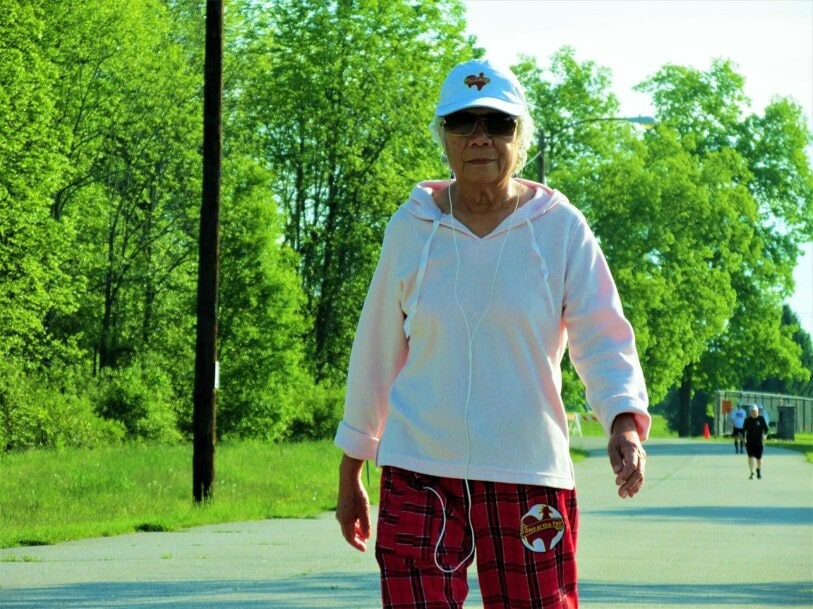
Erlinda has a strict diet during training. “I consume a lot of carbohydrates and add a vegetable to every meal,” she says. During the race, Erlinda and George pre-cook tuna, crumpets, eggs and ramen and carry them in ziplock bags while out on the course.
Each lap at the 3 Days at the Fair ultra is a one-mile loop circling the aid station. “The course is flat and great for runners to break records on,” says Erlinda, who has done this race on several occasions.
Days after covering 251 consecutive miles, the new six-day world record holder was back to training. “I luckily had no blisters or swelling during my six-day ultra,” Erlinda says. “George’s foot and quad massages help me recover.”
When she was asked about how she felt to be the oldest person to cover 100 miles, she began to tell me about the next races and records hopes to chase. In Sept., Erlinda and her husband will compete at the Race for the Ages, an age-graded eight-hour handicap race, where the oldest runners get a head start on the rest of the field.
As Erlinda gets older, she continues to push her physical barriers. She and her husband plan to hike the famous rim-to-rim in Grand Canyon National Park this month and participate in Ottawa’s Sri Chinmoy 24-hour ultra on July 23.
(06/08/2022) ⚡AMP
by Marley Dickinson
Man in tiger suit completes Everest marathon, this is the 20th marathon Goldstein has completed with the 33-pound plush tiger
The Everest Marathon is one of the most challenging marathons in the world; now imagine running it with a nine-foot tiger on your back.
British wildlife photographer and conservationist Paul Goldstein is not new to endurance adventures. He has completed 19 marathons and hiked up Mt. Kilimanjaro, an impressive resume for any athlete. Goldstein, or “Tiger Man” as he has fondly become known, has carried his plush tiger along with him on every trek.
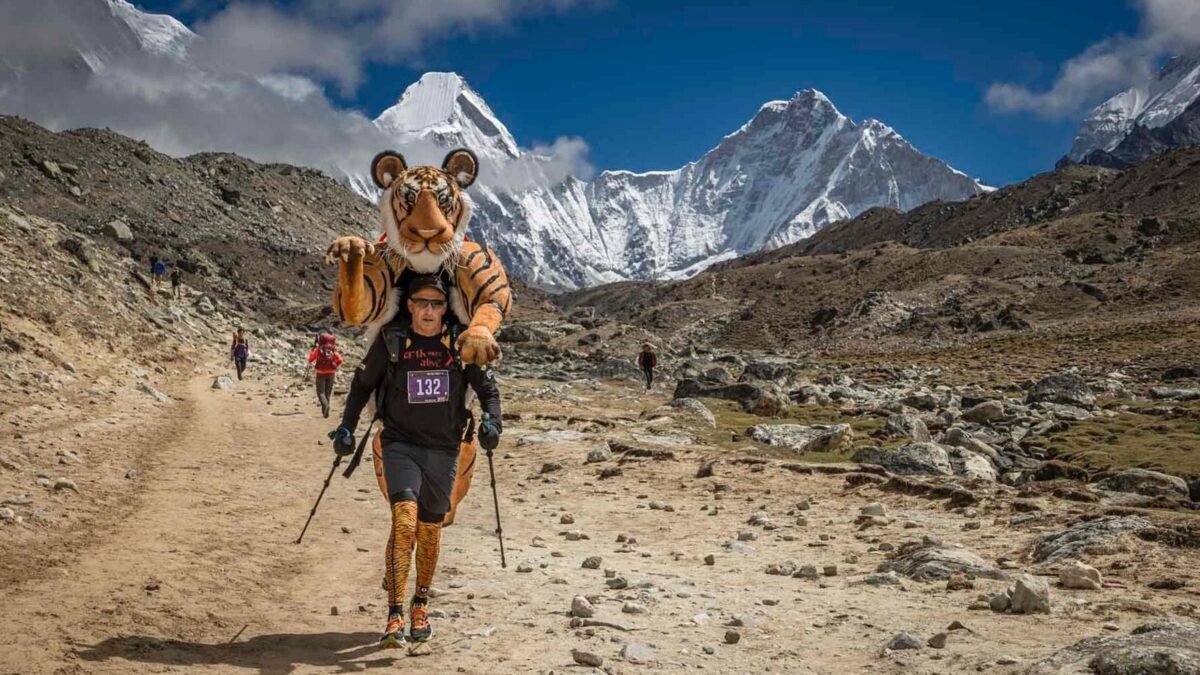
Goldstein (and his 33-pound plush tiger) hiked for 11 days to get to the start, located at Everest Base Camp. He endured extreme weather conditions, altitude sickness, food poisoning, and climbed over treacherous terrain, all before the Everest Marathon began. He called the experience “agony” and “the most miserable 12 hours I’ve had in my life.”
Goldstein’s aim is to raise money and awareness for Bengal tigers. Goldstein created Worth More Alive charity with this goal in mind. It is estimated that there are only 3000 Bengal tigers left in existence and they continue to be poached and have their organs harvested. Through his Everest run alone, Goldstein met his goal of raising over $150,000.

Despite the extreme weather conditions Goldstein faced on Everest, he explains that it pales in comparison to the suffering captured tigers endure.
This will be Goldstein’s last marathon with his tiger, “This was its 20th and last and fitting it should be the toughest challenge,” he says.
(06/07/2022) ⚡AMPby Running Magazine
Everest Marathon
The Everest Marathon is listed in the Guinness Book of Records as the highest marathon in the world. The starting line is at Gorak Shep 5184m (17,000 feet), close to Everest Base Camp in Nepal. The finish is at the Sherpa town of Namche Bazaar at 3446m (11,300 feet) and the course is 42 km (26.2 miles) over rough mountain...
more...126th Boston Marathon Raises $35.6 Million For Area Non-Profits
The Boston Athletic Association (B.A.A.) has announced that $35.6 million was raised for more than 200 non-profit organizations through this year’s 126th Boston Marathon on Monday, April 18. The B.A.A. Official Charity Program and the John Hancock Non-Profit Program have combined to raise more than $460 million since the charity program’s inception at the 1989 Boston Marathon.
The $35.6 million raised this year includes donations raised through the B.A.A.’s Official Charity Program, the John Hancock Non-Profit Program, and from other qualified and invitational runners. A total of 2,566 participants ran as fundraising athletes at the 126th Boston Marathon. Further details can be found on the Boston Marathon’s fundraising page through GivenGain.
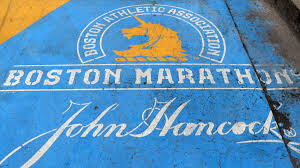
“The non-profit community across Greater Boston is resilient, and, as a non-profit itself, the B.A.A. takes great pride in being a catalyst for more than 200 charitable organizations to raise critical funds in support of their missions,” said Nicole Juri, the B.A.A.’s Director of Development. “The return to our full field size and traditional Patriots' Day date enabled our non-profit partners to raise even greater funds for a variety of meaningful causes.”
“It is outstanding to see the funds raised by this year’s Boston Marathon participants, all in support of non-profit organizations that are a driving force for our community and carry personal meaning for so many,” said Marianne Harrison, president and CEO of John Hancock. “We are committed to making lives better by empowering sustained health and well-being, and we are grateful to help bring that mission to life through the John Hancock Non-Profit Program. Thank you to everyone who worked so hard to make this year’s race so inspiring and impactful.”
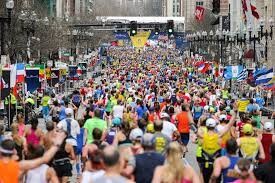
Earlier this year, the B.A.A. and John Hancock held the first-ever Boston Marathon Giving Day, which resulted in more than $1.1 million in donations over a 24-hour period to the 200 non-profit programs affiliated with the 126th Boston Marathon. Boston Marathon Giving Day was the second largest single day of donations to non-profits connected to the race, behind 2018 #GivingTuesday.
The B.A.A. annually provides non-profits associated with the B.A.A. Official Charity Program and John Hancock’s Non-Profit Program with invitational entries into the Boston Marathon. Each non-profit organization directly manages its own application process, athlete selection, and fundraising minimums, deadlines, and requirements.
The 126th Boston Marathon marked the first Patriots’ Day race since 2019 and featured a 98.4% finish rate, with 24,918 athletes from 111 different countries and all 50 states earning their unicorn medals.
The B.A.A. will notify non-profit organizations who have been selected to participate in the 127th Boston Marathon as part of the B.A.A. Official Charity Program in Summer 2022. More information can be found on the B.A.A. Official Charity Program and the John Hancock Non-Profit Program.
The next B.A.A. event is the B.A.A. 10K presented by Brigham and Women’s Hospital on Sunday, June 26. Athletes can register online and compete with Boston Marathon champions and Olympians.
(06/07/2022) ⚡AMPBoston Marathon
Among the nation’s oldest athletic clubs, the B.A.A. was established in 1887, and, in 1896, more than half of the U.S. Olympic Team at the first modern games was composed of B.A.A. club members. The Olympic Games provided the inspiration for the first Boston Marathon, which culminated the B.A.A. Games on April 19, 1897. John J. McDermott emerged from a...
more...Scottish couple runs record breaking 106 marathons in 106 days
Two runners from Aberdeen, Scotland, have unofficially broken the Guinness World Record for the most consecutive marathons with 106. Fay Cunningham and Emma Petrie began the challenge on February 19 and completed their final marathon, 106 days later on Saturday, June 4.
The duo ran a total of 106 marathons, which equates to 2,777 miles (4,469 km), equivalent to running from their home in Scotland to Istanbul, Turkey. Throughout their journey, the duo raised $40,000 for MND & Macmillian charity for dementia.
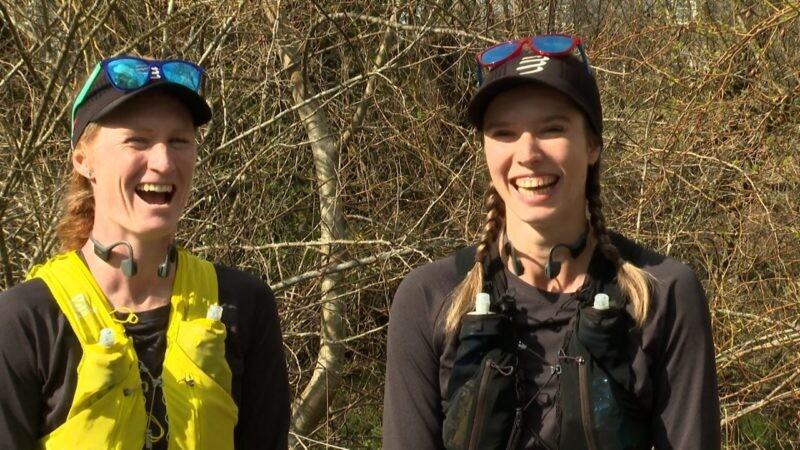
Cunningham and Perie were hoping to raise $150,000 in memory of Cunningham’s late father, Alan, who died of dementia. “We both know that life is short and the ability to run or walk doesn’t stay with you forever,” Cunningham says. “My father was fit and active and he inspired us to tackle this challenge.”
Over the 106 days, Petrie and Cunningham wore out seven pairs of running shoes and consumed over 4,000 calories daily. Their 100th consecutive marathon was celebrated at the Edinburgh Marathon on May 29, where both finished just under five hours. The couple awaits official verification from Guinness, but they are confident they have met the record criteria for consecutive daily marathons.

American Alyssa Clark currently holds the official women’s record, completing 95 consecutive marathons in 2020. But in April, British runner Kate Jayden claimed the unofficial record of 101 marathons in 101 days, only to be broken by South African runner Jacky Hunt-Broersma, who lost a leg to cancer in 2001, ran 104 marathons in 104 days.
In an interview with the Motor Neurone Disease Association (MNDA), Cunningham said she didn’t know if Jayden’s or Boersma’s records would be verified because some of the marathons they ran were on treadmills. “We believe the record only stands if you run all the marathons outdoors,” she says. “But even so, we ensured we would set a new record by adding six marathons to get to 106 outdoor marathons in 106 days.”
Cunningham, 35, and Petrie, 26, are both personal trainers who are in love with fitness and the outdoors and each other. Besides personal training, the duo also has a YouTube channel where they attempt challenges set by professional athletes.
Both runners hoped this achievement can inspire others to get out there and do something they’ve always wanted to do.
(06/07/2022) ⚡AMPby Marley Dickinson
Feeling the post-race blues? It’s more common than you think
Most runners put in a lot of miles and hours of training (along with burning through more than a couple of pairs of shoes) before a big race. The build-up can be intense. Regardless of whether you run a PB or DNF, what happens mentally and physically after the race is just as important as your training. Post-race blues is a term coined by runners to describe the situational depression that impacts athletes, from amateur to professional.
Olympic athletes like Alexi Pappas have publicly discussed the depression they faced after their competitive events.
First things first: take recovery as seriously as you do running
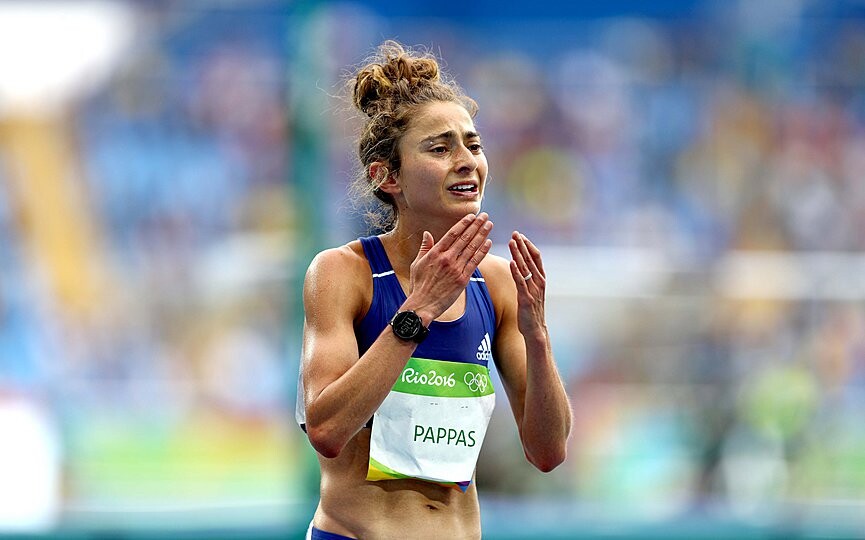
Few runners spend the time and energy on recovery as they do on workouts, but the recovery period is when your body actually gets stronger, rebuilding in order to perform again. Your body needs both rest and fuel to recover. Since you aren’t dedicating yourself to intense exercise, take some time to do some healthy meal prep or master some nutritious recipes. Trying a cooking class in person or online can be a great distraction, and you’ll enter your next training block armed with new skills.
Connect. With loved ones, with your yoga mat, with Netflix
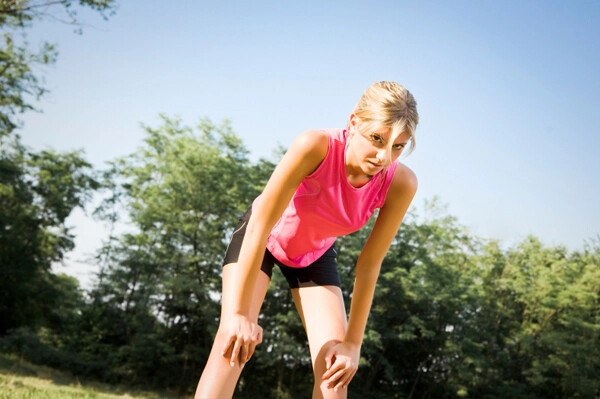
Training for a big event takes a lot of time and energy. Your family, friends, and yoga buddies have missed your regular presence in their lives. It is the perfect time to revitalize those relationships. Reach out, and try accepting offers to join activities even when you would rather hide indoors and analyze splits on Strava. It’s okay to find a balance, so if a movie night with your cat is calling your name, get cozy and turn up the volume. Enjoy the opportunity to fit in activities, however simple, that you don’t normally prioritize.
Get your mind off of running
Always wanted to learn conversational Spanish or take an avalanche safety course? Yearning to plant your own vegetables? Even though you may be feeling unmotivated, taking the first steps toward trying out a fun new hobby can have monumental results. After all, you once went out for your very first run, right? Your local library can be a good place to find resources, and often will offer courses on a variety of new things to try.
Think long-term
Whether you hit or missed your goals in your last race, you most likely have future races on the horizon. Revisit your targets and tweak your future running plans, evaluating what worked (or didn’t) this time. When you feel both physically and mentally ready, get that run-excitement simmering by mapping out new running adventures to tackle in the months and years to come.
Be proactive about your health, mental and physical
Post-race blues may be a minor speed-bump to overcome, but it’s important to stay pro-active with any health challenges that you encounter. Pappas writes: “And then when my doctor helped me understand that my brain was a body part, just like my leg, and it could get injured like any other body part, and it could also heal like any other body part.” Taking positive steps to maintain a healthy mind is no different from seeing a sports doctor to treat a running injury.
(06/07/2022) ⚡AMPby Keeley Milne
More than 10,000 runners expected at this year's Boilermaker
After two years, Utica’s Boilermaker Road Race is returning to the second Sunday in July in Utica.
“For those folks for the pre-pandemic, 1978 to 2019, the fun you’ve had, that’s what we’re going to bring back this year,” said Mark Donovan, Boilermaker president.

Over 10,000 runners are expected to participate in this year’s road race.
“We have the elite athletes back," Donovan said. "We have the wheelchair athletes back. We continue to get back to normalcy."
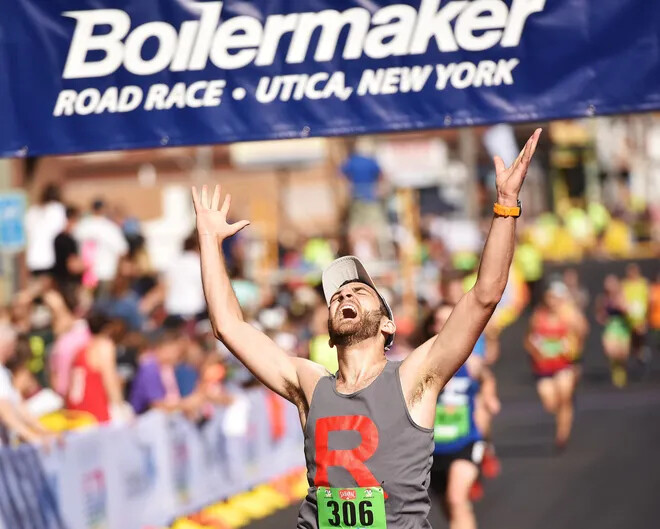
The MVHS Health and Wellness Expo will return to Mohawk Valley Community College July 8-9.
“It’s where people can pick up their race bibs, their race swag and visit the hosts of really cool exhibitors we will have in the Jorgensen Field House,” Donovan said.
This year, the Boilermaker launched its Access Program. It's designed to allow local immigrants, refugees, and those underserved and underprivileged easier access to participate in the race.
“The access program is proving complimentary registrations for either the 5K or the 15K race. As part of that, we do provide folks with training programs, either self-directed, they can do on their own, or we provide them with any connections to any various local running clubs who have their own training program that prepare them for the boilermaker,” Donovan said.
With the help of Wolfspeed Electronics Company, sneakers will be provided to those in need.
“In our 45th anniversary and coming off of two to three years of weirdness, we encourage all of the folks that have come out for the previous 40-plus years to spectate and cheer those runners on, because you’re a big part of the experience,” Donovan said.
The race to the finish line will be Sunday, July 10.
There will be a post-race party at the F.X. Matt Brewing Company. Donovan said they are still taking volunteers. If you would like to help with the race, visit https://www.boilermaker.com/events/5k.php.
(06/06/2022) ⚡AMPby Shalon Stevens
Boilermaker 15k
The Boilermaker 15K is the premier event of Boilermaker Weekend. This world krenowned race is often referred to as the country's best 15K. The Boilermaker 15K is recognized for its entertaining yet challenging course and racing's best post-race party, hosted by the F.X. Matt Brewing Company, featuring Saranac beer and a live concert! With 3 ice and water stops every...
more...Three Phases of Post-Marathon Recovery
Congratulations! You just completed a marathon and whether or not you met your goal time, you have earned the right to take some serious time off. In fact, your ability to recover well will determine the real outcome of the marathon - your fitness. This article will outline why we need to recover and give you input on how to handle each of the three critical recovery phases: First Hour, 12 Hours and 72 Hours.
Your Biggest Workout
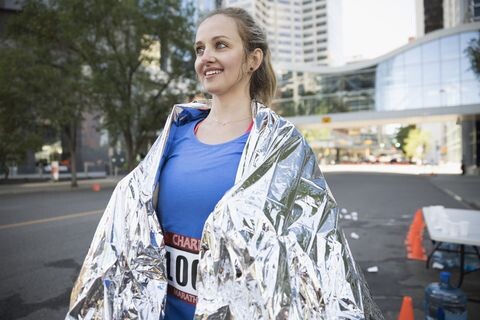
If you can take the emotions, cheering fans and adrenaline rush of crossing the finish out of your mind for a second, your marathon experience boils down to one thing: your longest--and potentially hardest--run all year and perhaps in your life.
Just as you took care of your body after those critical 16, 18 and 20+ mile long runs on your way to race day, so too must you care for your body now. Given the demands of the race, and how much of it you truly "raced," you have placed a massive dose of training on your body. If you can recover properly, you can not only avoid burnout or injury, you could set the stage for an even better training cycle in the future.
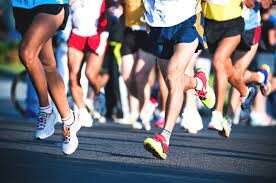
The Weight Room
Since most of us have lifted weights at some point in time, I think it's helpful to draw a parallel between your marathon and the weight room. We've all gone to the gym after some time off, piled the weights on the bar and had a good session...only to wake up the next morning practically paralyzed.
Your muscles do significant work, and they need to recover. It's the recovery, not the lifting, that makes you stronger. After all if you go back on the bench that next day, you'd probably drop the bar on your neck! Savvy weightlifters alternate body parts, making sure that they are well-recovered before attempting another session.
This powerful experience is not that different from what your body undergoes during a marathon. There is deep muscular fatigue from the effort, not to mention the cost of actually covering 26.2 miles on your feet and legs. If you can understand this physical state to be an opportunity, instead of an inconvenience, you might well be able to absorb the work done and earn some significant fitness.
Phase One: The First Hour
Once you've crossed the finish line and have your medal in hand, it's imperative that you turn your focus towards recovery. You can start doing the mile splits and swapping stories as soon as you have taken a few basic steps.
1. Dry Clothes -- Once you stop working, your body will almost immediately begin to enter recovery mode. Even on a warm day you'll find yourself getting quite cold and clammy; avoid these post race chills by quickly changing into some nice warm soft clothes. This includes footwear, and injuries aside, another pair of shoes is best (as opposed to sandals) so as to keep your feet from swelling up and to provide you with much-needed support.
2. Feet Up -- After your quick change, you'll want to find a way to lay down and get your feet up. After several hours of hard work, your body needs help facilitating blood flow. Besides, this is just plain relaxing. Make sure you are well enough to be alone or have a spotter keep an eye on you, and just lay down. Ideally you'll be able to keep your feet up for 15- to 25 minutes at this first go, and it's recommended you do this several more times during the day.
3. Quick Calories -- You'll need some kind of recovery meal, ideally in liquid form and containing some protein. Avoid processed fruit juices or other sugary substitutes; use what has worked in training but make sure this happens in the first 30 minutes after your event.
4. Care for Damage -- If you have sustained some kind of injury such as a blister or muscle strain, now you can begin assessing the true extent of what you have done and seek out help. Your brain will be much clearer, and if you need to go somewhere or wait in line at least your basic needs will have been met.
Phase Two: 12 Hours
You aren't out of the woods just yet. By now you have found your friends and family; perhaps you have even made it back to your hotel/house and are now thinking about your next meal. Don't just mail it in from here; there are still a few key things you can do aside from eating the biggest meal you can find (although that's not a bad place to start!):
1. Get Cleaned Up -- There's nothing like taking a shower or bath that will rejuvenate you - and make you aware of any issues you might have (like chafing, ouch). If possible, consider a cool or even cold bath to help promote recovery. Note that this is not for the faint of heart.
2. Serious Nutrition -- Now that your stomach has settled, you'll want to focus on a proper meal. You'll most likely have a pretty solid craving, so picking a place to eat won't be hard. Just bring a snack in case you aren't the only finisher with this idea. As you pick your foods, try to keep them reasonably healthy and drink lots of water.
3. Sensible Celebration -- You have earned the right to party, but don't overdo it. Your body is still running on fumes, and adding alcohol and lots of time standing on your feet can be fun but does have its limits. Make sure you get IOUs from everyone for next time and head home.
4. Sleep Right -- Chances are you'll be so tired that falling asleep won't be an issue; the problem is you'll be so sore that staying asleep could be harder than you think! Put plenty of fluids and maybe even a snack on your bedside table and keep your feet elevated. Feel free to roll over as many times as you can the next day.
Phase Three: 72 Hours
By the end of 72 hours you'll be through the toughest part of your recovery process. But you need to get there first. This period is marked by some of the deepest need for recovery, for once the adrenaline wears off the fatigue and soreness will be all that's left.
1. Stay Active -- Do your best to avoid being stationary other than sleeping. Light walking, an easy dip in the pool or a short spin on an exercise bike will each, in their own way, help your muscles flush out the toxins and after-effects of the race. Frequent rest will be needed, but total rest is your enemy here.
2. Continue Quality Foods -- You are what you eat, especially when your body is in such a vulnerable state. A treat or two is OK, but try to save the real craziness for a later date when you can truly savor the food (and bear the consequences).
3. Self-Massage -- Lightly working on your calves, feet, hamstrings, glutes and quads is another great way to stay loose and promote recovery. Whether you use your hands or a fancy gadget, taking periodic breaks to focus on your trouble areas will really help.
Moving On
Once you have emerged from the most intensive recovery, your work is still not done. Your body is still a long way from being at 100 percent. General guidelines include staying active by walking or including some cross-training like cycling or swimming. The earliest you should consider running is about a week out, but if you can stay away from the sneakers for a full 14 days you'll really be ready to begin the process of getting your stride back.
(06/06/2022) ⚡AMPby Patrick McCrann
How long should it take to recover from a 10K race?
A 10K race can be physically taxing on your body. You push your body’s aerobic boundaries for 40 minutes to an hour. The further the race, the longer you need to give your body time to recover. Post-race recovery is something many runners don’t consider before their race, since runners focus, first and foremost, on getting to the finish line. Allowing adequate time for recovery can ultimately help prevent injuries and improve your fitness.
Racing a 10K requires a bit more recovery than you think. The general rule of thumb for this distance is to take one day of rest per mile raced. Therefore, after a 5K, most runners will require a recovery period of two to four days. After 10K, runners will generally take three to six days off high-intensity training.
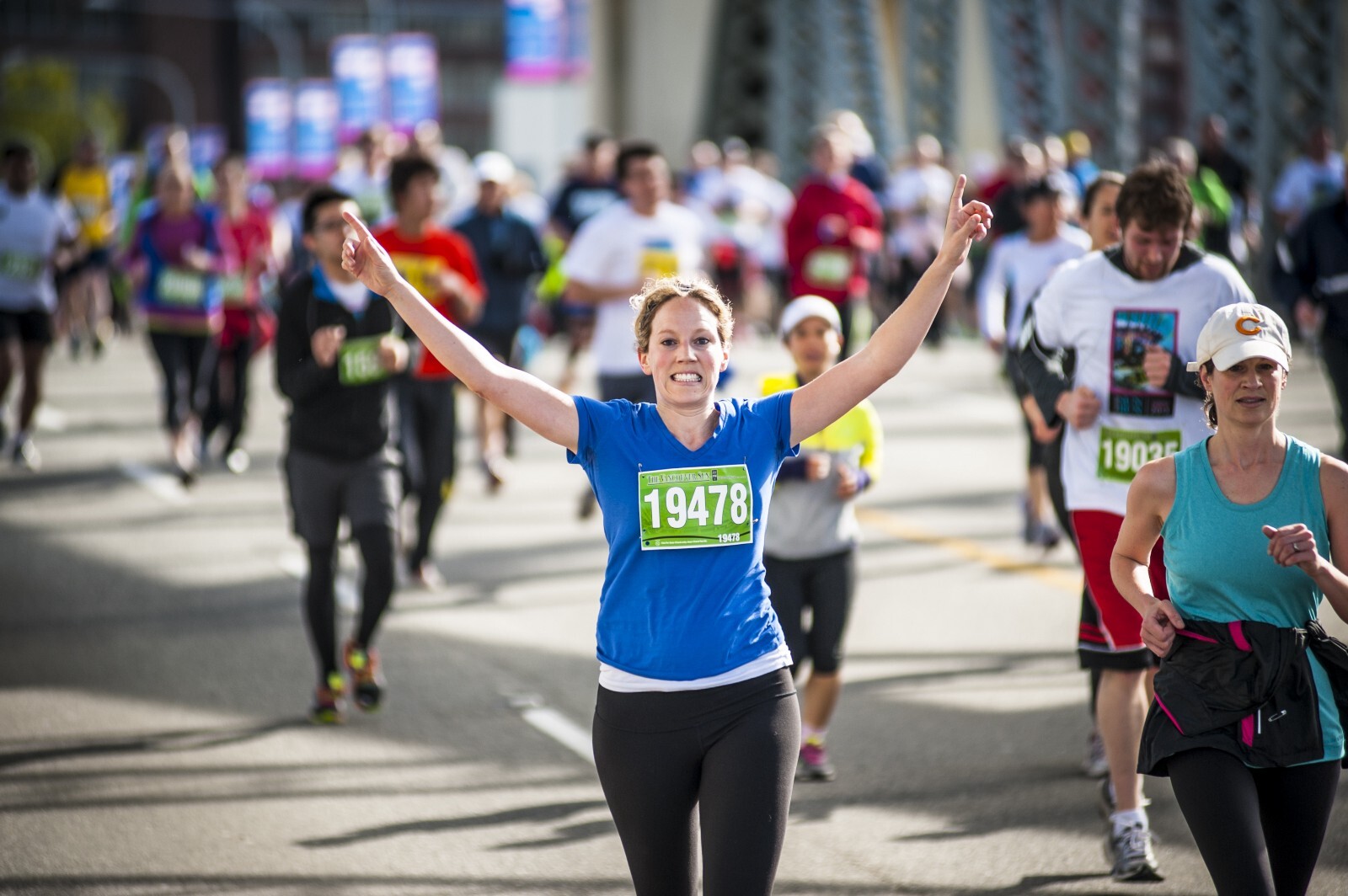
The rest period does not mean to halt all running or exercise, but a break from speedwork and high-intensity training. Rest days can include easy runs, swimming, biking and even lifting weights at the gym at an easy intensity level.
The reason easy exercise is encouraged during recovery is that it helps bring essential nutrients and oxygen to your soft tissues (muscles, tendons and ligaments) and blood flow to repair the body. Low-intensity exercise like the elliptical or spin bike will not put too much stress on already sore muscles.
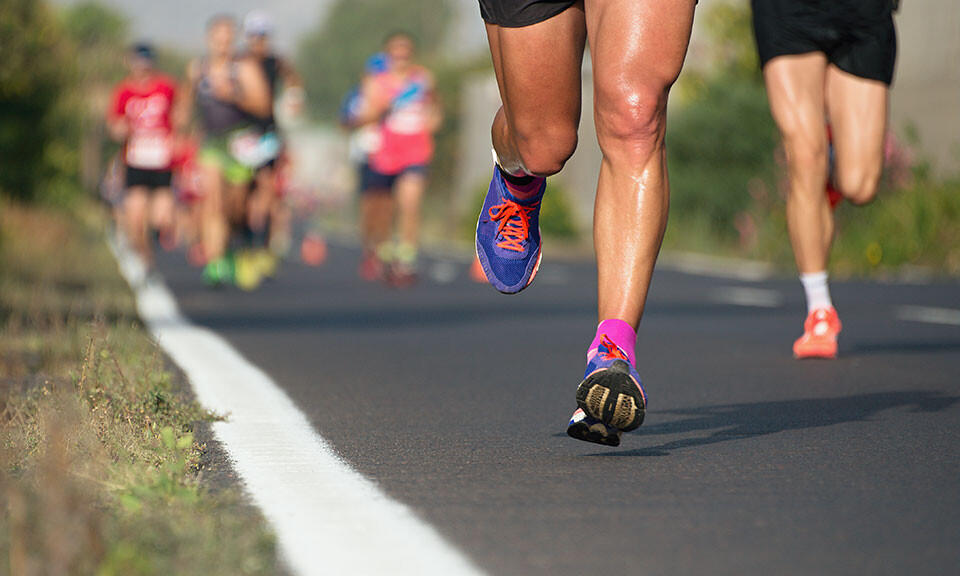
The best way to determine how much recovery you need is to see how your body feels the morning after your race.
On day three of recovery, see if there’s still soreness there. If there are still aches and pains, take another recovery day. If there is no soreness, try a 20- to 30-minute easy run or 30 minutes on the bike. Monitor your body’s recovery day by day and try easy recovery methods like icing, foam rolling and rest to speed up the process.
(06/06/2022) ⚡AMPby Running Magazine
Felix Kirwa sent the wrong way at Stockholm Marathon, still wins race
The leaders of Saturday’s Stockholm Marathon were in confusion and disbelief after being sent the wrong way for an extra kilometer.Felix Kirwa, Tesfaye Lencho Anbesa, and Merhawi Keste were pointed in the wrong direction by race officials around the 30 km mark of the marathon.
They ran for a full minute before realizing the mistake, which cost them the lead in the race. Kirwa, 26, managed to come back and win the event in a time of 2:11:07, only one minute off the course record of 2:10:10, despite having to run an extra kilometer.
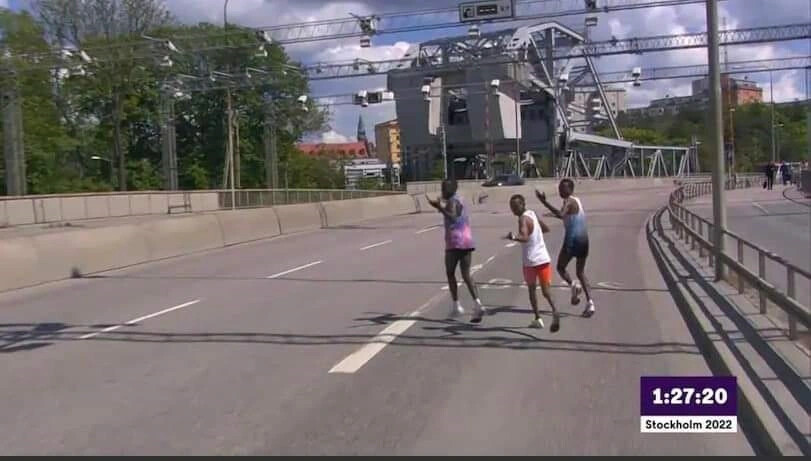
Kirwa spoke to Stockholm’s TV4 in a post-race interview: “I am very happy to win the Stockholm marathon but we ran wrong and I missed the record because of it.”
The event organizers blamed the error on motorcycle police officers who drove in the wrong direction.
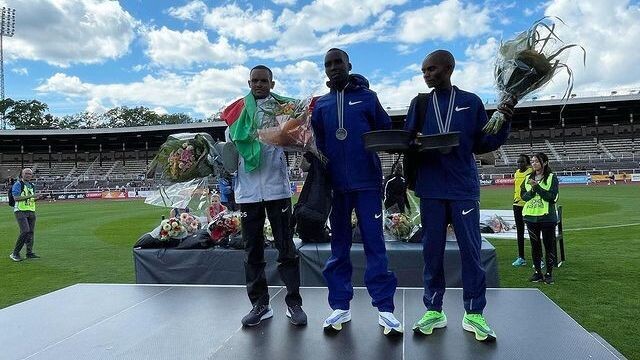
Kesete, from Eritrea, hung onto second place in 2:11:45, while Tesfay, also from Eritrea, lost out on a podium spot to finish fourth. John Langat of Kenya, who wasn’t led the wrong way, finished third in 2:12:39.
Kirwa’s win in Stockholm puts him on three marathon wins, winning the 2016 Singapore Marathon and the 2016 Antwerp Marathon. Kirwa was banned from competing in 2019, after failing a drug test for the banned substance strychnine, commonly known as rat poison.
Strychnine is on the anti-doping list due to its effects as a stimulant and can give an athlete the ability to go for longer without feeling tired. Kirwa was stripped of his second-place finish at the 2018 Singapore Marathon as a result of the suspension.
(06/06/2022) ⚡AMPby Marley Dickinson
ADIDAS Stockholm Marathon
ASICS Stockholm Marathon is an exciting race in a beautiful city with runners from all over the world. This is one of the major sporting events in Sweden with hundreds of thousands of spectators along the route cheering the participants. The race takes you through Stockholm, one of the world’s most beautiful capitals. Built on 14 islands around one of...
more...Running Legend Ryan Hall Shared a Look at His 'Hybrid Athlete' Training Plan
The former Olympian's workout combines resistance training and cardio.
Ryan Hall might be best known as the Olympic long distance runner who broke records for his time in the marathon and half marathon (and holds onto that half marathon record to this day), but he has undergone a dramatic body transformation since retiring as a pro athlete. He has packed on an impressive amount of muscle—and strength—without compromising on his famous speed, and now undertakes physical challenges which require both strength and stamina.
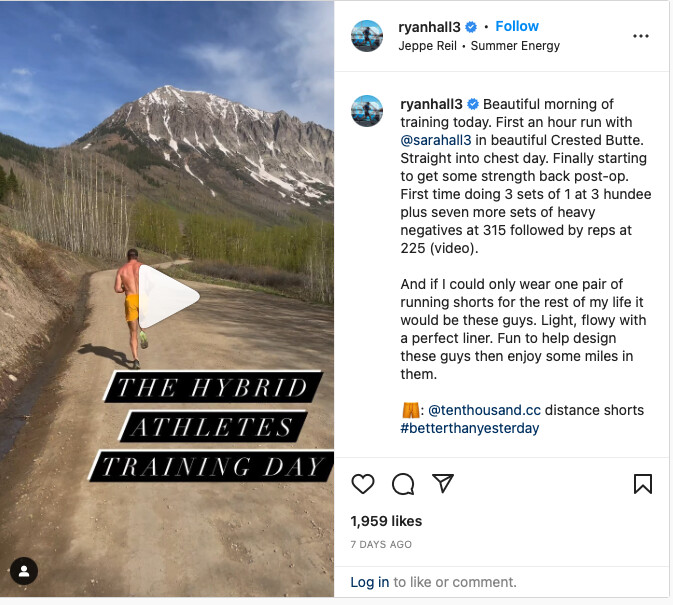
This is reflected in the way he now approaches training. In a recent video on his Instagram, Hall shared what an average day looks like for him, and described his self-designed program as a "hybrid athlete" workout.
"First an hour run with @sarahall3 in beautiful Crested Butte," he wrote in the caption. "Straight into chest day. Finally starting to get some strength back post-op. First time doing 3 sets of 1 at 3 hundee plus seven more sets of heavy negatives at 315 followed by reps at 225."
Striking that balance between strength training and cardio has been a learning experience for Hall. "It's kind of hard, honestly, cause I like going out for little 30 minute easy runs. But even with that three times a week, for me, my body just will get rid of muscle," he told Men's Health.
"Or it'll be really hard to add muscle even if I'm eating a ton of calories. So I definitely have the marathon runner genetics, the hard gainer genetics, and I have to kind of fight through that with some kind of intuitive, outside of the box training that I found has worked for me."
(06/05/2022) ⚡AMPInstead of braving the elements, take these precautions for a happy and healthy Summer Run Streak
Designed to keep you running through sweaty and busy summer days, the run streak bridges the gap between Memorial Day and July 4. Run at least one mile per day, every day. That’s 36 consecutive days of running.
Find out how a streak can change you, and share your journey with us! Where will you run? How will you make it happen? How will your life change? We want to hear about it! Share your progress and motivate other streakers by “liking” the streak on Facebook. You can also share updates on Twitter and Instagram using the hashtag #RWRunStreak.
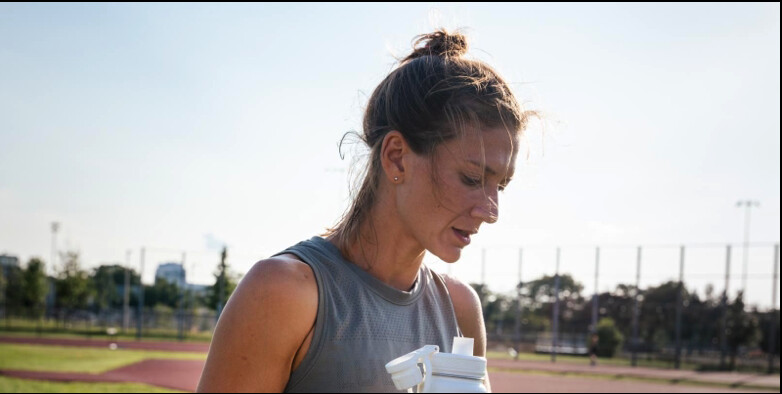
Whether you’re starting a new marathon training block or participating in the Runner’s World Run Streak, the summer is a perfect time to get back into running. Longer days, vacation time, and good weather mean more time to get the miles in. But beware—there are simple mistakes that can cause you to burn out (or literally burn yourself to a crisp) before fall marathon season comes around.
Avoid the following mistakes during summer training, including hydration hijinx and shoe snafus. Above all else, keep one thing in mind—your goal is to make it through the Run Streak healthy, happy, and hungry for more.
Mistake #1: Not acclimating to the heat.
In every aspect of training, there’s an adjustment period. Just like you wouldn’t jump from 20 miles per week to 60, or skip from 10 squats to 100 in just a couple of sessions, you shouldn’t dive headfirst into the summer heat.
There are a few different options to build up your heat tolerance. First, you can briefly lower your mileage so you’re not overloading your body and gradually work it back up as you readjust. Or, you can go back and forth between treadmill days and outside running days. Lastly, start your training cycle by running during the coolest part of the day, then each following day, run later and later until you’ve comfortably run during the hottest hours.
Get used to one variable at a time. Don’t try to build your mileage too high when acclimating to the weather. Handle one problem first, then solve the next one. Otherwise, you might end up physically and mentally drained.
Mistake #2: Not checking the weather.
I live in Philadelphia, where the summer temperatures can range from mid-70s to the high 90s. As someone who likes to run after work, that means I need to check the weather, or I might be in for an unpleasant surprise.
But even if you’re a morning runner, it helps to look at a weather report before heading out the door. You might find that the morning dew point is unbearably high for your workout, or that a summer rainstorm will roll through and cool the air down significantly by the afternoon.
In my case, I look ahead of time whether I need to get up a little earlier to squeeze my run in the cool morning instead of slogging through blistering temps—which can potentially be dangerous.
Mistake #3: Not hydrating or refueling.
Katie Kissane, R.D., C.S.S.D. told Runner’s World in a previous article that dehydration heightens the risk of heatstroke and causes muscle cramping when you’re running in hot weather. Therefore, to stay safe in the heat, make sure you’re drinking water throughout the day.
If you’re out for a long run, hydrate during the activity. Stash a bottle somewhere on the route, plan your route around water fountains, or even wear a hydration pack—just make sure to drink up.
However, Kissane explains that just chugging water alone could lead to a separate problem called hyponatremia—low sodium levels in the blood. Hyponatremia leads to dizziness, fatigue, and nausea. Consider bringing a sports drink high in minerals like sodium, calcium, potassium, and magnesium to prevent the symptoms from hampering your run and hurting you in the long term.
Mistake #4: Not wearing sunscreen.
No matter how long your run is, you’re exposing yourself to ultraviolet radiation from the sun. Without precaution, you can suffer from skin aging, eye damage, and even skin cancer, according to the Environmental Protection Agency.
“Americans can reduce risks from sun exposure with continued use of sun protection measures including broad-spectrum sunscreen with SPF values of at least 15,” said acting United States Federal Drug Association (FDA) Commissioner Janet Woodcock, M.D., in a press release from September 2021.
The FDA recommends applying sunscreen 15 minutes before sun exposure and reapplying every two hours, especially when sweating. That means if you’re going for a long run, you might need to stop to reapply. There are sunscreens out there specifically made to be sweat-resistant, so you don’t need to reapply as often, but it’s still good to be safe.
Mistake #5: Not being flexible—and dreading the treadmill.
“On especially hot and humid days, there’s no glory in the Strava post,” says Runner’s World Runner-in-Chief Jeff Dengate. “I’ve had a 15-miler on the schedule that I’ve broken up into three five-mile runs that day, so I still get in the mileage without dying. Don’t be confined by the training plan—sometimes you need to modify it.”
That might even mean running on the treadmill when it’s particularly rough outside. Before you shake your head in disgust, think of it as an opportunity to control all the variables. You can listen to your favorite music or watch a television show, lock into a pace, and enjoy sweet, sweet air conditioning.
Mistake #6: Not wearing summer running gear.
There are a few pieces of gear you should always have around for hot and sunny summer runs.
A good running hat protects your face from the sun. Most are made of moisture-wicking materials to keep your head cool, and some even come with UV protection. Bonus points are that a running hat keeps raindrops out of your eyes on any wet days.
A hat alone won’t keep the sun out of your eyes. You need a pair of sunglasses. While most pairs will work in a pinch, there are great running sunglasses that won’t slip off your sweaty face or bounce up and down from the impact of your stride.
For particularly scalding afternoons, you could purchase a cooling vest—but think of that as more of a luxury than a necessity.
Mistake #7: Ignoring swollen feet.
When you get sized for a new shoe at a local running store, they typically recommend a half-size up because “blood flow increases to deliver oxygen to the muscles,” Paul Langer, DPM, told Runner’s World. “The volume of the muscles temporarily expands.”
When it’s really hot out, Test Editor Morgan Petruny notices that her feet swell even more: “I have to be aware of giving myself more room in my shoes… I often think that I’m a fall, winter, or spring shoe size W9, but a summer size W9.5.”
If you’re not ready to buy another shoe, she recommends loosening your laces, wearing thinner socks, and avoiding the shoes in your repertoire with a tight toe-box.
(06/05/2022) ⚡AMP
by Runner’s World
Gary Martin runs a second sub 4-minute mile to set a personal record, as history is made at the Festival of Miles
Gary Martin finished fourth in the race overall for a personal best — and just ahead of another high school runner who beat the four-minute mile mark as well. This time, Gary Martin was not completely alone, as he engaged in a race with top mile runners at the Festival of Miles in St. Louis.
On Thursday Gary ran another sub four-minute mile, and a personal record of 3:57.89, even as he finished fourth in the overall race.

Martin also had company from another high school athlete, as Connor Burns, a junior at Southern Boone High School in Ashland, Mo. also completed the mile in less than four minutes, finishing at 3:58.83 in fifth place.
It’s the first time in American track history that two high school runners have eclipsed the four-minute mark in the same mile race.
Paul Ryan, Jack Antsey, and Caleb Webb finished ahead of Martin and Burns. Ryan’s winning time was 3:55.95, and the top seven finishers went under four minutes.
Martin had run under four minutes for the first time at the Philadelphia Catholic League championships on May 15 when he ran a mile in 3:57:98.
(06/04/2022) ⚡AMPYou Know The RICE Method For Recovery. Now Try PEACE & LOVE.
You've probably heard of the RICE method when you twist an ankle or tweak a knee: Rest, Ice, Compress, Elevate. It's ubiquitous for a reason, and yet emerging research is showing us that soft tissue injuries are a lot more complex than originally thought. By using methods like RICE for soft-tissue injuries, you may actually be doing your body more harm than good and delaying recovery.
It might be time to try a different approach.

But first, what constitutes a soft tissue injury? They're extremely common in runners, with some of the most ubiquitous being:
Almost all runners will have experienced these at some point. But if RICE isn't the best protocol, what do we do? Here's the good news:
A new acronym has been developed alongside this new research, and while it might be a mouthful, it could also boost your recovery more effectively than RICE-ing. Introducing: PEACE & LOVE.
Remember, this advice is for soft tissue injuries only. If you feel you may have sustained a more serious injury, like a fracture, seek immediate medical attention.
Here's the breakdown:
P- Protect
Immediately following a soft tissue injury, the single best thing you can do is take a load off. Restrict movement as much as you can for 1-3 days, depending on how bad the injury is. This reduces the risk of reaggravation and increased tissue bleeding. However, the timeframe is critical here. Research shows that prolonged rest following an acute soft tissue injury actually compromises tissue quality and strength, so don't veg out on the couch for two weeks straight or you'll inhibit blood flow and mobility necessary for proper healing.
How do you know when you should stop resting? Follow your pain. As the injury becomes less painful, gradually return to weight-bearing exercise.
Take Action: Protect your injury by avoiding movements - particularly those that cause increased pain - in the first couple days after injury.
E - Elevate
While there is limited evidence to support elevating an injured area as an effective recovery tool, it's low-risk and easy, plus it helps with "P" above. Bringing the injured area above the level of your heart can assist interstitial fluid (fluid found in the spaces around cells) flow out of the injured tissue.
Action Plan: Elevate the limb higher than the heart using something comfortable to rest it on, like a pillow, cushion, or the arm of your couch.
A - Avoid Anti-Inflammatories (Ice & NSAIDs)
Using ice and anti-inflammatory medications (NSAIDs) after an injury is a common practice to reduce swelling and pain. But there is actually very little high-quality evidence that supports the use of ice in treatment of soft tissue injuries, and increasingly more research that says don't.
Our bodies are smart, and the natural inflammatory process will support our tissues healing. By stopping or reducing this inflammation using external means like ice or medication, we are impairing our body's own healing. This, in turn, can impact our long-term tissue healing and possibly cause your injury to last longer. Natural inflammation will go down on its own as the body's protective instincts calm down.
Action Plan: Allow your body's natural inflammatory response for the first 48 hours. After this time period you can take anti-inflammatories.
C - Compress
A better way to reduce swelling is by intermittently using mechanical compression with a wrap, bandage, sock, or tape. Again, this serves the double purpose of also helping reduce movement. Just make sure you don't restrict movement to the point where you can't move the joint through its full range of motion.
Take Action: Use a compression bandage to reduce swelling, but do not wrap it so tight you get pins and needles or numbness. Compression can be used within comfort range throughout the day, however should NOT be used overnight.
E - Educate
Take time to learn about your specific injury. A physical therapy assessment will help you get reliable information and advice, and prevent similar injuries in the future. Ask your physical therapist about realistic recovery times and exercises to progressively load your injury while you recover. This will help you grade expectations and get you back to running as quickly as you can.
Action Plan: Active recoveries in soft tissue injuries often have the best outcomes. Seek advice from a medical professional and try to identify the causes of the injury and best exercises to strengthen the area.
L - Load
It is widely known that when you go to the physical therapist you usually get prescribed exercises - that's because most of those exercises are specifically designed to repair damaged tissues by gradually increasing the demands placed on them. This is known as mechanotransduction: the physiological process where cells sense and respond to mechanical loads. The goal should be to increase the amount you are doing progressively, without increasing pain. This will help the tolerance of your tissues (muscles, tendons, and ligaments) return to normal.
Action Plan: Listen to your body and let your pain levels help you progress back into normal activities.
O - Optimism
In the clinic, I always preface this with "I know this sounds silly but . . ." because patients tend to ignore this portion of the PEACE & LOVE talk. But compelling research shows that how you think and feel about your injury plays a big role in how you recover! Expecting a poor outcome, catastrophizing, or being overly fearful has been associated with longer recoveries from soft tissue injuries. Feeling optimistic and motivated - while staying realistic - will not only help you keep up with your physical therapy exercises, but it may also make your healing process even more efficient.
Action Plan: Be positive and confident in your recovery. This will optimize your results! Remember that these types of injuries are almost never the cause for long-term breaks from running.
V - Vascularization
Increasing blood flow to the affected area with pain-free aerobic activity has been shown to accelerate recovery and improve function. However: listening to your body's reaction and progressing gradually is critical. More pain in this case does not equal more gain.
Action Plan: Choose aerobic activities that are pain-free (walking, stationary cycling, swimming, jogging, rowing, etc.) and integrate them gradually into your routine, only in amounts that cause no pain.
E - Exercise
As shown above, many of the widely accepted interventions for soft tissue injuries have a poor evidence base. Not this one! Strong evidence shows that exercise aids in treatment of soft tissue injury. It can also reduce the risk of a recurring injury by improving strength, mobility, balance, and proprioception (the body's own spatial awareness).
Again, it is important to seek a physical therapist's help when choosing exercises to achieve optimal strength and mobility as you recover.
Action Plan: Build your mobility, strength, and proprioception back up progressively during your recovery by slowly returning to exercise.
The Takeaway:
Being a freshly injured runner can be scary, upsetting, annoying, and confusing. Instead of reaching for the ice immediately, lead your recovery with PEACE & LOVE: unload the area, listen to your pain, keep a proactively positive mindset, and seek a physical therapist to begin reloading your tissues and expedite healing. Following these new protocols will help you heal faster and get you back to the trails sooner.
Kristen Kennedy holds a BSc in kinesiology from Dalhousie University and a Doctor of Physical Therapy degree from the University of Montana. She currently practices in the UK, specializing in sport physical therapy with a focus on running. Kristen has been a yoga teacher to athletes for six years and is co-founder of "Made By Movement," an online yoga, Pilates, and mobility studio.
(06/04/2022) ⚡AMPby Trail Runner Magazine
Does Looking at Your Watch Help or Hurt Your Running?
New research suggests a surprising answer.
Past studies have shown that people who are mentally exhausted will see their performance drop off, such as running performance.
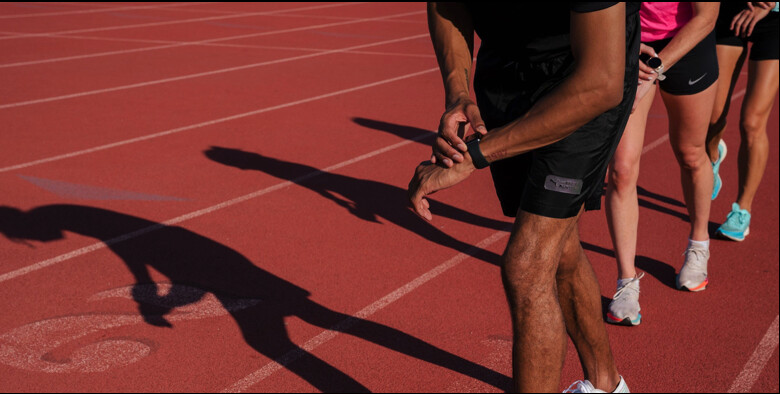
New research from the University of Birmingham showed that when receiving regular feedback during a task, people who were mentally fatigued performed just as well as a control group.
That means even if you’re mentally taxed before a run, having something like your GPS watch to provide real-time data may help keep your performance in check.
The Great Watch Debate is as old as running itself—or at least as old as watches. Does tracking your pace on the run keep you honest? Or does running watch-less set you free?
According to a recent experiment by researchers at the University of Birmingham, the kind of day you had might help you decide.
Feedback and mental fatigue
Research shows that when you’re mentally fatigued, your physical performance suffers. And let’s face it: these days, between pandemics, wars, 24-hour news cycles, and the stresses of daily living, who’s not mentally fatigued on one run or another?
The good news is that, according to this University of Birmingham study, receiving feedback as you exercise—like you would from a GPS watch—can help you get more out of what might otherwise be a sub-par performance.
The subjects in this experiment were split into three groups: control, feedback, and no feedback. The control group performed three tasks. First, they did an endurance test that involved squeezing a force-measuring device as hard as they could once every second for five minutes. Then they watched a documentary about trains. Finally, they repeated the endurance test.
The no-feedback group followed the same protocol, only instead of watching the documentary, they took a mentally fatiguing memory test before they repeated the endurance test. The feedback group also took the memory test, and when they took the second endurance test, they were shown feedback—specifically, how much force they were producing and how that compared to their first test.
As prior research would suggest, the no-feedback group saw their performance decline between the first and second endurance tests due to mental fatigue, while the control group didn’t. Interestingly, the feedback group, who were also mentally fatigued, performed similarly to the control group: their performance didn’t decline.
“When they knew how they were doing, the people in the state of mental fatigue did as well as the people who weren’t in the state of mental fatigue,” said Neil Dallaway, Ph.D., a sports science researcher associated with the University of Birmingham. And while the experiment measured hand-grip strength rather than running performance, Dallaway believes the results are still applicable to runners.
“If you get home from work one day and you are really tired and you’ve got an interval session or a fartlek, you may not do as well,” he said. “So then if you use your watch for the feedback, it could help you perform as well as if you weren’t mentally fatigued.”
Practical feedback
In addition to overcoming mental fatigue, there are other, practical reasons to use watch feedback while you run. When you’re running a workout or a race that doesn’t include mile markers, it’s useful to know how far you’ve run and how far you have to go. Knowing your pace can also help you to self-correct when you’re trying to hit a time goal.
Tony Ruiz, a longtime running coach and competitive masters runner, tells a story about a 5K where he checked his watch at mile 1 and saw he was running considerably slower than his goal pace. “I went, ‘Oh my God,’ and it just kind of woke me up,” he said.
While seeing a slow pace can help you pick things up, you can also use your watch to keep the pace under control. Ruiz advises athletes running half marathons and marathons to check their watch at least once per mile at the start of the race, because going too hard too early can be a recipe for disaster. However, he tells marathoners to pretty much ignore their watch after mile 20.
“If you're running a really good race, by then you already know this,” he said. “But if you're slowing down, let’s say at 21 miles, I’m not sure checking your watch is going to give you any kind of positive feedback.”
Assigning meaning to the data
Fear of “negative feedback” is the reason some runners shy away from their watch, and yet the watch itself is not the problem. “Data can be very helpful. Where it starts becoming an issue is with the meaning that we'’e attaching to what the watch tells us,” Shannon Mulcahy, M.S., a sports psychology consultant, said.
Consider a gas gauge on a car: If the gauge indicates you can drive 30 more miles before you’re out of gas, you’ll use that information to decide when to get gas. You won’t look at it and think, “This drive is going great,” or “I’m a terrible driver.”
Unfortunately, Mulcahy says, runners often fail to look at their watches with the same level of objectivity.
“It's not really problematic if you look at your watch and you're like, ‘I'm running slower than I wanted to,’ and that frustrates you. That’s normal,” she said. “It’s when you see that you're running slower than you wanted, and it all of a sudden goes to, ‘I’m never gonna reach my goal. I’m a terrible runner. What’s the point?’ And we start catastrophizing.”
Giving emotional meaning to your watch data is what can transform it from a useful tool to a run-ruiner.
Making your watch work for you
The ultimate lesson is that your watch is a tool; you just need to figure out how to make it work best for you. There are a lot of options.
One is to use your watch during workouts but not easy runs. This helps keep easy runs easy because, as Mulcahy said, “I don't think we’re very good at looking down and seeing slow paces because, again, we’re deciding that they’re slow.” If you can’t see the pace, you can’t judge it.
Leaving your watch at home on easy days is the simplest option. However, if you like to have the data to share on Strava or for other purposes, you can switch the display so it shows you only distance or time elapsed during the run, not pace.
Another option Mulcahy shared that can help athletes who have trouble staying dispassionate when they see a pace (any pace) on their watch: Change the unit of measure.
“I have a client who is an American, but she lives in Europe. She was trying to train more in kilometers, and she started noticing that she was very analytical during her workout,” said Mulcahy. “There was really little meaning to the data; it was just very instructional.”
Ultimately the goal is to keep emotion at bay and use watch data for what it is: data. Some runners are great at this, and some runners have to find workarounds. But the science says that if you can get into that analytical mind frame, especially when your brain is tired, the data will help.
(06/04/2022) ⚡AMPby Runner’s World
7 Keys to Recovery From an Elite Runner Who Experienced Long COVID
Kate Grace, an 800-meter specialist who ranked third in the world in 2021, is taking a slow road back to competition.
At first, the COVID symptoms Kate Grace experienced at the end of December 2021 seemed mild enough. She had a sore throat and fever and felt tired. That turned into a cold, which gradually eased over the next several days. And because she had been vaccinated and had a booster shot, she didn’t expect any lasting complications. Within two weeks, the 800-meter specialist, a 2016 Olympic finalist, was back to running.
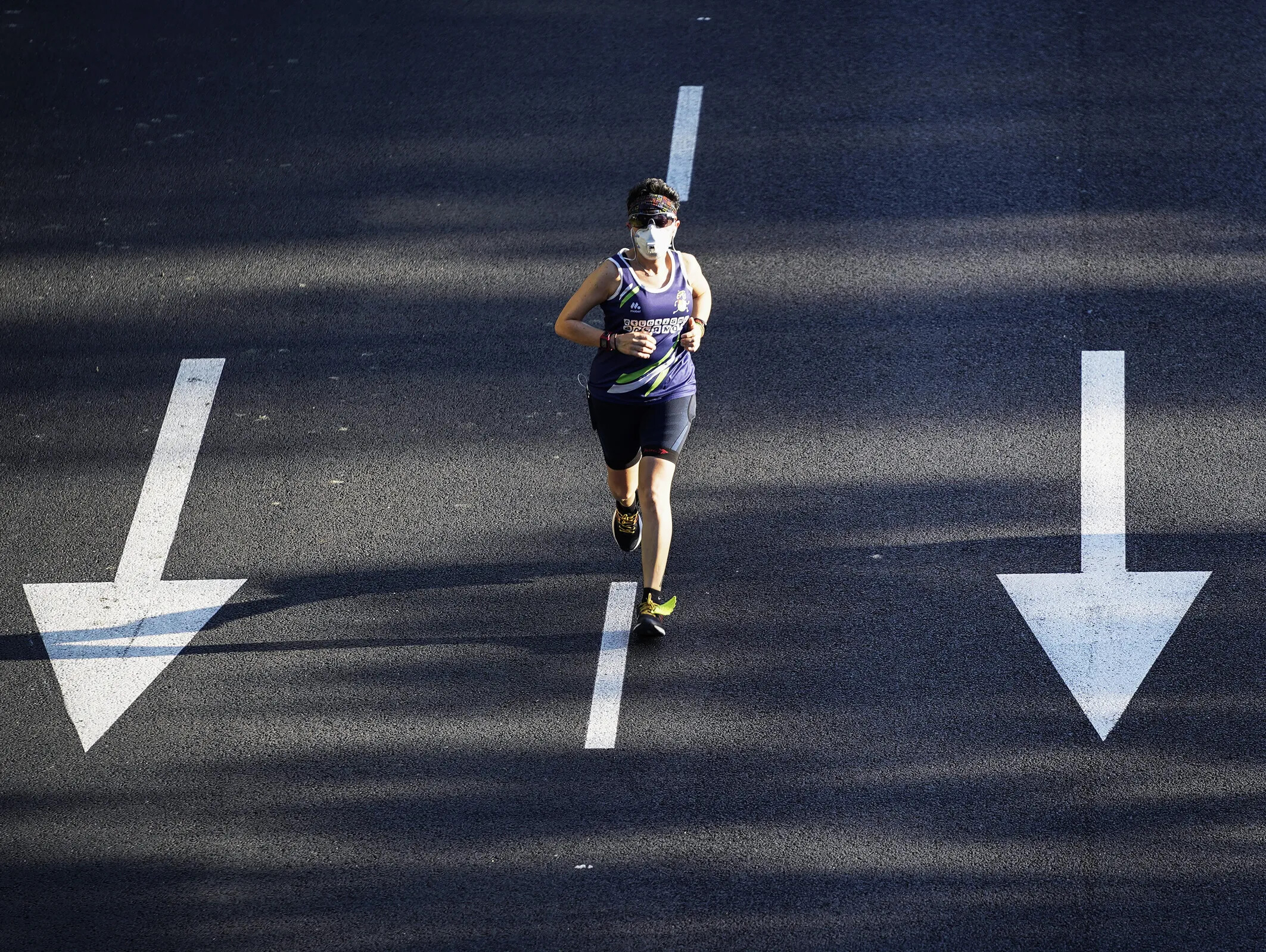
But in January, she began to notice she was struggling in training. She was pushing to hit her usual 7-minute pace during easy runs, and she felt exhausted afterward. In workouts, her difficulties were even more stark. “Paces that should have been pedestrian for me were an all-out effort,” she told Runner’s World. Grace, 33, had had a terrific 2021 track season, setting PRs in the 800 meters (1:57.20) and 1500 meters (4:01.33) and finishing in the top 3 in six of seven Diamond League meets she ran, with three victories. She couldn’t wait for the 2022 season, with the World Championships set to take place in July in Eugene, Oregon, the first time the meet will be held in the United States.
“I was just so excited about getting back to races, I think I pushed myself way too hard,” she said. “In my intense desire to get back into shape, I wasn’t patient. I didn’t listen to the fact that my body was not cooperating.”
After about three weeks, she realized the struggles she was having were out of the ordinary. She stopped trying to train. Her body, she said, “kind of shut down.”
Her primary symptom was crushing fatigue. One easy activity—making lunch, for instance—exhausted her for the rest of the day. Other symptoms included dizziness when she stood up, poor sleep, and excessive sweating. She would have to rest after she climbed the stairs in her Boulder, Colorado, home, because her heart rate would soar. Her feet turned purple in the mornings when she stood up, and she had brain fog.
The U.S. Olympic and Paralympic Committee put Grace in touch with doctors in Denver, who tested her heart and lungs—which checked out fine, with no sign of myocarditis—and confirmed she was experiencing classic long COVID symptoms. They told her there was nothing to do but rest.
That’s what she did. For 10 weeks, Grace did no running, cross-training, or lifting. She did start taking walks—just around the block at first, and she’d need a nap afterward. But over the weeks, those walks gradually grew to an hour. From those, she moved to hiking to get her heart rate up. Then short runs.
Now she’s back to running an hour a day. She’s still slower than she used to be on her easy runs, but she’s improving rapidly. It’s too soon to tell whether Grace will be able to have any kind of racing season in 2022, but she’s relieved to have her normal life and energy back.
“I literally cried on my first run,” she said. “I ran for 20 minutes at 10-minute pace. I was so happy. To be able to go and run and move my body and feel normal afterward, yeah, I laughed and cried. It was amazing.”
Grace struggles to convey how she felt during the worst days. “The fatigue was like nothing I’ve ever experienced,” she said. “I feel like I went to sleep in December and woke up in April. I did nothing. I couldn’t look at my phone. Weeks passed, and I don’t even know what happened. I was like a gray ghost of myself.”
Her physical symptoms were compounded by fear of not knowing when she would ever feel like herself again. Forget about her racing—she just wanted her life back.
Here is what she has learned so far in the process of her recovery—and what she wants other runners who have had COVID to know about coming back.
Rest and be patient. Grace advises anyone who has had COVID to take an extra week or two off before trying to run again, and then to start back to running very conservatively. She doesn’t know for sure if she made herself worse by trying to run before she was fully recovered, but she certainly didn’t help matters. “It’s way more prudent to wait and let yourself heal,” she said. “It’s always a possibility to have a delayed reaction to illness.” Post-viral syndrome is something that happens with other illnesses, such as mononucleosis or the flu. With COVID, too, it’s possible to fall into deep fatigue and need a long time to recover.
Don’t let your identity as a runner obscure what your body needs. Be appropriately humble. Respect the illness. “Just because you are a healthy, in shape person, you’re still human, your body still needs rest,” she said. “You still need time to recover.” Pushing through is counter productive.
One day your body will work for you again the way you expect it to, if you give it what it needs. But it might happen on a very different schedule than you had planned.
Take the timeline pressure off. You have a target race on the calendar? Let it go. Defer your entry, if possible, or transfer the bib to a friend if the race allows it. You will race again, just maybe not when you thought. And fretting about it won’t help.
Grace credits her coach, Joe Bosshard, with telling her to stop worrying about her track season. Every day that she didn’t feel better, she said she would “freak out” about how her season was slipping away. That stress would slow her recovery. “We have to reset mentally,” Grace said Bosshard told her. “Don’t think about races. Let yourself be calm and heal. When that happens, we can revisit racing plans.”
Walk before you run. Runners tend not to count walking as exercise, but a week or two of walking can help runners transition back into their primary activity. As Grace got better and faster at walking, she progressed to hiking.
While physically the walks helped prepare her body for running again, they also served an important psychological purpose. “I had lost confidence in my body,” she said. “I needed to prove myself I could get my heart rate up and not fall back into the hole.” Walking felt less likely to set her back than running, and when her walks went well, she started to lose the fear she felt around running.
Invest in a heart rate monitor. Grace now wears a Polar heart rate monitor and has been very careful so far not to overdo it. Otherwise, she’d likely be worried about her pace. When she started her short walks, she kept her heart rate to only about 50 percent of her maximum heart rate. With hiking, she got up to about 60–65 percent of her max. With her first few runs, she didn’t exceed 70 percent of her max and she wanted to make sure she could recover from those runs without excessive fatigue. Now she runs at between 70–85 percent of her maximum heart rate.
Everyone’s COIVD experience is different. Even though Grace knew plenty of people who had had COVID, she didn’t know any athletes who had suffered from long COVID. So the first few weeks back to running, when she was struggling, it didn’t even dawn on her that her issues were related to the virus.
When she realized she had long COVID, at first she spent long hours searching on social media and message boards for stories of people who had recovered. And she couldn’t find them. (It makes sense, she said. When you get better, you stop visiting the message boards.) But when she posted on her Instagram account on February 13 about her long COVID symptoms, she did hear from a few people who told her they had gotten better, which was helpful. “That was the one time I was thankful for Instagram,” she said. She stayed largely unplugged after that post. Comparing her recovery to others’ didn’t help.
Tell your support team what’s going on. Grace went through a particularly hard three-week stretch when she was scared, confused, and emotional. “I would wake up, feel crappy and tired, and would start crying on my kitchen floor,” she said.
Her fiancé, Patrick, knew what was happening, but she clued in her family and her teammates training under Bosshard about how sad and worried she was feeling. Emma Bates, in particular, was helpful, inviting her over, but understanding when Grace declined. “They made me feel included but very low-impact stuff,” she said. “Check-ins like that were meaningful.” Thanks to her strong network, there was one symptom that never appeared on Grace’s list: isolation.
(06/04/2022) ⚡AMPby Runner’s World
2022 Missoula Marathon to return, boosting tourism
June's arrival means the iconic Missoula Marathon's return is less than a month away.
The marathon will return for the first time in three years, a big deal for not only the running community but for all of Missoula.

As of June 1, there are only nine hotel properties left with rooms available for marathon weekend June 24-26, and most are priced at more than $700 per night.
According to race organizers, there's a lot of excitement for the race to come back.
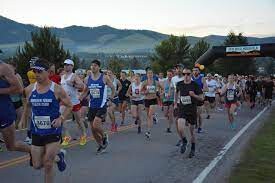
The marathon sold out in January, which is unprecedented. While organizers capped the races to 1,000 marathon runners and 3,000 half marathon runners because of construction and unknowns with the pandemic, they're still expecting it to impact all of Missoula.
“I think just bringing those dollars back to the community, the downtown community especially, hotels, restaurants, retail, all of that, it’s so important," Trisha Drobeck, marathon director, said. "I think everybody’s going to be just so excited to have them.”
Over at Destination Missoula, they said it's the largest event held in town over the summer.
The pandemic showed just how much the town's driven by events, so they're celebrating its return.
“It’s kind of like when we have Cat-Griz games… or something like that," Barb Neilan, the executive director, said. "There are times when we’ve had those higher numbers, where we’ve funneled people down into Hamilton and up to Polson and places like that to find a place to stay.”
The marathon is set for Sunday, June 26 at 6 a.m., but organizers say to expect downtown to be busy for the entire week leading up to it.
During this final stretch, the marathon is still in need of volunteers.
It takes a total of about 800 volunteers to pull this off, from cleaning up the course, to giving out water and medals.
(06/04/2022) ⚡AMPby Maria Anderson
Missoula Marathon
Half and full marathon in Missoula, Montana, in the city they call "The Garden City." Amazing participation by the entire town and county. Front lawn hose squads cool down the runners en route. Lots of rest stations. The full marathon is a Boston qualifier. Runner's World rated the course as one of the best overall road races. ...
more...San Diego Rock ‘n’ Roll Marathon on Sunday: What You Need to Know
Runners will pack central San Diego streets again Sunday as San Diego’s Rock ‘n’ Roll Marathon returns to its early June schedule.
The race resumed after its pandemic pause late last year, in October, with a new look and name. Root your favorite runner(s) on or just head out to see the competitors, crowds and other entertainment. But for motorists, there will be closures. Here’s the basics:

Weather
Runners and spectators can count on sunny and mild conditions, with highs expected to reach 68 Sunday, rising just a couple degrees from Saturday.
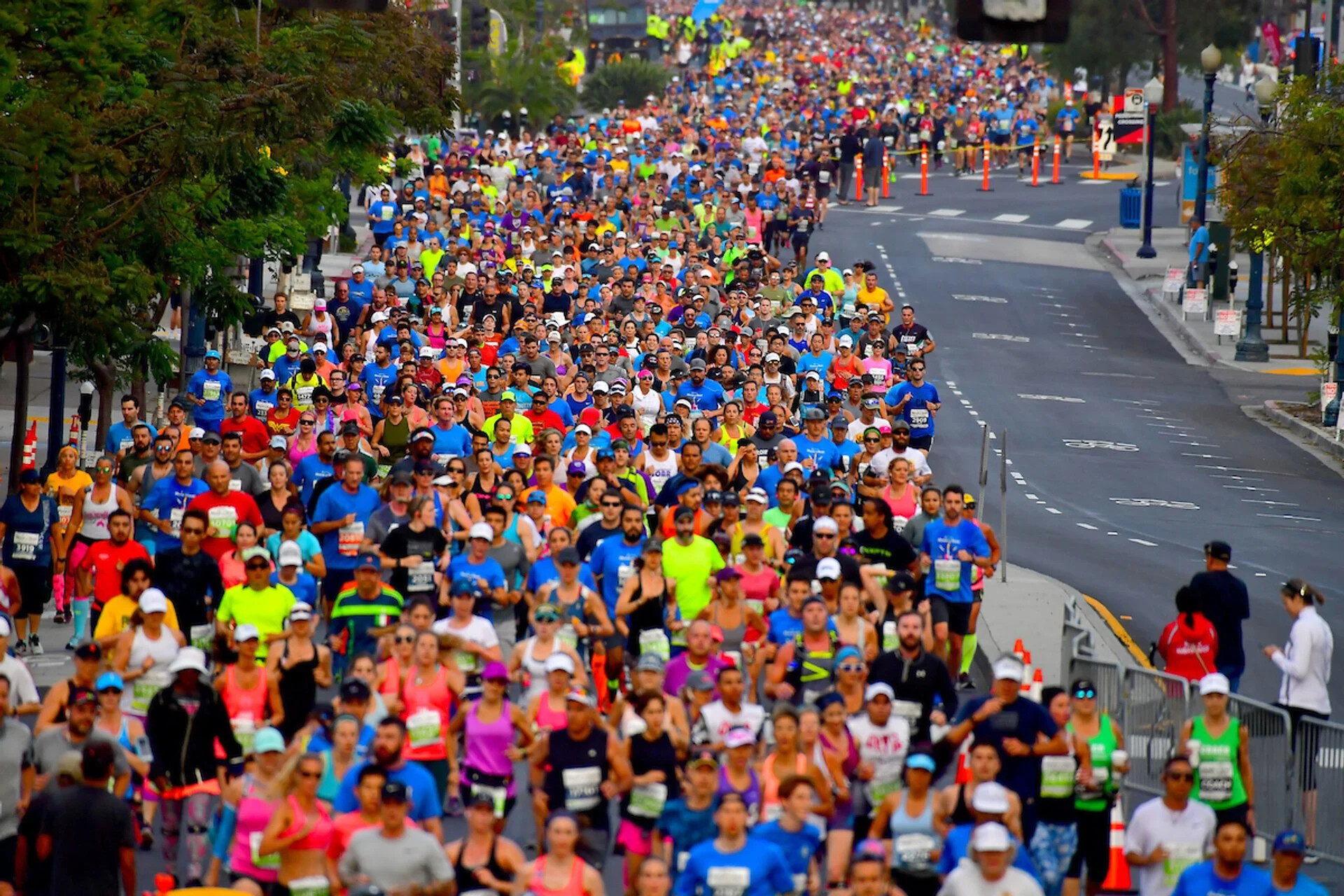
5K – A Day Early
Saturday matters because first up, there’s the 5K at Balboa Park, starting at 7 a.m. at President’s Way and Park Boulevard, heading north to Laurel Street and cutting through the park. Runners and walkers move on to Sixth Avenue before reaching the finish line on Balboa Drive.
Courses for Race Day
On Sunday, runners in both the full and half marathons kick off the day on near the northwest side of Balboa Park at 6:15 a.m. Spectators are welcome – cheering is free! – but motorists face many detours until the afternoon.
The race routes extend from the park through Hillcrest and east to Normal Heights to start, before runners on the shorter route shift to the south, through North Park and along Pershing Drive to the finish line on Union and Ash streets.
Marathon runners will double back through North Park all the way west to Mission Bay, before heading through Linda Vista and University Heights on the way back south past the park to the downtown finish line.
Closures
Most road closures and detours – including parts of state Route 163 and Interstate 5 – will be in effect from 5:30 a.m to 3:30 p.m. Police and volunteers will begin with soft closures along the entire route.
A few of the major affected streets include University Avenue, Adams Avenue, 30th Street, Sea World Drive, Sunset Cliffs Boulevard, Tecolote Road and North Harbor Drive.
In addition, Sixth Avenue and other streets near Balboa Park will close earlier, at 2 a.m., but re-open by 10 a.m.
Parking will be blocked off in some cases too. Streets will reopen on a rolling basis once the last participant has passed and volunteers have removed all course materials.
Transit options
The Metropolitan Transit System has added service for the marathon, starting at 4 a.m., including the Green, Blue and Orange trolley lines. Officials suggest the Green Line for spectators – its County Center/Little Italy stop is five blocks from the finish.
They also note that the Green Line stops at Old Town, Morena/Linda Vista and Fashion Valley offer prime viewing spots, with time to jump back aboard the Trolley to see the finish.
Nearly 20 bus lines, though, must make detours due to street closures. For a list of additional Sunday service and detours, see the MTS marathon page.
Entertainment
Enjoy performances throughout the route, from a variety of bands, impersonators and DJ’s. See the marathon list for which mile marker to choose. And there’s more! Head to Waterfront Park at 10:45 a.m. for the Finish Line Festival with headliner Matisyahu, along with a game zone, beer garden and food trucks.
(06/04/2022) ⚡AMPRock 'n' Roll San Diego Marathon Weekend
Run through historic neighborhoods including Balboa Park and Old Town. The Marathon, Half Marathon and Relay are packed with live entertainment on course that will keep you rockin’ all the way to the finish line. The Rock ‘n’ Roll Marathon Series is an awesome collection of running events centered on having fun running. Bands, cheerleaders and more fill the courses...
more...

